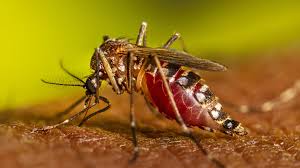Jammu & Kashmir Gets First Gen Z Post Office
Latest News: 19th December 2025, UPSC Preparation
Jammu & Kashmir marked a key milestone in postal modernisation with the inauguration of its first Gen Z Post Office at the AIIMS Vijaypur campus. The initiative is part of the Department of Posts’ wider effort to transform traditional campus post offices into technology-driven, youth-oriented service centres. With this launch, AIIMS Vijaypur has become the first AIIMS in India to host a Gen Z Post Office.
Inauguration at AIIMS Vijaypur Campus
The Gen Z Post Office was inaugurated on 17 December 2025 by Prof. (Dr.) Shakti Kumar Gupta, Executive Director and Chief Executive Officer of AIIMS Vijaypur, in the presence of Shri D. S. V. R. Murthy, Chief Postmaster General, Jammu & Kashmir Circle, and Shri Shah Nawaz Khan, Senior Superintendent of Post Offices, Jammu Postal Division. The event was attended by senior postal officials, faculty members, staff, and students, reflecting strong institutional collaboration.
Vision Behind the Gen Z Post Office
Addressing the gathering, Prof. (Dr.) Shakti Kumar Gupta highlighted that the campus-based Gen Z Post Office reflects AIIMS Vijaypur’s commitment to accessible, modern, and student-friendly public services. The concept is designed to align postal services with the expectations of younger citizens by adopting customer-centric and technology-enabled solutions. The initiative supports the broader goal of making public services more responsive to changing user behaviour.
Features and Youth-Centric Services
The Gen Z Post Office has been conceptualised specifically for Generation Z users. It offers a contemporary ambience, digital payment options, simplified service delivery, and integrated access to postal, banking, and insurance services under one roof. The facility also aims to promote awareness of postal savings schemes, India Post Payments Bank services, and other value-added offerings among students, healthcare professionals, and the wider campus community.
What to Note for Exams?
AIIMS Vijaypur is the first AIIMS in India to host a Gen Z Post Office.
The initiative is part of the Department of Posts’ campus modernisation drive.
Gen Z Post Offices focus on digital, youth-centric service delivery.
A special postal cancellation was issued on the inaugural day.
Symbol of Modern Postal Transformation
To mark the inauguration and its status as the first Gen Z Post Office in the Jammu & Kashmir Circle, a special postal cancellation was issued and impressed on all outgoing mail from the AIIMS Vijaypur Post Office on the opening day. The initiative underscores India Post’s ongoing transformation into a modern, connected, and future-ready service provider through innovation, inclusivity, and collaboration with leading institutions.
(NNI / Latest news / Latest news india / India latest news/UPSC Preparation)


India, UAE Launch Desert Cyclone II Military Exercise
Latest News: 18th December 2025, UPSC Preparation
India and the United Arab Emirates have launched the second edition of their joint military exercise, Desert Cyclone II, marking another step in deepening bilateral defence and strategic cooperation. The exercise is being conducted in Abu Dhabi from December 18 to 30 and focuses on enhancing joint operational capabilities in complex urban warfare environments.
Indian and UAE Army Contingents
According to the Ministry of Defence, the Indian Army contingent comprises 45 personnel, primarily drawn from a battalion of the Mechanised Infantry Regiment. The UAE Land Forces are represented by a contingent of similar strength from the 53 Mechanised Infantry Battalion. The balanced participation reflects the emphasis on equal engagement and shared learning between the two forces during the exercise.
Focus on Urban Warfare and Interoperability
The primary aim of Desert Cyclone II is to enhance interoperability and foster defence cooperation through joint training in urban settings. The exercise focuses on sub-conventional operations conducted under a United Nations mandate, preparing both armies for peacekeeping, counter-terrorism and stability operations. By training together in simulated built-up areas, the two forces aim to develop coordinated responses to modern security challenges.
Training Activities and Tactical Scope
Over nearly two weeks, troops from both countries will conduct a wide range of tactical drills. These include fighting in built-up areas, heliborne operations and detailed mission planning. The exercise also features the integration of unmanned aerial systems and counter-UAS techniques, reflecting the growing role of drones and counter-drone measures in contemporary urban combat scenarios.
What to Note for Exams?
Desert Cyclone II is the second joint military exercise between India and the UAE.
The exercise is being held in Abu Dhabi from December 18 to 30.
Indian troops are drawn mainly from the Mechanised Infantry Regiment.
The focus is on urban warfare and UN-mandated sub-conventional operations.
Strengthening Strategic and Defence Ties
Desert Cyclone II builds on recent high-level military engagements, including visits by senior UAE commanders to India in October and December 2025. The exercise underscores the growing strategic partnership and military diplomacy between the two nations. It aims to strengthen professional bonds, improve mutual understanding of tactics and procedures, and contribute to interoperable capabilities in support of regional peace, security and stability.
(NNI / Latest news / Latest news india / India latest news/UPSC Preparation)


Australia Set to Block Under-16s from Social Platforms Amid Safety Concerns
Latest News: 22nd November 2025, UPSC Preparation
Australia has expanded its forthcoming national ban on social media use for those aged 16 and under by adding Twitch to the restricted platforms list. The update comes ahead of the law’s rollout on 10 December, making Australia the first country to impose such wide-ranging age-based restrictions on social media access.
Revised List of Restricted Platforms
Regulators confirmed that Twitch will join major platforms such as Instagram, TikTok and Snapchat under the ban. Companies that fail to take reasonable compliance measures may face penalties reaching 49.5 million Australian dollars. Pinterest, however, has been excluded after assessments found its content generally low-risk compared with services known for real-time or high-engagement interactions.
Rationale Behind Targeting Twitch
Authorities highlighted Twitch’s live-streaming model as a primary concern. Real-time broadcasts allow unfiltered interactions that can expose minors to harassment, explicit material and harmful behaviour. Officials argue that the platform’s limited safeguards for spontaneous content make it unsuitable for young users under the new policy framework.
Part of a Broader Online Safety Overhaul
The decision forms part of reforms under the Online Safety Act, which is undergoing review due to concerns about screen addiction, grooming risks and exposure to inappropriate content. The government maintains that strong restrictions are necessary to protect mental health and prevent cyberbullying among teenagers, though critics warn the approach may limit access to educational and creative communities.
Exam Oriented Facts
Australia’s age-based social media ban for under-16s takes effect on 10 December.
Non-compliant platforms may face penalties up to 49.5 million Australian dollars.
Twitch was included due to risks from unfiltered live-stream interactions.
Pinterest remains accessible because of its comparatively low-risk content model.
Industry Response and Expected Impact
Twitch has yet to issue an official reaction, though analysts predict a significant impact on its Australian audience due to strong youth participation. Pinterest welcomed its exclusion, reinforcing its positioning around inspirational and moderated content. Observers expect ongoing debate as the new restrictions test the balance between digital safety and online access for young users.
(NNI / Latest news / Latest news india / India latest news/UPSC Preparation)


At Johannesburg G20, India to Spotlight Cross-Border Terror Challenges
Latest News: 21st November 2025, UPSC Preparation
India has confirmed that Prime Minister Narendra Modi will attend the G20 Leaders’ Summit in Johannesburg from 21 to 23 November, where he will speak in all three sessions. New Delhi is preparing to firmly present its concerns on terrorism, seeking strong language in the Joint Declaration alongside broader discussions on global economic recovery and sustainability.
Focus on Counterterrorism in the Joint Declaration
India is expected to advocate for clearer commitments on countering terrorism, including global action against states supporting extremist networks. Officials emphasised that terrorism remains a central national priority, even as the G20 primarily focuses on economic issues. India aims to ensure that concerns of the Global South, including security challenges, find substantial mention in the final document.
Summit Themes and India’s Policy Agenda
The three Summit sessions will cover inclusive and sustainable economic growth, disaster risk reduction, energy transitions, climate change, food systems, critical minerals, decent work and artificial intelligence. Modi will detail India’s views on fair market access, development financing, and resilient global systems. The discussions come amid heightened geopolitical tensions and trade-related friction.
Diplomatic Engagements and Global Representation
Modi will also participate in the IBSA Leaders’ Meeting alongside Brazil and South Africa, underscoring cooperation among major democracies of the Global South. Several world leaders, including the US President, Russian President and Chinese President, will skip the Summit, with countries delegating alternate representatives. Bilateral meetings are planned on the sidelines to advance India’s strategic and economic engagements.
Exam Oriented Facts
India aims to include counterterrorism commitments in the G20 Joint Declaration.
The Summit takes place in Johannesburg from 21–23 November 2025.
PM Modi will speak in all three formal sessions and attend the IBSA meeting.
The G20 represents 85% of global GDP, 75% of trade and two-thirds of the world’s population.
South Africa’s Priorities and Broader Global Context
The host nation is focusing on disaster relief, debt sustainability, climate finance, and critical minerals. India’s participation highlights its expanding role in global governance mechanisms, contributing both economic perspectives and security-driven concerns to shape cooperative global outcomes.
(NNI / Latest news / Latest news india / India latest news/UPSC Preparation)


Oceansat Mission To Usher In India’s First Commercial PSLV Launch In 2026
Latest News: 20th November 2025, UPSC Preparation
India is set to enter a new phase in its space journey with the country’s first commercially built PSLV rocket preparing for its maiden mission early next year. The launch will place the Oceansat satellite in orbit, marking a major shift toward industry-led rocket production.
HAL–L&T Build First Industry-Manufactured PSLV
The consortium of Hindustan Aeronautics Limited and Larsen & Toubro has manufactured the entire PSLV rocket independently for the first time. The development reflects India’s strategy to transition proven launch vehicle production to the private sector while ISRO focuses on advanced research and upcoming missions.
Multiple Launches Expected in Coming Years
Industry officials anticipate two to three PSLV launches next year, driven by increasing global and domestic demand for satellites. The consortium is already supplying hardware and preparing for future missions as part of its contract to build five PSLV-XL rockets, with potential for additional orders due to rising satellite requirements.
ISRO’s Strategic Shift and Industry Support
ISRO’s decision to step back from full-scale PSLV manufacturing aims to strengthen private sector capability in mainstream space operations. While the consortium faced technical challenges in certain components, ISRO provided crucial assistance to ensure seamless progress. The manufacturing partnership is seen as central to building a competitive commercial launch ecosystem in India.
Exam Oriented Facts
The first industry-built PSLV will launch Oceansat early next year.
HAL and L&T jointly manufactured the rocket end-to-end.
ISRO signed a contract in 2022 for five PSLV-XL rockets.
Technology for SSLV production has been transferred fully to HAL.
Growing Commercial Interest in Indian Launch Services
The HAL–L&T consortium is receiving inquiries from domestic and global customers seeking launch opportunities. With India’s commercial space sector expanding rapidly, industry-led rocket manufacturing is expected to unlock greater capacity, competitive pricing and increased participation in the global satellite launch market.
(NNI / Latest news / Latest news india / India latest news/UPSC Preparation)


Internet Era Influence: ‘Parasocial’ Crowned Word of the Year 2025
Latest News: 19th November 2025, UPSC Preparation
The Cambridge Dictionary has named “parasocial” its Word of the Year for 2025, reflecting rising public interest in one-sided emotional bonds that people form with celebrities, influencers and increasingly, artificial intelligence systems. The term’s surge mirrors changes in digital behaviour and the evolution of online relationships across platforms.
Meaning and Origins of the Term
“Parasocial” describes a one-sided connection someone feels toward a public figure they have never met. Originally coined in 1956 by American sociologists Donald Horton and Richard Wohl, the term referred to viewers’ perceived closeness with television personalities. Over time, it has expanded to include relationships with online creators and virtual agents.
Why the Word Was Chosen
The dictionary noted a significant rise in searches for the term in 2025. High-profile events, including celebrity announcements and incidents involving social media influencers, prompted widespread curiosity about the concept. The dictionary also updated its definition to reflect the growing relevance of AI systems, acknowledging relationships people form with chatbots and virtual companions.
Examples and Contemporary Relevance
Public reactions to celebrity news show how strongly people identify with figures they follow online. Researchers highlight that these bonds can create an illusion of intimacy and influence behaviour. Experts also warn of increasing emotional investment in AI tools, with some users treating them as trusted confidants or companions, underscoring the need to understand this expanding psychological space.
Exam Oriented Facts
“Parasocial” was coined in 1956 by Horton and Wohl.
The term describes a one-way emotional connection with a public figure or AI.
Cambridge Dictionary selected it as the 2025 Word of the Year.
The dictionary added over 6,000 new words, including popular internet terms.
Debate on Healthy and Unhealthy Bonds
Experts state that parasocial connections are not inherently harmful; they can motivate, educate and support identity formation, especially among young people. However, they can become unhealthy if they replace real relationships or foster unrealistic expectations. As digital life deepens, understanding these bonds is becoming essential to discussions on mental health, online behaviour and cultural trends.
(NNI / Latest news / Latest news india / India latest news/UPSC Preparation)


Karnataka Launches KEO, an Affordable AI-Ready Personal Computer
Latest News: 18th November 2025, UPSC Preparation
Karnatka has introduced KEO, a compact and low-cost AI-ready personal computer developed to bridge the digital learning divide across the State. Designed in collaboration with KEONICS, the device aims to expand access to computing for students, households, and public institutions.
Purpose Behind the Initiative
The State highlighted that fewer than 10 per cent of Indian households own a computer, with Karnataka ranking only slightly higher. Studies show that the absence of computing devices limits students’ participation in digital learning, contributing to dropout rates. KEO has been positioned as an inclusion-focused device intended to support education, skilling, and digital livelihoods.
Technical Features and AI Capabilities
KEO is built on an open-source RISC-V processor and operates on a Linux-based system. It includes 4G, Wi-Fi, Ethernet, USB-A and USB-C ports, HDMI output, and audio support. A key feature is its on-device AI core, allowing local processing without internet access. It comes preloaded with BUDDH, an AI tool based on the Karnataka DSERT syllabus to assist students in low-connectivity areas.
Applications Across Sectors
The device supports tasks ranging from online learning and programming to basic machine control and visual computing. Its capabilities make it suitable not only for education through the PU level but also for government offices, health centres, and police stations where routine documentation and web-based tasks are required.
Exam Oriented Facts
KEO is an AI-ready personal computer developed by Karnataka and KEONICS.
It uses a 64-bit quad-core RISC-V processor with a Linux-based OS.
The device includes an on-device AI core delivering around 4–5 TOPS.
KEO comes preloaded with BUDDH, an AI agent trained on the DSERT syllabus.
Deployment and Distribution Plans
KEONICS will manage distribution, with initial pre-orders already placed for school deployments. The State expects demand to scale across panchayat libraries, schools, colleges, hostels, and government departments. Wider adoption is anticipated as Karnataka seeks to promote accessible computing and expand digital participation across communities.
(NNI / Latest news / Latest news india / India latest news/UPSC Preparation)


Global GHG Emissions Poised for Record High in 2025
Latest News: 14th November 2025, UPSC Preparation
The latest Global Carbon Budget assessment warns that worldwide greenhouse gas emissions are set to reach unprecedented levels in 2025, despite a decade of commitments under the Paris Agreement. The findings, released during COP30 in Belem, indicate that fossil fuel-linked emissions continue to rise, underscoring widening gaps between climate pledges and actual progress.
Record Fossil Fuel Emissions and Rising Global Output
The study projects global fossil fuel emissions at 38.1 billion tonnes in 2025, marking a historic peak. This reflects an estimated 1.1% increase from 2024, continuing an upward trend that has pushed global GHG output to around 10% above 2015 levels. Researchers caution that at current rates, the remaining carbon budget for limiting warming to 1.5°C could be depleted within four years.
India’s Emissions Growth Slows Amid Renewable Push
India is expected to contribute about 3.23 billion tonnes of emissions in 2025. Although its output is still increasing, growth has slowed to around 1.4%, attributed to expanded solar generation and reduced cooling needs due to an early monsoon. Analysts note that coal consumption growth has weakened significantly, mirroring similar patterns observed in China.
Major Emitters: Sharp Rise in the United States
China remains the world’s top emitter with a projected 12.3 billion tonnes this year. The United States follows at five billion tonnes, recording the steepest annual rise among major economies at approximately 1.9%. This marks a reversal from previous years of flat or negative growth. India ranks third in absolute emissions but remains far lower on a per capita basis.
Exam Oriented Facts
Global fossil fuel emissions are projected to reach 38.1 billion tonnes in 2025.
The remaining carbon budget for 1.5°C may be exhausted by 2029.
India’s emissions are expected to rise by 1.4% in 2025.
Oil and gas together contribute 55% of global fossil fuel emissions.
Growing Scientific Concern Over Warming Limits
Experts warn that maintaining the 1.5°C target is increasingly unlikely without immediate and sharp reductions in fossil fuel use. The report also highlights that over 35 countries have managed to cut emissions while expanding their economies, showing that decoupling is feasible. However, researchers stress that unless global oil and gas dependence declines rapidly, climate risks will escalate beyond manageable limits.
(NNI / Latest news / Latest news india / India latest news/UPSC Preparation)


Giant Stick Insect Species Discovered in Australia
Latest News: 13th November 2025, UPSC Preparation
A new giant stick insect species has been identified in the rainforests of North Queensland, adding to Australia’s remarkable record of unique wildlife discoveries. The insect, named “Acrophylla alta”, is believed to be the heaviest stick insect ever recorded in the country.
Discovery in the Queensland Rainforest
Researchers uncovered the species during field studies in the mountain rainforests of tropical North Queensland. Despite its impressive size, the insect remained unknown for years due to its camouflage and its habitat high in the forest canopy, an area rarely accessible to scientists.
Size and Distinctive Characteristics
The species can grow up to 40 centimetres in length, making it one of the largest insects found in Australia. Early examinations suggest that its heavy body mass sets it apart from other long but lightweight stick insects in the region. One specimen studied weighed around 44 grams, making it significantly heavier than previously recorded giants.
Habitat and Ecological Adaptation
“Acrophylla alta” inhabits altitudes between 500 and 1,200 metres in cool, wet rainforest environments. Scientists believe its large size aligns with Bergmann’s rule, which proposes that animals in colder climates evolve larger bodies to retain heat. Its remote and elevated habitat further explains why the species remained undetected.
Exam Oriented Facts
“Acrophylla alta” was discovered in North Queensland’s high-altitude rainforests.
It may be the heaviest stick insect recorded in Australia.
The species can grow up to 40 centimetres long.
Its size is thought to be an adaptation to cool, high-altitude conditions.
The identification of “Acrophylla alta” highlights the rich biodiversity of Australia’s rainforests and the potential for more hidden species in remote ecosystems. The finding underscores the importance of continued ecological research to uncover the lesser-known inhabitants of these diverse natural landscapes.
(NNI / Latest news / Latest news india / India latest news/UPSC Preparation)


Shaikha Nasser Al Nowais Becomes First Woman to Lead UN Tourism
Latest News: 10th November 2025, UPSC Preparation
In a landmark achievement for the United Arab Emirates and the global tourism sector, Shaikha Nasser Al Nowais has been appointed as the first-ever woman to head UN Tourism. Her appointment was confirmed during the 123rd UN Tourism Executive Council session in Segovia, Spain, following a majority vote. Once formally ratified by the UN General Assembly, she will assume office in January 2026 for a four-year term, marking a major stride toward gender equality in international leadership.
Breaking a 50-Year Barrier
Shaikha Al Nowais’s appointment shatters a 50-year precedent since the organisation’s founding in 1975. She will lead the United Nations’ specialised agency responsible for promoting responsible, sustainable and universally accessible tourism. The UAE leadership celebrated the milestone, with President Sheikh Mohamed bin Zayed Al Nahyan describing it as proof of the nation’s dedication to women’s empowerment and global cooperation. Al Nowais herself dedicated the achievement to Her Highness Sheikha Fatima bint Mubarak, calling her “the first and enduring supporter of Emirati women.”
A Trailblazing Emirati Leader
With over 16 years of professional experience, Shaikha Al Nowais has held senior roles shaping both business and tourism in the UAE and abroad. She served as Corporate Vice President at Rotana Hotels, Chair of the Abu Dhabi Chamber’s Tourism Working Group, and a board member of the Abu Dhabi Businesswomen Council. Her background in corporate governance and strategic development has equipped her to guide the UN agency through its evolving challenges, reinforcing the UAE’s global image as a champion of diversity and leadership excellence.
Exam Oriented Facts
Shaikha Nasser Al Nowais is the first woman to head UN Tourism since its founding in 1975.
Her four-year term begins in January 2026.
The appointment was confirmed during the 123rd UN Tourism Executive Council session in Spain.
She has previously served as Corporate Vice President at Rotana Hotels.
Vision for Global Tourism
As Secretary-General, Al Nowais plans to implement a Five-Pillar Vision focusing on responsible tourism, digital innovation, sustainable financing, youth and women empowerment, and transparent governance. She aims to foster environmentally conscious travel, advance the use of Artificial Intelligence in tourism, and strengthen cooperation between nations. Her leadership is expected to set a new global benchmark for inclusivity and innovation in the tourism industry, while symbolising the UAE’s long-term commitment to advancing women’s roles in international governance.
(NNI / Latest news / Latest news india / India latest news/UPSC Preparation)


Maldives Enforces World’s First Generational Tobacco Ban
Latest News: 04th November 2025, UPSC Preparation
The Maldives has become the first country globally to impose a generational ban on tobacco and vaping, marking a historic step towards a smoke-free future. The law, effective from November 1, 2025, prohibits anyone born after January 1, 2007—including tourists—from purchasing or using tobacco products.
Groundbreaking Public Health Legislation
The ban, introduced through the Second Amendment to the Tobacco Control Act, was ratified by President Mohamed Muizzu earlier this year. It forbids the sale and use of all tobacco forms, including cigarettes and smokeless products, for individuals born after the 2007 cut-off date. The Maldives Ministry of Health hailed it as a “historic milestone” that strengthens the nation’s commitment to the World Health Organization’s Framework Convention on Tobacco Control (WHO FCTC).
Comprehensive Ban on Vaping and E-Cigarettes
Unlike similar policies elsewhere, the Maldives’ law extends to all electronic smoking devices. The import, sale, possession, and use of vaping products are banned across every age group. Violations attract heavy penalties: retailers selling to underage buyers face fines up to 50,000 Maldivian rufiyaa (around ₹2.9 lakh), while individuals using e-cigarettes risk fines of 5,000 rufiyaa (about ₹29,000).
Health Campaign and National Support
A national torch relay on November 1 celebrated the law’s enforcement, featuring schoolchildren, community leaders, and health officials. First Lady Saajidhaa Mohamed described the initiative as “a bold, evidence-based step to break the cycle of addiction.” President Muizzu emphasised that the legislation forms part of broader health reforms to promote sustainable, healthy lifestyles across the island nation.
Exam Oriented Facts
Law effective from 1 November 2025 bans tobacco use for those born after 1 January 2007.
Maldives is the first country to implement a generational tobacco ban worldwide.
Vaping and e-cigarettes are banned across all age groups, including tourists.
Fines: 50,000 MVR for illegal tobacco sales and 5,000 MVR for individual use violations.
Global Context and Future Outlook
The Maldives’ ban surpasses New Zealand’s earlier tobacco-free generation law, repealed in 2024 before implementation. The policy aligns with the global Tobacco Endgame movement, which aims to eliminate tobacco use through phased regulatory measures. As tobacco-related diseases continue to claim over seven million lives annually, the Maldives’ bold stance sets a precedent for nations seeking to protect future generations from addiction and preventable deaths.
(NNI / Latest news / Latest news india / India latest news/UPSC Preparation)


Green Sea Turtle Status Upgraded to Least Concern
Latest News: 13th October 2025, UPSC Preparation
The International Union for Conservation of Nature (IUCN) has upgraded the Red List status of the green sea turtle (Chelonia mydas) from Endangered to Least Concern. This change reflects decades of global conservation efforts. Despite ongoing threats, the green turtle population has risen by nearly 28 per cent since the 1970s. The species remains vital to marine ecosystems and human cultures worldwide.
Ecological Importance of Green Sea Turtles
Green turtles are keystone species in tropical marine environments. They maintain coral reefs and seagrass meadows, which support diverse marine life. Their grazing helps keep seagrass beds healthy and prevents overgrowth. These turtles also have cultural, spiritual, and economic roles in many coastal communities.
Conservation Measures Leading to Recovery
Efforts have focused on protecting nesting females and eggs on beaches. Community-based initiatives have reduced unsustainable harvesting for food and trade. The use of Turtle Excluder Devices in fishing gear has lowered accidental capture. Successful projects in Ascension Island, Brazil, Mexico, and Hawai’i have helped some subpopulations approach pre-exploitation numbers.
Remaining Threats to Green Turtles
Despite population gains, green turtles are still far below historic levels before European colonisation. Direct harvesting, both commercial and non-subsistence, remains a major threat. Fisheries bycatch causes mortality. Coastal and marine habitat destruction from development continues to harm nesting and feeding grounds.
Impact of Climate Change
Climate change is increasingly threatening green turtle habitats. Rising temperatures affect nesting beaches and hatchling survival. The Southwest Pacific subpopulation, including Raine Island in Australia, has seen declining hatchling production over several years. This signals urgent need for climate resilience in conservation plans.
Future Conservation Priorities
Sustained global conservation is essential to maintain and build on current recovery. Protecting habitats is as important as protecting turtles themselves. Healthy oceans and coasts are critical for turtle survival and human well-being. Coordinated efforts across countries and communities remain key to long-term success.
(NNI / Latest news / Latest news india / India latest news/UPSC Preparation)


Mission Sudarshan Chakra
Latest News: 07th October 2025, UPSC Preparation
India is advancing its air defence capabilities through Mission Sudarshan Chakra. This ambitious project aims to create a nationwide, multilayered air defence shield by 2035. It will integrate thousands of radars, satellites, and directed energy weapons (DEWs) into a single, cohesive network. The system will protect strategic locations and population centres from aerial threats such as hostile aircraft, drones, and missiles.
Recent Developments and Strategic Context
Mission Sudarshan Chakra was announced by Prime Minister Narendra Modi as a comprehensive, networked defence system. Defence Minister Rajnath Singh brought into light its focus on indigenous technology to ensure self-reliance. The Chief of Defence Staff, General Anil Chauhan, described it as India’s version of the Iron Dome, capable of both defence and offensive operations. The Defence Research and Development Organisation (DRDO) recently tested an integrated air defence weapon system combining missiles and lasers, marking a key milestone.
Components of the Defence Network
The shield will link 6,000 to 7,000 radars, including Over-the-Horizon (OTH) radars that detect threats far beyond the visible horizon. It will also incorporate 52 new surveillance satellites by 2030 under the Space-Based Surveillance programme. Directed energy weapons, primarily laser-based systems, will neutralise enemy targets swiftly. These components will be integrated with missile systems, anti-drone technologies, and air defence guns to create a layered defence.
Integration and Technology Use
Mission Sudarshan Chakra will unify assets from the armed forces, paramilitary, defence PSUs, private sector, and R&D bodies. Artificial intelligence, big data analytics, quantum computing, and large language models will be crucial for real-time threat analysis and decision-making. The system will manage colossal data streams to detect, identify, and neutralise threats efficiently.
Scope and Coverage Expansion
Currently, India’s air defence mainly protects military and strategic installations. Sudarshan Chakra will extend coverage to key urban centres and critical infrastructure nationwide. This expansion aims to shield India’s population and assets against modern aerial threats in a rapidly evolving warfare environment.
Indigenous Development and Global Integration
Most technologies and platforms will be developed domestically, supporting India’s push for self-reliance in defence. However, existing global systems will also be integrated to form a consolidated network. This hybrid approach ensures advanced capability while encouraging indigenous innovation.
(NNI / Latest news / Latest news india / India latest news/UPSC Preparation)


Amazon Flying Rivers Threatened by Deforestation Impact
Latest News: 05th October 2025, UPSC Preparation
The Amazon rainforest faces increasing droughts and ecological stress in 2025. Scientists link these changes to the disruption of flying rivers — atmospheric water flows that carry moisture from the Atlantic Ocean across South America. Deforestation in the southern Amazon weakens these flying rivers, reducing rainfall and risking a shift from rainforest to savanna in vulnerable regions.
What Are Flying Rivers?
Flying rivers are vast streams of water vapour transported by trade winds from the Atlantic Ocean westward across the Amazon basin. Trees absorb water from the soil and release it into the atmosphere through transpiration. This process recycles moisture thousands of miles inland, sustaining rainfall deep within the forest.
Role of the Amazon Forest as a Water Pump
The Amazon acts like a giant pump, moving moisture westward. When trees are cut down, less water vapour is released. This reduces the volume of flying rivers and weakens rainfall patterns. The forest’s health is crucial to maintaining this natural water cycle.
Impact of Deforestation on Rainfall
Southern Brazil, Peru, and Bolivia experience the most intense deforestation. This region lies along the dry-season path of flying rivers. Tree loss here diminishes rainfall in downstream areas including Peru’s Manu National Park. Reduced rains cause droughts, crop failures, and threaten Indigenous livelihoods.
Signs of Ecological Disruption
Indigenous communities report changes in ecological calendars. Unpredictable rain affects planting, fishing, and hunting seasons. Hydroelectric power generation suffers as river flows decrease. The dry season has lengthened by five weeks with 20 to 30% less rainfall compared to decades ago.
Risk of Amazon Tipping Point
Scientists warn that if deforestation exceeds 20-25% and global warming surpasses 2°C, the Amazon may irreversibly shift to savanna. This would release vast carbon stores and disrupt global climate. The tipping point will affect biodiversity, water security, and weather stability far beyond the region.
Conservation and Restoration Strategies
Protecting intact forests and Indigenous land rights is vital. Large-scale restoration of deforested areas is necessary to revive flying rivers. Governments should create conservation policies that protect atmospheric water flows alongside forests. Regional cooperation across Amazonian countries is essential for effective solutions.
Future Challenges and Opportunities
Infrastructure projects like Brazil’s BR-319 highway risk accelerating deforestation fronts. Balancing development and conservation requires careful planning. Scientific monitoring of flying rivers helps identify vulnerable zones. Immediate action can still preserve the Amazon’s ecological functions and global climate benefits.
(NNI / Latest news / Latest news india / India latest news/UPSC Preparation)
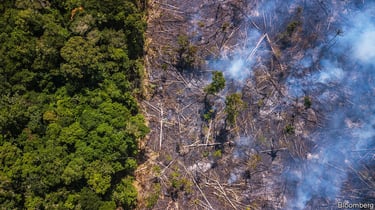

Exercise Achook Prahar 2025
Latest News: 31st August 2025, UPSC Preparation
The Indian Army’s Spear Corps and the Indo-Tibetan Border Police (ITBP) conducted a major joint firepower exercise named Achook Prahar in central Arunachal Pradesh from 25 to 28 August 2025. This drill tested their combat readiness and operational synergy under simulated battlefield conditions. The exercise demonstrated integrated use of mortars, machine guns, rockets, and grenades, denoting the forces’ ability to operate cohesively in high-altitude terrain.
Background
The ITBP was established in 1962 following the Sino-Indian War to guard India’s border with Tibet. Initially part of the Central Reserve Police Force (CRPF), it became an independent central armed police force under the Ministry of Home Affairs in 2004. Its motto is Shaurya-Dridhata-Karma Nishtha meaning Valour, Determination, and Devotion to Duty. The ITBP is specialised in mountain warfare and operates across a 3,488 km border with China at altitudes from 9,000 to 18,750 feet.
Exercise Achook Prahar
The four-day exercise involved the Indian Army’s SpearHead Division and ITBP personnel. It focused on validating operational preparedness through joint drills simulating real combat scenarios. The forces used mortars, machine guns, rockets, and grenades to test accuracy and response coordination. The exercise demonstrated high interoperability, essential for effective defence in Arunachal Pradesh’s challenging terrain.
Significance
Achook Prahar showcased seamless integration of firepower and tactical coordination between the Army and ITBP. Such exercises enhance battlefield effectiveness by improving communication, joint decision-making, and rapid response capabilities. This collaboration is crucial for securing sensitive border areas prone to frequent tensions.
Operational Challenges
Operating in Arunachal Pradesh involves harsh weather, difficult terrain, and limited infrastructure. Troops require specialised training in mountain warfare, acclimatisation, and survival skills. The ITBP’s expertise in mountaineering and skiing complements the Army’s combat capabilities. Joint exercises help overcome logistical and operational challenges unique to high-altitude conflict zones.
Role of Central Armed Police Forces
The ITBP is one of India’s Central Armed Police Forces tasked with border security and internal law enforcement. It functions under the Ministry of Home Affairs. These forces provide critical support to the Army during peacetime and conflict by maintaining vigilance and conducting specialised operations. Their coordination ensures a comprehensive security framework along India’s frontiers.
(NNI / Latest news / Latest news india / India latest news/UPSC Preparation)


PelV-1
Latest News: 16th August 2025, UPSC Preparation
Recent research in the North Pacific Subtropical Gyre has revealed a giant virus named PelV-1. This virus infects the plankton Pelagodinium and possesses a tail far longer than any previously identified. Measuring 2.3 micrometres, the tail is about 19 times the length of the coronavirus that causes COVID-19. This discovery provides new vital information about marine viruses and their ecological roles.
Discovery and Habitat
PelV-1 was found at Station ALOHA, north of Hawaii, by sampling seawater 25 metres below the surface. Scientists isolated Pelagodinium plankton and detected the virus as a hitchhiker. Viruses infecting dinoflagellates like Pelagodinium are extremely rare, with only two other large DNA viruses known to target this group.
Unique Morphology
PelV-1 has a 200-nanometre capsid and an exceptionally long tail measuring 2.3 micrometres. This tail is the longest viral appendage discovered to date. Unlike most viruses, which lack tails or have very small ones, PelV-1’s tail likely aids in attaching to and entering host cells. Time-lapse imaging shows the tail attaching to plankton cells during infection, but it disappears once the virus is inside, suggesting the tail forms only outside the host.
Genomic Features
The virus has a large genome of 459,000 base pairs containing 467 genes. Remarkably, some genes are typically found only in living cells. These include genes for energy production, light-harvesting proteins, and rhodopsins—molecules that capture sunlight. This suggests PelV-1 may use sunlight to power part of its lifecycle, fitting its habitat in sunlit ocean layers.
Ecological Importance
PelV-1 infects Pelagodinium, an important marine phytoplankton consumed by zooplankton and fish. About this virus helps explain energy flow and nutrient cycling in ocean ecosystems. It may also shed light on the dynamics of harmful algal blooms, which impact marine life and human health.
Related Viruses and Future Research
Alongside PelV-1, researchers discovered a rarer virus called co-PelV in the same culture. Co-PelV lacks a tail but carries metabolic genes that could influence host behaviour and energy use. Future studies aim to understand how PelV-1 assembles its tail and the role it plays in infection. Scientists also seek to find if other long-tailed viruses exist in the oceans.
Significance in Virology
Giant viruses like PelV-1 challenge traditional views of viruses. Discovered over 20 years ago, giant viruses are much larger than typical viruses and carry thousands of genes. These findings continue to reshape biological classifications and reveal new complexities in viral life.
(NNI / Latest news / Latest news india / India latest news/UPSC Preparation)


Sea of Galilee Turns Red
Latest News: 11th August 2025, UPSC Preparation
The Sea of Galilee in Israel displayed an unusual red hue over several days. Israeli authorities have investigated and explained the phenomenon as a natural occurrence linked to algae growth. The event marks growing concerns about climate change and its impact on freshwater ecosystems worldwide.
Red Colouration
The Sea of Galilee, Israel’s largest freshwater lake, changed colour to red due to an algal bloom. Officials confirmed the water remains safe for humans. The green algae Botryococcus braunii, common in the lake, produces red pigments under sunlight. This pigment accumulation caused the striking red tint. The Water Ministry continues to monitor the lake’s water quality and ecosystem health.
Botryococcus Braunii
Botryococcus braunii is a green algae from the Chlorophyta group. It produces carotenoid pigments that turn red in sunlight. Known for producing hydrocarbons, this algae is studied for biofuel potential. Its sudden bloom in the Sea of Galilee is unusual but not harmful to humans. Similar algae blooms have been recorded in Israel before, including in the Dead Sea area in 2022.
Algae Blooms and Climate Change
Global warming increases sea and lake temperatures, creating ideal conditions for algae blooms. Nutrient levels, especially nitrogen and phosphorus, further boost algae growth. These blooms can harm aquatic ecosystems by blocking sunlight and reducing oxygen when algae decompose. The Sea of Galilee’s red algae bloom is part of a wider pattern linked to climate change impacts on freshwater bodies.
Geographical and Historical Significance of the Sea of Galilee
The Sea of Galilee is about 21 km long and 13 km wide, covering 166 km². It lies 209 metres below sea level, making it the lowest freshwater lake on Earth. Fed mainly by the Jordan River, it sits in the Jordan Rift Valley formed by tectonic plate movements. The lake is known by several names, including Lake Tiberias and Yam Kinneret. It holds biblical importance and remains a vital source of fish and tourism.
Ecological Concerns and Monitoring
Though the algae bloom does not pose a direct health risk, it threatens the lake’s ecosystem. Thick algae layers reduce sunlight penetration, affecting underwater life. Oxygen depletion from algae decay can cause hypoxia, endangering fish and other organisms. Continuous monitoring by Israeli authorities aims to manage these risks and preserve the lake’s ecological balance.
(NNI / Latest news / Latest news india / India latest news/UPSC Preparation)


Project Cimon
Latest News: 02nd August 2025, UPSC Preparation
The International Space Station (ISS) has recently integrated advanced artificial intelligence (AI) robots to assist astronauts during extended missions. Key among these is Cimon, an AI-powered companion designed to ease crew workload and improve operational efficiency. Alongside Cimon, NASA’s Astrobee robots support various station tasks, marking a new era of human-machine collaboration in space.
What is Cimon?
Cimon, short for Crew Interactive MObile companioN, is an AI assistant developed by Airbus, IBM, and the German Space Agency. It was launched to the ISS in 2018. This voice-controlled robot floats freely inside the station, providing hands-free support to astronauts. It acts as a database, computer, and mobile camera, aiding scientific experiments and maintenance work.
Functions and Features of Cimon
Cimon helps astronauts by displaying step-by-step instructions and video tutorials in their field of view. This reduces errors during complex tasks. Voice commands allow crew members to access information without using their hands. The robot also records experiments through its mobile camera, enabling real-time monitoring or later review by ground teams.
Astrobee Robots and Their Roles
The Astrobee team includes three cube-shaped robots named Bumble, Honey, and Queen. Funded by NASA’s Game Changing Development program, these robots perform autonomous or remote-controlled tasks. They assist with inventory management and environmental monitoring aboard the ISS. Astrobees complement Cimon by handling routine operational duties, freeing astronauts for more critical work.
Impact on Astronaut Wellbeing and Mission Efficiency
Beyond technical support, Cimon aims to reduce astronaut stress linked to isolation and group dynamics. It serves as a social companion to improve mental health during long missions. By automating routine tasks and facilitating learning, AI assistants help astronauts manage time better and focus on scientific objectives.
Future Prospects for AI in Space Exploration
Data from Cimon and Astrobee deployments will guide future AI integration in space and Earth-based fields such as education, healthcare, and industrial automation. As missions to the Moon, Mars, and beyond become more demanding, AI companions will be crucial for mission success and crew safety.
(NNI / Latest news / Latest news india / India latest news/UPSC Preparation)


Uttarakhand Geothermal Energy Policy 2025
Latest News: 12th July 2025, UPSC Preparation
The Uttarakhand government approved the Geothermal Energy Policy 2025 to boost exploration and development of geothermal resources. This policy aims to promote clean energy, reduce carbon emissions, and enhance energy security. It targets power generation, heating, cooling, water purification, and community development using geothermal sites across the state.
Policy Objectives and Implementation
The policy encourages scientific and technical research on geothermal energy. It supports sustainable and economically viable projects. The Energy Department will implement the policy in coordination with Uttarakhand Renewable Energy Development Agency (UREDA) and Uttarakhand Jal Vidyut Nigam Ltd (UJVNL). Projects will be allotted for up to 30 years through competitive bidding or other methods. Both public and private entities can participate.
Geological Basis
Geothermal energy in Uttarakhand arises from hot springs formed by subsurface water heated near tectonic faults. The Main Central Thrust fault line, where the Indian and Eurasian plates meet, hosts many geothermal sources. Heat is generated by volcanic activity and rock formation deep underground. Water passing through these zones emerges as hot springs, such as those at Gaurikund.
Significance of Geothermal Energy
Geothermal energy is a renewable source produced by the Earth’s internal heat from radioactive decay. It provides stable baseload power available 24/7. India has 381 thermally anomalous sites with a potential capacity of 10,600 MW. Successful projects exist in Telangana and Ladakh. India also collaborates internationally on geothermal technology with countries like Iceland and Saudi Arabia.
Geothermal Features and Their Importance
Key geothermal features include geysers, fumaroles, and mudpots. Geysers erupt hot water and steam due to underground heating in volcanic areas. Fumaroles release volcanic gases and steam through cracks in the Earth’s crust. Mudpots are bubbling pools formed when geothermal water mixes with mud. These features indicate geothermal activity and potential energy sources.
Related Policy Approvals by Uttarakhand Cabinet
Alongside the geothermal policy, the cabinet approved rules for the Uttarakhand State Mineral Exploration Trust and District Mineral Foundation Trust. These rules aim to improve governance and transparency in mineral exploration. The cabinet also sanctioned new posts in the vigilance department and approved a digital forensic laboratory for the state tax department to enhance law enforcement.
(NNI / Latest news / Latest news india / India latest news/UPSC Preparation)


Global Landscape of Climate Finance 2025 Report
Latest News: 10th July 2025, UPSC Preparation
The Climate Policy Initiative (CPI) released its Global Landscape of Climate Finance 2025 report. It reveals that climate finance reached a record $1.9 trillion in 2023. This marks a 15 per cent rise from the previous year. Despite this growth, gaps and risks threaten climate progress. The report analyses trends from 2018 to 2023 and projects future financing needs to meet climate goals.
Growth and Scale of Climate Finance
Between 2018 and 2023, climate finance grew at a compound annual growth rate (CAGR) of 19 per cent. Post-pandemic investment accelerated sharply, with a 26 per cent CAGR from 2021 to 2023. This contrasts with an 8 per cent growth rate from 2018 to 2020. Despite progress, the current pace remains insufficient. An estimated $6.3 trillion annually is needed from 2024 to 2030 to avoid severe climate impacts. If growth continues at 19 per cent, climate finance could reach nearly $6 trillion by 2030, still short of the target.
Mitigation Finance Dominates, Adaptation Lags
Mitigation finance accounted for 94 per cent of global climate spending in 2023, amounting to $1.78 trillion. Over 75 per cent of this went to energy systems and transport. Solar power, wind energy and electric vehicles were key drivers. The energy sector attracted $831 billion alone. Investment in buildings and infrastructure rose by 40 per cent since 2018. Agriculture, forestry and other land use (AFOLU) finance surged 286 per cent, while waste sector funding doubled between 2022 and 2023. Adaptation finance, however, remains low at $65 billion in 2023, far below the $222 billion needed annually for emerging and developing economies by 2030.
Dual-Benefit Finance and Regional Concentration
Finance serving both mitigation and adaptation purposes tripled between 2018 and 2023, reaching $58 billion. Most of this was directed to AFOLU, water management and cross-sector projects. Climate finance flows are heavily concentrated, with 79 per cent directed to East Asia and the Pacific, Western Europe and North America. In these regions, 89 per cent of finance comes from domestic sources. Emerging markets and developing economies (EMDEs) rely more on international funds, with only 23 per cent of climate finance domestically sourced in sub-Saharan Africa.
Private Finance Growth and Public Finance Decline
Private climate finance surpassed $1 trillion in 2023 for the first time. Households contributed through investments in electric vehicles, rooftop solar and energy efficiency, especially in Europe. Meanwhile, public climate finance fell by 8 per cent from 2022 to 2023 due to budget constraints in countries like the US and Germany. Over 90 per cent of climate finance came as market-rate debt or equity, while concessional finance such as grants dropped to 7 per cent.
Challenges for Emerging Economies and Scaling Finance
EMDEs and least developed countries (LDCs) remain dependent on concessional finance to reduce project risks. International public finance to EMDEs doubled since 2018, reaching $196 billion in 2023. Yet, LDCs still rely heavily on grants. To scale climate finance, the report recommends building bankable projects, using concessional capital to de-risk investments, mobilising catalytic instruments like guarantees, and strengthening carbon markets. Coordinated global action and innovative finance tools are vital to meet climate targets.
(NNI / Latest news / Latest news india / India latest news/UPSC Preparation)


Lanthanum-Doped Silver Niobate
Latest News: 04th July 2025, UPSC Preparation
Recent advancements in energy storage technology have attracted global attention. Researchers from Bengaluru and Aligarh Muslim University have developed a new energy storage material. This innovation improves the performance of supercapacitors. Supercapacitors are essential for powering modern devices. They offer rapid energy storage and release. However, their energy capacity has often been limited compared to batteries. The breakthrough involves silver niobate, a lead-free and eco-friendly material.
Supercapacitor Basics
Supercapacitors are devices that store energy electrostatically. They charge and discharge rapidly. This makes them ideal for applications in mobile devices and electric vehicles. They provide a bridge between traditional capacitors and batteries. While they charge faster than batteries, their energy density has historically been lower. Enhancing their capacity without sacrificing speed is crucial for technological progress.
The Role of Silver Niobate
Silver niobate (AgNbO₃) is a promising material due to its excellent electrical properties. It is also environmentally friendly. Researchers focused on this material to enhance supercapacitor performance. The study led by Dr. Kavita Pandey involved modifying silver niobate nanoparticles. This modification aimed to increase energy storage capacity.
Lanthanum Doping Strategy
The innovative approach involved doping silver niobate with lanthanum. Lanthanum is a rare-earth element known for its beneficial electronic properties. Doping with lanthanum shrank the size of the silver niobate nanoparticles. This increased the surface area available for energy storage. Additionally, lanthanum improved the electrical conductivity of the material. This enhancement allowed for faster charge-discharge cycles.
Performance Outcomes
The results of the lanthanum doping were remarkable. The material retained 118% of its initial energy capacity after extensive use. It also achieved nearly perfect efficiency, with 100% coulombic efficiency. This means virtually no energy was lost during use. Such performance is milestone in energy storage technology.
Prototype Development and Applications
A prototype of an asymmetric supercapacitor was developed using the new material. This prototype successfully powered an LCD display. This achievement indicates potential real-world applications for the technology. The findings promote the use of lanthanum-doped silver niobate in electrochemical energy storage systems.
Future Research Directions
Future research will focus on exploring doping strategies in other materials, particularly perovskites. Additionally, efforts will be made to scale up the production of lanthanum-doped silver niobate. This will ensure the commercial viability of the technology. The global demand for clean energy storage solutions makes these advancements crucial.
(NNI / Latest news / Latest news india / India latest news/UPSC Preparation)


INS Udaygiri
Latest News: 03rd July 2025, UPSC Preparation
On 1 July 2025, the Indian Navy received INS Udaygiri, the second ship of Project 17A stealth frigates. This delivery signifies a major advancement in India’s naval capabilities. Udaygiri is built at Mazagon Dock Shipbuilders Limited, Mumbai, and is part of a series of seven ships designed for modern naval warfare. The frigate is a successor to the Shivalik class and is equipped to operate in a ‘Blue Water’ environment, addressing both conventional and non-conventional threats.
Project 17A
Project 17A is a follow-on to the earlier Shivalik class (Project 17) frigates. The project includes the construction of seven multi-mission frigates. These ships are designed with enhanced stealth features and advanced weaponry. The capabilities of the Project 17A frigates represent upgrade from their predecessors.
Design and Construction
Udaygiri showcases the Indian Navy’s in-house design capabilities. The Warship Design Bureau has led this initiative. The frigates are built using ‘Integrated Construction’ philosophy, allowing extensive pre-outfitting to reduce build times. Udaygiri was delivered in a record 37 months since its launch.
The hull of Udaygiri is larger by 4.54% compared to the P17 class. It features Combined Diesel or Gas (CODOG) propulsion, integrating a diesel engine and gas turbine. This configuration includes a Controllable Pitch Propeller (CPP) and an Integrated Platform Management System (IPMS). The advanced weapon suite comprises a supersonic surface-to-surface missile system, a medium-range surface-to-air missile system, and various rapid-fire close-in weapon systems.
Indigenous Manufacturing and Employment
Udaygiri exemplifies India’s commitment to self-reliance in shipbuilding. The project has generated direct employment for around 4,000 personnel, with more than 10,000 jobs created indirectly through ancillary sources. The involvement of over 200 medium, small, and micro enterprises (MSMEs) has boosted the industrial ecosystem.
Future Prospects
The remaining five Project 17A frigates are under construction at both Mazagon Dock Shipbuilders Limited and Garden Reach Shipbuilders and Engineers. They are scheduled for progressive delivery by the end of 2026. The completion of these ships will further enhance India’s naval capabilities and military manufacturing strength.
(NNI / Latest news / Latest news india / India latest news/UPSC Preparation)


India’s Indus Waters Treaty Dispute with Pakistan
Latest News: 25th June 2025, UPSC Preparation
India requested a pause in proceedings regarding the Ratle and Kishanganga hydropower projects, which are under dispute with Pakistan. This request was made to Michel Lino, the neutral expert appointed by the World Bank to oversee the disputes. The Government of India’s decision to place the Indus Waters Treaty (IWT) in abeyance has intensified tensions between the two nations. The IWT governs water sharing from the Indus River system, which is vital for both countries.
Background of the Indus Waters Treaty
The Indus Water Treaty was signed in 1960. It allocates the waters of the Indus River and its tributaries between India and Pakistan. The treaty grants India control over the eastern rivers—Sutlej, Beas, and Ravi—while Pakistan has rights to the western rivers—Indus, Jhelum, and Chenab. This framework aims to prevent water disputes and ensure cooperative management of shared water resources.
Current Disputes – Ratle and Kishanganga Projects
The Ratle and Kishanganga hydropower projects are located in Jammu and Kashmir. Pakistan alleges that these projects violate the IWT, particularly concerning minimum water flow requirements. India argues that the projects conform to the treaty’s stipulations. The disputes have been ongoing since 2022, with Lino tasked to evaluate the compliance of the projects with treaty provisions.
India’s Recent Actions
Following national security incident, the Government of India decided to keep the IWT in abeyance. This decision is contingent upon Pakistan ceasing support for cross-border terrorism. India formally notified Lino of this decision, seeking to vacate the existing work programme related to the disputes.
Pakistan’s Response
Pakistan has opposed India’s request to pause the proceedings. It maintains that the treaty must be upheld and that the dispute resolution process should continue. Pakistan’s position is critical as it seeks to ensure its rights under the IWT are protected.
Future Implications
The ongoing disputes could have serious implications for regional water security and bilateral relations. India is reportedly planning to divert water from the Indus river system to various states, which may exacerbate tensions. Additionally, India has initiated flushing exercises at existing hydroelectric projects to enhance power generation, a move that Pakistan has previously contested.
International Involvement
Lino’s role as a neutral expert is crucial in mediating the disputes. His decision will impact the future of the IWT and the relationship between India and Pakistan. Both nations have communicated directly regarding the treaty, indicating a complex diplomatic landscape.
(NNI / Latest news / Latest news india / India latest news/UPSC Preparation)
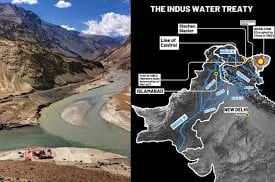

Atlantic Meridional Overturning Circulation Collapse
Latest News: 21st June 2025, UPSC Preparation
Recent research indicates that the collapse of the Atlantic Meridional Overturning Circulation (AMOC) could lead to extreme winter temperatures in northern Europe. This study, led by Dr René van Westen from Utrecht University, was published in June 2025. It marks the potential consequences of climate change and freshwater influx from melting ice sheets.
About AMOC
The AMOC is a critical ocean current system. It transports warm water from the tropics to northern latitudes and returns cold water southward. This process regulates climate by distributing heat. Disruption of the AMOC could lead to changes in temperature patterns across Europe.
Impact of Freshwater Influx
Human-induced climate change is increasing freshwater levels in the North Atlantic. The melting of Greenland’s ice sheet adds freshwater, reducing seawater salinity and density. This disrupts the sinking process essential for the AMOC’s functioning.
Climate Modelling Approach
The study used the Community Earth System Model (CESM) to simulate an AMOC collapse. Researchers applied a strong freshwater forcing to the North Atlantic. This approach helped to address biases in climate models that previously suggested the AMOC was more stable than observed.
Projected Climate Consequences
The simulations revealed stark outcomes. Under a scenario of 2 degrees Celsius warming, winter temperatures in London could drop to an average of 1.9°C, with extreme lows approaching -19.3°C. In Edinburgh, temperatures could reach -29.7°C. Oslo may experience average winter temperatures of -16.5°C, with lows near -48°C.
Seasonal Temperature Variability
While winter temperatures could plummet, summer conditions might remain warmer than pre-industrial levels. This could create dramatic seasonal contrasts, leading to intense heatwaves in summer. The climate would shift from extreme cold in winter to extreme heat in summer.
Broader Implications Beyond Europe
The study suggests that an AMOC shutdown could also impact global weather patterns. It could shift the Intertropical Convergence Zone southward. This shift may weaken monsoon systems in regions like India, West Africa, and the Amazon, altering rainfall patterns.
Societal and Infrastructural Challenges
The potential for extreme cold poses challenges. Current societal structures and infrastructures in Europe are not designed to withstand such severe winter conditions. This raises concerns about preparedness for extreme weather events in a warming world.
(NNI / Latest news / Latest news india / India latest news/UPSC Preparation)


Cyber Suraksha Exercise
Latest News: 18th June 2025, UPSC Preparation
The Defence Cyber Agency (DCA) of India initiated the ‘Cyber Suraksha’ exercise on June 16, 2025. This comprehensive cybersecurity drill is organised under the Integrated Defence Staff headquarters and will run until June 27, 2025. Aimed at enhancing national cyber resilience, the exercise involves over 100 participants from various national agencies and defence sectors.
Purpose and Structure of Cyber Suraksha
The primary goal of Cyber Suraksha is to simulate real-world cyber threats. This exercise focuses on reinforcing secure practices and evaluating the analytical and defensive skills of participants. It is structured in multiple phases, including targeted training sessions and leadership engagement.
Target Audience and Participants
Over 100 professionals from national agencies and defence domains are participating. This diverse group includes Chief Information Security Officers (CISOs), cybersecurity experts, and defence personnel. Their collective expertise is essential for addressing the complexities of cyber threats.
Leadership Engagement through CISOs Conclave
A feature of Cyber Suraksha is the CISOs conclave. This segment focuses on integrating leadership roles with technical cybersecurity aspects. Eminent speakers will lead discussions, culminating in an immersive Table-Top Exercise designed to enhance strategic decision-making.
Training and Simulation Techniques
Cyber Suraksha employs gamified environments to create dynamic training scenarios. Participants will engage in real-time simulations that mimic genuine cyber threats. This hands-on approach enables them to practise and refine their skills in a controlled setting.
Future Plans for Cybersecurity Exercises
The Defence Cyber Agency intends to conduct similar exercises regularly. This commitment aims to ensure a constant state of readiness among participants and encourage a culture prioritising cybersecurity across all levels of defence and national security.
Importance of Cyber Resilience
In an increasingly digital world, enhancing cyber resilience is crucial for national security. Cyber Suraksha represents a proactive step towards mitigating risks associated with cyber threats. The exercise aims to prepare participants to respond effectively to potential attacks.
(NNI / Latest news / Latest news india / India latest news/UPSC Preparation)


Quantum Secure Communication
Latest News: 17th June 2025, UPSC Preparation
Recent advancements in quantum secure communication have marked milestone in data transmission security. The Defence Research and Development Organisation (DRDO) and the Indian Institute of Technology (IIT) Delhi have successfully tested this technology over a free-space optical link. This breakthrough promises to revolutionise secure communications, particularly in military and national security contexts.
What Is Quantum Secure Communication?
Quantum secure communication is a method of transmitting information that is theoretically immune to hacking. It leverages the principles of quantum physics, particularly quantum entanglement. In this process, two particles remain linked regardless of the distance between them. Any attempt to intercept the communication alters the quantum state, alerting both the sender and receiver.
How Does It Work?
The core mechanism involves quantum entanglement and quantum key distribution (QKD). When a secure quantum key is transmitted using entangled photons, any eavesdropping attempt disturbs the quantum state. This disturbance serves as a warning to the communicating parties. The recent test achieved a secure key rate of approximately 240 bits per second with a quantum bit error rate below 7%.
The Test and Its Significance
Conducted at IIT Delhi, the test was part of a DRDO-funded project focusing on photonic technologies for free-space QKD. The successful transmission over a distance exceeding one kilometre showcases the potential for practical applications. Defence Minister Rajnath Singh hailed this achievement as a game changer for future warfare.
Applications of Quantum Secure Communication
This technology has numerous applications. It can facilitate long-distance QKD, secure data transmission, and the development of quantum networks. Unlike traditional fibre-optic systems, free-space QKD does not require expensive infrastructure, making it more accessible for various environments.
Implications for Cybersecurity
The development of quantum-encrypted networks is expected to enhance cybersecurity . It will improve the protection of sensitive data across multiple sectors, including finance, healthcare, and government. Furthermore, the rise of a “quantum internet” could redefine how devices communicate securely.
Military and National Security Impact
The implications for military communication are deep. Enhanced secure communication systems can boost national security by ensuring that sensitive information remains protected from interception. This advancement is crucial in an era where cyber threats are increasingly sophisticated.
(NNI / Latest news / Latest news india / India latest news/UPSC Preparation)


Eurasian Otter
Latest News: 16th June 2025, UPSC Preparation
The Eurasian otter, once thought extinct in Kashmir for nearly three decades, has been spotted again in the Lidder River. This semi-aquatic mammal, known locally as Vuder, is classified as ‘near threatened’ by the International Union for Conservation of Nature (IUCN). The recent sightings in south Kashmir have sparked interest among wildlife officials and conservationists, denoting the potential for ecological restoration in the region.
Historical Context
Historically, the Eurasian otter thrived in Kashmir’s water bodies. Records indicate population in areas like Dachigam National Park and the streams feeding the Dal Lake. However, the otter’s population declined sharply due to water pollution and hunting for its fur. The last confirmed sighting occurred around 30 years ago, leading to its presumed extinction in the Valley.
Recent Sightings
In recent months, multiple sightings have been reported. The first was in Gurez Valley, followed by appearances in Heerpora and the Lidder River. These sightings were confirmed through videos and photographs taken by local villagers. Wildlife officials have initiated CCTV surveillance to monitor the otter’s movements, marking a renewed effort to protect this species.
Ecological Importance
The Eurasian otter plays important role in maintaining healthy aquatic ecosystems. As a carnivorous mammal, it feeds on fish and other aquatic fauna, helping to control their populations. The presence of otters indicates a balanced ecosystem, as they require clean water and abundant prey. Their return could signal improving water quality in Kashmir’s rivers and lakes.
Habitat and Distribution
The Eurasian otter inhabits a variety of aquatic environments. These include rivers, lakes, marshes, and coastal areas. In India, it is primarily found in northern and northeastern states, as well as in southern regions. The otter adapts well to different habitats, making it resilient in various ecological settings.
Physical Characteristics
Eurasian otters are known for their sleek brown fur, which is lighter on the underside. They possess a long, streamlined body equipped with webbed feet, which aid in swimming. Their acute senses of sight, smell, and hearing enhance their ability to hunt effectively. The otter can close its ears and nose while submerged, allowing it to thrive in aquatic environments.
Conservation Status
The IUCN lists the Eurasian otter as ‘near threatened.’ In India, it is protected under the Wildlife Protection Act of 1972, where it is classified in Schedule II. Additionally, it is listed in Appendix I of CITES, which regulates international trade of endangered species. Conservation efforts are essential to ensure the survival of this species in Kashmir.
(NNI / Latest news / Latest news india / India latest news/UPSC Preparation)


Rudrastra Advanced Hybrid VTOL Drone
Latest News: 15th June 2025, UPSC Preparation
The Rudrastra drone represents advancement in India’s military technology. Developed by Solar Aerospace and Defence Limited, it was recently tested by the Indian Army, marking a very important moment in unmanned aerial warfare. This drone combines vertical take-off and landing capabilities with long-range precision strike capabilities.
About Rudrastra
Rudrastra is a hybrid drone designed for battlefield operations. It can take off like a helicopter and fly long distances like a jet. This versatility makes it difficult to detect. The drone is engineered for anti-personnel roles, targeting enemy soldiers with high accuracy.
Key Features
Rudrastra can strike targets over 50 km away. During trials at the Pokhran range, it achieved a total operational range of 170 km. The drone can stay airborne for nearly 90 minutes while relaying real-time video. It can drop munitions that detonate at low altitudes, causing widespread damage to enemy positions.
Operational Capabilities
Rudrastra is designed for deep strikes against enemy artillery and terrorist hideouts. It can operate autonomously, allowing the Indian Army to engage targets without risking soldiers’ lives. This capability positions Rudrastra as a powerful stand-off weapon in modern warfare.
Future Prospects
The Indian Army plans to procure Rudrastra drones in large quantities. Indigenous manufacturers are encouraged to showcase their technologies as India aims to enhance its drone capabilities. Unmanned systems like Rudrastra are expected to play important role in future defence and counter-terrorism operations.
Impact on Military Strategy
The introduction of Rudrastra signifies a shift in military strategy towards unmanned aerial systems. These drones enhance surveillance and precision strike capabilities. They enable rapid and flexible operations, crucial in responding to evolving threats in the battlefield.
(NNI / Latest news / Latest news india / India latest news/UPSC Preparation)


What is AviList?
Latest News: 14th June 2025, UPSC Preparation
AviList, launched on June 12, 2025, serves as the first unified global checklist of bird species. This initiative followed four years of collaborative work by the Working Group on Avian Checklists. The checklist replaces previous lists, including the International Ornithological Committee and Clements lists. It aims to provide clarity and consistency in avian taxonomy, crucial for conservation efforts.
About AviList
AviList compiles a comprehensive list of 11,131 bird species, 19,879 subspecies, 2,376 genera, 252 families, and 46 orders. This extensive classification reflects a global consensus on avian taxonomy. The checklist is published by BirdLife International and is available for free download.
Collaborative Effort
The Working Group on Avian Checklists includes experts from BirdLife International, Cornell Lab of Ornithology, American Ornithologists Society, International Ornithologists’ Union, and Avibase. This diverse team worked together to harmonise differing taxonomic perspectives. Their collaboration aims to eliminate confusion in species identification and facilitate conservation efforts.
Importance for Conservation
AviList is very important for conservationists and ornithologists. It establishes a common language for discussing bird species. Stuart Butchart, chief scientist at BirdLife International, emphasises that a unified taxonomy enhances data sharing. This clarity helps in prioritising conservation actions effectively.
Taxonomy and Methodology
The checklist employs an integrative species concept. This approach considers various evidence types, including morphology, genetics, and behaviour. The working group engages in detailed discussions, often using sound recordings and museum specimens to validate species classifications. Decisions are made through a voting process among group members.
Accessibility and Usage
AviList is freely accessible online. Users can download the complete checklist or a concise version in .xlsx and .csv formats. This accessibility ensures that researchers, policymakers, and bird enthusiasts can utilise the information for various purposes, including scientific research and legislative action.
Future of AviList
The Working Group plans to update AviList annually. As new research emerges, the checklist will evolve to reflect the latest scientific understanding. This ongoing process will continue to refine avian taxonomy and enhance conservation strategies.
(NNI / Latest news / Latest news india / India latest news/UPSC Preparation)


India’s New Battery Energy Storage Initiative
Latest News: 13th June 2025, UPSC Preparation
India is advancing its renewable energy goals with a new funding package for battery energy storage systems. The government plans to invest ₹5,400 crore to set up a 30 GWh capacity. This initiative complements an existing ₹3,700 crore incentive for 13.2 GWh of storage. The total investment is expected to reach ₹33,000 crore. The initiative aims to ensure round-the-clock renewable energy supply and enhance grid stability.
Viability Gap Funding (VGF)
The VGF program is designed to support infrastructure projects that may not be financially viable without government assistance. The additional ₹5,400 crore will be allocated for battery energy storage. This funding aims to attract private investments and stimulate the energy sector.
Battery Energy Storage Systems (BESS)
BESS is crucial for managing the intermittent nature of renewable energy. With increasing solar and wind capacities, energy storage solutions are essential to provide power during peak demand. BESS allows for energy to be stored when production exceeds demand and released when needed.
Pumped Storage Projects (PSPs)
PSPs are a type of hydroelectric power generation that uses two reservoirs at different elevations. Water is pumped to the higher reservoir during low demand and released to generate electricity during high demand. This method acts as a large-scale battery.
Inter-State Transmission System Charges Waiver
The government has extended the 100% waiver on inter-state transmission charges for BESS until June 30, 2028. This exemption applies to both pumped storage projects and battery systems. It aims to encourage investment in energy storage infrastructure.
Ultra High Voltage Alternating Current (UHVAC) System
The UHVAC transmission system will receive ₹53,000 crore for infrastructure enhancement. Nine high-voltage lines have been identified for development by 2034. This system will improve grid reliability and facilitate the integration of renewable energy sources.
Compensation Structure Revision
The compensation structure under the Right of Way (RoW) rules has been revised. Compensation for land used for towers has increased . This change aims to expedite infrastructure rollout and ensure fair compensation for landowners.
Future Energy Storage Needs
The Central Electricity Authority estimates that India will require 37 GWh of BESS by 2027 and 236 GWh by 2031-32. The new funding package is a step towards achieving these targets. By FY28, India aims for a BESS capacity of 43.2 GWh.
(NNI / Latest news / Latest news india / India latest news/UPSC Preparation)


Blue NDC Challenge
Latest News: 12th June 2025, UPSC Preparation
Brazil and France initiated the Blue NDC Challenge at the United Ocean Conference (UNOC3) in Nice. This initiative aims to integrate ocean-focused climate strategies into countries’ Nationally Determined Contributions (NDCs) before the upcoming 30th Conference of Parties (COP30) in Belem, Brazil. The Blue NDC Challenge marks the importance of oceans in climate action, urging nations to include measures for marine ecosystems in their climate plans.
About Nationally Determined Contributions (NDCs)
NDCs are national climate plans under the Paris Agreement. They outline efforts to reduce greenhouse gas emissions and adapt to climate change. The Paris Agreement, adopted in 2015, aims to limit global temperature rise to well below 2°C. Countries submit their NDCs periodically to demonstrate their commitment to these goals. As of February 2025, only 21 out of 195 parties submitted their updated NDCs.
The Role of Oceans in Climate Action
Oceans play important role in regulating the Earth’s climate. They absorb carbon dioxide and heat, making them vital for mitigating climate change. The Blue NDC Challenge encourages countries to recognise this and incorporate ocean-based solutions into their climate strategies. This includes sustainable management of marine ecosystems and the restoration of coastal habitats.
Key Actions Promoted by the Initiative
Participating nations commit to various actions. These include marine spatial planning, integrated coastal zone management, and establishing climate-smart marine protected areas. The initiative also promotes the phase-out of offshore oil and gas operations and the expansion of clean ocean energy sources. Additionally, it addresses emissions in maritime sectors, such as shipping and fisheries, to ensure long-term ocean health.
Importance of Mangroves and Coastal Ecosystems
Mangroves and other coastal ecosystems are essential for carbon sequestration. They capture carbon at rates higher than terrestrial forests. Protecting these ecosystems is vital for both climate mitigation and adaptation. The initiative encourages countries to include coastal ecosystem conservation in their NDCs, opening avenues for political and financial support.
Global Collaboration and Support
Countries participating in the Blue NDC Challenge can access support from organisations like the Ocean Breakthroughs and the NDC Partnership. This collaboration enhances the capacity of nations to implement ocean-focused climate actions effectively.
Financial Investment in Ocean Conservation
Recently, Bloomberg Philanthropies announced a $6.8 million investment to boost Brazil’s efforts in conserving ocean and coastal ecosystems. This funding marks the growing recognition of the need to protect oceans as part of climate action. Experts emphasise that ocean-based solutions can contribute to achieving emission reduction targets.
(NNI / Latest news / Latest news india / India latest news/UPSC Preparation)


Spathaspina Noohi
Latest News: 11th June 2025, UPSC Preparation
The recent identification of a new beetle species, Spathaspina noohi, has excited the scientific community. This discovery was made in the forests of Meghalaya. The beetle is notable for its distinctive sword-like spine. This anatomical feature is so rare that it warranted the creation of a new genus, Spathaspina. The beetle was discovered at an elevation of 781 metres in the Ri Bhoi district. The identification of this species puts stress on the rich biodiversity of Northeast India.
Taxonomy and Classification
Spathaspina noohi belongs to the weevil family, Curculionidae. This family includes over 60,000 species globally. Weevils are for their role in ecosystems. They help control invasive plant species. The new genus name is derived from Latin words – ‘spatha’ meaning sword and ‘spina’ meaning spine. This reflects the beetle’s prominent anatomical feature.
Ecological Significance
Weevils play crucial roles in maintaining ecological balance. Some species are agricultural pests. However, many contribute positively by controlling plant dynamics. The new species, Spathaspina noohi, is part of the subfamily Ceutorhynchinae. This group includes over 1,300 species worldwide. They are primarily found in Europe and parts of Asia.
Morphological Features
Beetles in the Ceutorhynchinae subfamily are recognised for their compact bodies. They typically retract their snouts between their legs when resting. The visibility of their mesanepimera is another identifying trait. Exceptions exist in some genera, such as Cyphosenus and Ceutorhynchoides.
Tribute to P. B. Nooh
The species name, Spathaspina noohi, honours P. B. Nooh, IAS, Director of Tourism for Kerala. This naming acknowledges his efforts in promoting eco-tourism. It reflects the balance between ecological conservation and responsible tourism. The researchers aim to highlight the importance of sustainable development in preserving biodiversity.
(NNI / Latest news / Latest news india / India latest news/UPSC Preparation)


Bharatiya Bhasha Anubhag
Latest News: 09th June 2025, UPSC Preparation
The Bharatiya Bhasha Anubhag, launched in June 2025, marks shift in India’s language policy. This initiative aims to reduce the influence of foreign languages, particularly English, in official communications. The goal is to promote and strengthen India’s linguistic diversity, ensuring that local languages play a central role in governance and administration.
Establishment of Bharatiya Bhasha Anubhag
The Bharatiya Bhasha Anubhag was inaugurated by Union Home Minister Amit Shah. This new section is now part of the Department of Official Language, transforming it into a complete entity dedicated to Indian languages. The initiative is a part of the government’s broader decolonisation project, aimed at empowering local languages in official contexts.
Objectives of the Initiative
The primary aim of the Bharatiya Bhasha Anubhag is to eliminate the dominance of English in administrative communication. By doing so, it seeks to enhance the efficiency of governance by allowing officials to communicate in their mother tongues. This initiative is expected to facilitate better understanding and decision-making processes.
Technological Integration
The Bharatiya Bhasha Anubhag will collaborate with the Centre for Deployment of Advanced Computing (C-DAC) to develop a universal translation system. This system will enable seamless communication between different languages. For example, a letter written in Tamil by a state chief minister can be translated for Union ministers, ensuring clarity and accessibility in communication.
Significance for Indian Culture
Indian languages are viewed as the soul of the nation’s culture. By prioritising local languages, the Bharatiya Bhasha Anubhag aims to encourage a deeper connection between citizens and their cultural identities. This cultural revival is seen as essential for India’s global standing and respect.
Future Implications
The Bharatiya Bhasha Anubhag is expected to create a more inclusive environment in governance. It aims to empower citizens by ensuring that they can engage with the government in their native languages. This initiative could potentially lead to increased participation and representation in the democratic process.
(NNI / Latest news / Latest news india / India latest news/UPSC Preparation)
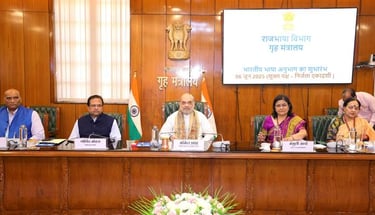

Socotra Island
Latest News: 08th June 2025, UPSC Preparation
Socotra Island is renowned for its unique biodiversity. It is often referred to as the Galápagos of the Indian Ocean. This designation marks its rich flora and fauna. In 2008, it was designated a UNESCO World Heritage Site. Over 37% of its plant species are endemic, meaning they are not found anywhere else on Earth.
Geographical Overview
Socotra is located approximately 340 km southeast of Yemen. It sits in the Indian Ocean near the Horn of Africa. The island covers an area of about 3,796 square kilometres. Its landscape includes coastal plains, a limestone plateau, and the rugged Hagghier Mountains. This diverse geography contributes to its ecological richness.
Political Context
Socotra is politically part of Yemen. However, its governance is complicated. UAE-backed forces and the Southern Transitional Council (STC) influence the island. The UAE maintains a military presence, which it claims is for humanitarian and security reasons. This geopolitical situation adds layers to the island’s challenges.
Ecological Significance
The island is home to many unique species. Notable flora includes the Dragon’s Blood tree and frankincense. The climate is semi-desert with low annual rainfall. Strong monsoonal winds historically isolated Socotra, helping preserve its unique ecology.
Economic Activities
The economy of Socotra relies on traditional practices. Fishing, pearl diving, and livestock herding are common. Small-scale agriculture also supports the local population. These activities are often limited by the island’s geographic isolation and economic challenges.
Health Crisis and Humanitarian Efforts
Socotra faces severe health challenges. The United Arab Emirates and the World Health Organization (WHO) have initiated a humanitarian programme. This initiative aims to combat malnutrition affecting women and children. Recent reports indicate that the Global Acute Malnutrition (GAM) rate among children under five is 10.9%. Severe Acute Malnutrition (SAM) affects 1.6% of this group. Such rates indicate a critical health emergency.
Strategic Humanitarian Programme
The humanitarian initiative is a two-year programme. It focuses on reducing maternal and child mortality linked to malnutrition. Key components include improving healthcare infrastructure. This involves training medical staff and supplying essential medications. The programme also aims to enhance emergency preparedness for potential epidemics.
Community Engagement and Sustainable Solutions
Community awareness campaigns will accompany medical interventions. Improved disease surveillance systems will be established. These measures aim to ensure effective responses to health crises. The initiative seeks to create lasting improvements in health security on Socotra.
Broader Implications
This humanitarian effort is part of a larger strategy. It aims to strengthen health systems across Yemen. The partnership between the UAE and WHO reflects a commitment to address urgent needs. It also focuses on building resilience against future health challenges.
(NNI / Latest news / Latest news india / India latest news/UPSC Preparation)


Thermophilic Bacteria
Latest News: 06th June 2025, UPSC Preparation
Thermophilic bacteria thrive in extreme heat. They can survive temperatures between 45 to 70 degrees Celsius. These bacteria are not only resilient but also beneficial. They play important role in antibiotic production. Hot springs around the world are rich in these microorganisms. Recent studies highlight their potential in combating antibiotic resistance.
Thermophiles and Their Environment
Thermophiles are found in hot springs, deep-sea vents, and compost piles. These habitats are mineral-rich and have fewer competitors. This allows thermophilic bacteria to flourish. They often produce antibiotics to fend off other microorganisms. Their ability to thrive in extreme conditions makes them unique in the microbial world.
Antibiotic Production
Many thermophilic bacteria produce potent antibiotics. Researchers focus on Actinobacteria, a group known for its antimicrobial properties. These bacteria are responsible for producing well-known antibiotics like streptomycin and tetracycline. Recent studies have shown that hot springs can be a treasure trove for discovering new antibiotic-producing strains.
Research at Rajgir Hot Springs
The Rajgir hot spring in Bihar, has been the subject of recent research. Scientists from the Vellore Institute of Technology (VIT) studied the microbial diversity there. They discovered a high percentage of Actinobacteria. This finding is as it indicates a rich source of potential antibiotics. The researchers used advanced techniques to identify these microorganisms accurately.
Addressing Antimicrobial Resistance
Antimicrobial resistance is a growing global concern. The World Health Organisation warns that it could lead to substantial healthcare costs. Finding new antibiotics is essential to combat resistant strains. The discovery of effective compounds from thermophiles offers hope in this battle. Researchers conducted experiments to test the antibacterial efficiency of isolated strains.
Industrial and Agricultural Applications
Thermophilic bacteria have applications beyond medicine. They are valuable in various industries, including agriculture. Some strains enhance plant growth and productivity. Their heat-tolerant properties make them suitable for industrial processes. For instance, enzymes from thermophiles are used in PCR tests, essential for disease detection.
Future Prospects
The potential of thermophilic bacteria is vast. Continued research can uncover more antibiotic-producing strains. This could lead to new treatments for infections. The industrial applications of these bacteria can also drive innovation. Understanding their unique properties can lead to advancements in biotechnology.
(NNI / Latest news / Latest news india / India latest news/UPSC Preparation)


Raja Khas
Latest News: 05th June 2025, UPSC Preparation
Raja Khas, a village in Kangra district, has been designated as Himachal Pradesh’s first Solar Model Village. This initiative is part of the PM Surya Ghar – Muft Bijli Yojana aimed at promoting solar energy in rural areas. The village was selected for its outstanding solar installation performance during a six-month competition involving 43 villages. A grant of ₹1 crore will be allocated for solar development, marking step towards energy self-sufficiency and environmental sustainability.
Initiative
The PM Surya Ghar scheme encourages the adoption of solar energy in rural regions. The programme aims to reduce reliance on conventional energy sources. Raja Khas emerged as the top performer in solar installation, achieving a capacity of 3,700 kilowatts. This initiative reflects the government’s commitment to green energy.
Selection Process
The selection of Raja Khas was based on a competitive evaluation among 43 villages in the district. The competition ran from November 20 to May 19. Villages were assessed on their solar installation capabilities. Raja Khas’s efforts in solar energy deployment set it apart.
Government Support and Funding
The government will provide a substantial grant of ₹1 crore for the solar development of Raja Khas. This funding will facilitate the installation of solar street lights, solar water heaters, and a solar power plant. The financial support puts stress on the government’s commitment to encouraging renewable energy sources.
Community Engagement
The local community is actively involved in this initiative. Jyoti Devi, the village sarpanch, expressed pride in the village’s achievement. She emphasised the importance of community cooperation in maintaining the solar facilities. The project aims to encourage the use of solar energy among residents.
Future Prospects
The transformation of Raja Khas into a solar model village serves as a blueprint for other villages in Himachal Pradesh. The initiative promotes self-reliance and environmental protection. It is expected to inspire similar projects across the country. The implementation of a Detailed Project Report (DPR) will guide future actions.
Broader Impacts
This initiative not only aims to provide clean energy but also to empower local communities. It represents shift towards sustainability in rural development. The model village approach can potentially influence energy policies in other state of Indias.
(NNI / Latest news / Latest news india / India latest news/UPSC Preparation)
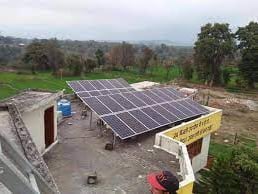

Mount Etna Erupts Again
Latest News: 04th June 2025, UPSC Preparation
Mount Etna, located in Sicily, Italy, erupted on June 2, 2025. This event marked another chapter in the volcano’s long history of activity. Authorities confirmed that the eruption posed no immediate threat to nearby residents. However, the alert level at Catania Airport was raised due to the ash cloud that reached several kilometres into the atmosphere. The eruption concluded by the afternoon, showcasing Mount Etna’s dynamic nature.
Overview of Mount Etna
Mount Etna is a UNESCO World Heritage Site. It is one of the most active volcanoes globally. With a documented eruption history spanning over 2,700 years, it holds one of the longest records of volcanic activity. Standing at approximately 3,300 metres, it is around four times taller than the Burj Khalifa, the world’s tallest building.
Characteristics of Mount Etna
Mount Etna is classified as a stratovolcano. Stratovolcanoes are known for their conical shape and are formed from viscous lava that accumulates around the vent. This type of volcano accounts for about 60% of all individual volcanoes on Earth. Mount Etna frequently exhibits both effusive and strombolian eruption styles. Effusive eruptions involve lava flows, while strombolian eruptions are characterised by explosive activity.
Historical Eruptions
Mount Etna’s eruptive history dates back approximately 500,000 years. The most eruption occurred in 1669, when lava reached the city of Catania, causing extensive damage. Historical records indicate that the earliest eruption reference dates back to around 1400 B.C. Recent notable eruptions include activity in 2024, which led to temporary airport closures in Catania.
Volcanic Monitoring and Impact
Italy’s National Institute of Geophysics and Volcanology (INGV) monitors Mount Etna closely. They provide updates on seismic activity and potential eruptions. The Civil Protection Department has implemented various measures to manage lava flow, including the construction of earthen barriers during eruptions. These proactive steps aim to mitigate risks to local communities and infrastructure.
Future Eruptions
Given its history, Mount Etna will likely continue to erupt. Scientists study its patterns to predict future activity. About these patterns is crucial for disaster preparedness and response. Continuous monitoring helps ensure the safety of residents and tourists in the surrounding areas.
(NNI / Latest news / Latest news india / India latest news/UPSC Preparation)

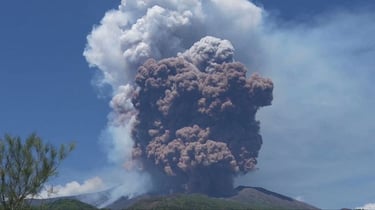
Tianwen-2 Asteroid Mission
Latest News: 02nd June 2025, UPSC Preparation
China has embarked on a pioneering space mission named Tianwen-2. Launched on 28 May 2025, this mission aims to retrieve samples from the near-Earth asteroid 469219 Kamoʻoalewa. This asteroid is unique as it acts as a quasi-satellite of Earth, orbiting between 15 to 39 million kilometres away. The mission is step in China’s growing role in space exploration.
Mission Objectives
The Tianwen-2 mission has clear objectives. It aims to study the asteroid closely and collect approximately 100 grams of material. The mission will use a suite of 11 sophisticated instruments, including cameras and spectrometers, to conduct in-depth analysis.
Sample Collection Techniques
Three methods are planned for sample collection. The first method involves hovering near the asteroid. The second method uses a robotic arm to gather samples directly. The third, dubbed “touch and go,” entails landing briefly on the asteroid to drill and retrieve materials.
Timeline and Return
The mission is set to reach Kamoʻoalewa in July 2026. After collecting samples, a module will be released to return to Earth in November 2027. Successful retrieval would position China as the third nation to collect asteroid material, following the United States and Japan.
Future Endeavours
The mission is part of a larger 10-year plan. After Kamoʻoalewa, the spacecraft will use a gravitational swing-by from Earth to travel to another target, the active asteroid 311P/PanSTARRS. This body lies in the main asteroid belt and will be studied from a distance.
Background of Tianwen Missions
Tianwen-2 follows the successful Tianwen-1 mission, which landed on Mars in May 2021. Tianwen-1 has provided valuable data about the Martian surface and potential water-ice reserves. China’s ambitious plans include Tianwen-3, aimed at retrieving samples from Mars, with a potential launch in 2028.
China’s Space Programme
China’s space programme has rapidly advanced over the past two decades. It is controlled by the People’s Liberation Army. The country has achieved milestones, including landing on Mars and the far side of the Moon. The Tiangong space station, entirely Chinese-built, marks China’s commitment to permanent space exploration.
International Cooperation
China has expressed willingness for international cooperation in space exploration. However, collaboration with the United States is contingent upon the removal of legislative barriers preventing cooperation with NASA.
(NNI / Latest news / Latest news india / India latest news/UPSC Preparation)


Tropical Cyclones and Their Impact on Infant Mortality
Latest News: 31st May 2025, UPSC Preparation
Recent research has brought into light a troubling correlation between tropical cyclones and increased infant mortality rates in low- and middle-income countries. The study indicates that infants exposed to tropical cyclones within their first year of life face higher risk of death. This rise in mortality puts stress on the urgent need for enhanced disaster response and child health protections, especially as climate change intensifies these natural disasters.
About Tropical Cyclones
Tropical cyclones are intense storms originating over warm tropical oceans. They are characterised by low atmospheric pressure, high winds, and heavy rainfall. Depending on their strength, they are referred to as hurricanes or typhoons. The formation of these storms requires warm ocean water, atmospheric circulation, and specific temperature and humidity conditions.
Infant Mortality Rates
The recent study found an alarming average increase of 11% in infant mortality rates following tropical cyclones. This translates to an additional 4.4 deaths per 1,000 live births. The highest risk was observed within the first year post-storm, with mortality rates stabilising after two years. The precise causes of this increase are still under investigation.
Country-Specific Disparities
The research analysed health records from seven countries – Bangladesh, Madagascar, Cambodia, the Philippines, the Dominican Republic, and Haiti. Countries like Bangladesh and Haiti saw increases exceeding 10 deaths per 1,000 births, while others reported minimal changes. Factors contributing to these disparities include geography, housing conditions, and public health infrastructure.
Factors Influencing Mortality
The study indicates that health care access and undernutrition were not affected by cyclone exposure. This suggests that other factors, possibly related to environmental stressors or disruptions in community support systems, may drive the increased mortality rates. About these factors is crucial for developing effective interventions.
Climate Change and Cyclone Frequency
As climate change continues to escalate, the frequency and intensity of tropical cyclones are expected to rise. This poses a growing threat to vulnerable populations, particularly infants. Enhanced disaster preparedness and response strategies are essential to mitigate these risks and protect child health.
(NNI / Latest news / Latest news india / India latest news/UPSC Preparation)

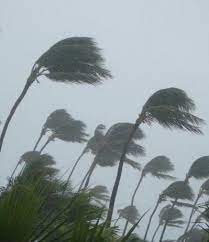
What are Nurdles?
Latest News: 30th May 2025, UPSC Preparation
On May 27, 2025, large quantities of tiny plastic pellets, known as nurdles, were discovered along the coast of Thiruvananthapuram, Kerala. This incident follows the sinking of the MSC ELSA 3, which occurred on May 25, 2025. The vessel sank carrying numerous containers, some of which contained hazardous materials. The presence of nurdles has raised alarm about marine pollution and its impact on local ecosystems.
What Are Nurdles?
Nurdles are small pre-formed plastic pellets used as raw material in the production of various plastic products. Defined by the International Organisation for Standardisation, these pellets typically measure between 1 to 5 millimetres in diameter. They are primarily made of polyethene, polypropylene, polystyrene, and polyvinyl chloride. Nurdles are considered primary microplastics due to their intentional production in small sizes.
Environmental Impact of Nurdles
Nurdles pose threats to marine life. Their small size allows them to be ingested by fish, seabirds, and other wildlife, leading to health issues such as intestinal blockages. Each year, an estimated 230,000 tonnes of nurdles are released into oceans globally. This pollution not only harms marine animals but also jeopardises coastal communities that depend on fishing and tourism.
Incidents of Nurdle Spills
Nurdle spills have gained notoriety due to several incidents worldwide. Notable spills include the 2012 Hong Kong incident, where Typhoon Vicente caused widespread contamination. In 2017, a spill at Durban Port released 49 tonnes of nurdles into the Indian Ocean. Each incident resulted in severe ecological damage and brought into light the risks associated with plastic transport.
Composition and Recycling Challenges
The nurdles found in Kerala are primarily made from Low-Density Polyethene (LDPE) and High-Density Polyethene (HDPE). These plastics are widely used in everyday products. However, recycling LDPE is particularly challenging, complicating efforts to manage plastic waste effectively.
Cleanup and Prevention Strategies
Experts recommend several strategies for addressing nurdle pollution. Manual beach cleanups are effective but labour-intensive. Floating booms and nets can contain nurdles at spill sites. Improved packaging methods, including secure container transport and rapid response protocols, are essential for preventing future spills. Regulatory measures must also be enforced to ensure timely reporting of nurdle incidents.
Ongoing Risks and Future Concerns
The recent nurdle discovery in Kerala puts stress on the persistent threat of plastic waste in marine ecosystems. As global plastic production continues to rise, the challenge of preventing and cleaning up spills remains critical. Environmentalists and policymakers are particularly concerned about the impact on regions rich in biodiversity, such as the southern coast of Kerala.
(NNI / Latest news / Latest news india / India latest news/UPSC Preparation)


Mendel’s Pea Plants
Latest News: 29th May 2025, UPSC Preparation
In recent years, advancements in genetic research have shed light on the foundational work of Gregor Mendel. His experiments with pea plants laid the groundwork for modern genetics. Mendel’s findings, initially overlooked, have been revisited and expanded upon using cutting-edge technology. A recent study has resolved long-standing questions about Mendel’s observations, revealing the genetic factors behind traits he studied.
Gregor Mendel’s Early Experiments
In the mid-19th century, Mendel conducted experiments on pea plants. He focused on seven traits with two distinct forms, such as seed shape and colour. His systematic approach involved crossbreeding plants and analysing the traits of their offspring. Mendel discovered that certain traits dominated others in inheritance patterns. His work went unnoticed until its rediscovery in 1900.
Rediscovery of Mendel’s Work
The late 19th and early 20th centuries saw the independent rediscovery of Mendel’s principles by Hugo de Vries, Carl Correns, and Erich von Tschermak. They recognised the significance of Mendel’s findings in understanding heredity. This led to the establishment of the chromosome theory of inheritance and the concept of genes as units of heredity.
About Alleles and Dominance
Mendel’s research brought into light the role of alleles in trait expression. Each organism carries two alleles for each trait, one from each parent. In many cases, one allele masks the effect of the other, leading to predictable inheritance patterns. This understanding paved the way for modern genetic studies.
Recent Genetic Discoveries
A recent study has identified genetic factors behind Mendel’s unresolved traits. Researchers sequenced the DNA of over 697 pea plant variants, generating vast amounts of data. This analysis revealed a more complex genetic structure than previously understood, including multiple species and new allelic variants affecting Mendel’s traits.
into Mendel’s Traits
The study confirmed the genetic basis for four of Mendel’s traits. It identified new variants that alter flower colour and pod characteristics. For the previously uncharacterised traits, researchers pinpointed specific genes responsible for pod shape, colour, and flower position. These findings highlight the intricate genetic interactions that Mendel was unable to explore.
Implications for Future Research
The comprehensive genetic map created by the researchers opens new avenues for agricultural research. The insights gained can enhance crop yield, improve disease resistance, and facilitate better environmental adaptations. The study’s findings tell the importance of Mendel’s work and its relevance in contemporary genetics.
(NNI / Latest news / Latest news india / India latest news/UPSC Preparation)
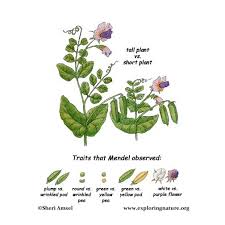

New Method to Detect Topological Invariants in Quantum Materials
Latest News: 28th May 2025, UPSC Preparation
Recent advancements in quantum materials research have revealed a novel method for identifying topological invariants. These invariants are properties of topological spaces that remain unchanged through continuous transformations. Topological materials are crucial for the development of technologies such as quantum computing and energy-efficient systems. However, their unique properties have historically been difficult to detect.
About Topological Invariants
Topological invariants are fundamental characteristics that define the shape of materials at the quantum level. They are not influenced by external appearances but are intrinsic to the material’s structure. A common analogy is the comparison between a donut and a coffee cup. Both have one hole and are thus topologically equivalent. In contrast, a wada and an idli are not equivalent due to differing hole counts.
Significance of Topological Materials
Topological materials, including topological insulators and superconductors, exhibit unusual electronic behaviours. The properties of these materials are determined by topological invariants like winding numbers and Chern numbers. These numbers govern how electrons behave in different shapes of materials, affecting their potential applications in technology.
New Detection Method
Researchers from the Raman Research Institute have introduced an innovative approach to detect topological invariants using the spectral function. This function acts as a quantum fingerprint, revealing how energy and particles interact within a material. The study, led by Professor Dibyendu Roy and PhD student Kiran Babasaheb Estake, demonstrates that the spectral function can provide vital information about the topology of various materials.
Advantages Over Traditional Techniques
Traditionally, techniques like Angle-Resolved Photoemission Spectroscopy (ARPES) were employed to study electron behaviour. However, the new method marks that the spectral function can also unveil topological features. This breakthrough could facilitate a more comprehensive understanding of topological materials, leading to new discoveries in condensed matter physics.
Implications for Future Technology
The ability to detect topological invariants could revolutionise the field of quantum computing and next-generation electronics. By providing a universal tool for exploring topological materials, this research may lead to advancements in energy-efficient systems and innovative technologies.
(NNI / Latest news / Latest news india / India latest news/UPSC Preparation)

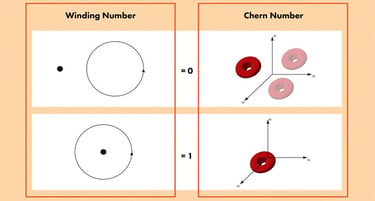
Turbulence
Latest News: 26th May 2025, UPSC Preparation
An Indigo flight from Delhi to Srinagar faced extreme turbulence while flying through a thunderstorm. This incident involved 227 passengers and resulted in visible damage to the aircraft, particularly a broken nose section. The event, shared widely on social media, brought into light the dangers of flying in adverse weather conditions.
About Turbulence
Turbulence is a common occurrence in aviation. It usually arises from changes in wind speed or direction. Factors include storms, jet streams, and thermal currents. While minor turbulence is manageable, severe turbulence can pose risks to aircraft stability.
Updrafts and Downdrafts
Updrafts are rising currents of warm air, often found in thunderstorms. They occur due to daytime heating, where the sun warms the ground, causing air to rise. Conversely, downdrafts are descending currents of cooler air, often triggered by cooling effects like evaporation. Both phenomena can lead to rapid altitude changes for an aircraft.
The Incident Details
During the flight, the aircraft encountered a strong cycle of updrafts and downdrafts. Experts estimate that the plane was displaced by 2,000 to 6,000 feet. Thunderstorm systems can reach altitudes of up to 3 kilometres, creating dangerous conditions for aircraft. The flight also passed through a hailstorm, leading to potential damage from large hailstones.
Avoiding Severe Weather
A massive thunderstorm system stretched across northwestern India on the day of the incident. Aviation experts stress the importance of avoiding active thunderstorm zones. Pilots typically reroute around such areas. In this case, the Indigo pilot sought permission to enter Pakistani airspace to avoid the storm, but the request was denied.
(NNI / Latest news / Latest news india / India latest news/UPSC Preparation)


INSV Kaundinya
Latest News: 25th May 2025, UPSC Preparation
The Indian Navy recently launched the Indian Naval Sailing Vessel (INSV) Kaundinya at the Naval Base in Karwar. This vessel is named after Kaundinya, an ancient Indian mariner known for his legendary voyage to Southeast Asia over 2,000 years ago. The ship’s design is inspired by a 5th-century depiction found in the Ajanta caves and employs traditional shipbuilding techniques. The launch marks step in reviving India’s rich maritime heritage.
Kaundinya
Kaundinya is celebrated as the first named Indian mariner to venture into Southeast Asian waters. His journey led to the establishment of the kingdom of Funan, Indianised kingdom that influenced the region’s history. This narrative is supported by sources from Cambodia and Southern Vietnam, indicating the lasting impact of Indian maritime activities.
Construction Techniques
The INSV Kaundinya is constructed using ancient stitching techniques. Artisans from Kerala used coconut fibre stitching, coir rope, and natural resins for its construction. This reflects a commitment to traditional craftsmanship and marks India’s historical shipbuilding expertise.
Features of the Stitched Ship
The vessel incorporates several cultural elements. Its sails feature motifs such as the ‘Gandabherunda’, symbolising the Kadamba dynasty. The ship’s bow displays a ‘Simha Yali’, while a Harappan-style stone anchor adorns the deck. The design includes a main mast, mizzen mast, and bowsprit mast, facilitating traditional sailing methods.
Sailing Techniques and Challenges
The INSV Kaundinya uses square sails, which differ from the modern triangular sails. This necessitates relearning ancient sailing techniques. The ship does not have rudders, relying instead on steering oars. This design choice presents unique challenges in navigating with wind conditions.
Future Voyages and Cultural Significance
The vessel is set to embark on a historic voyage to Oman, retracing ancient trade routes. This journey aims to reinforce India’s maritime legacy and strengthen ties with the Indian Ocean region. The project is a collaborative effort involving the Indian Navy, the Ministry of Culture, and Hodi Innovations.
Reviving Maritime Heritage
The launch of INSV Kaundinya signifies a revival of India’s maritime traditions. It puts stress on the importance of understanding and preserving historical maritime practices. The initiative reflects a broader effort to reconnect with India’s ancient seafaring culture.
(NNI / Latest news / Latest news india / India latest news/UPSC Preparation)


Sagar Bhavan” and “Polar Bhavan
Latest News: 24th May 2025, UPSC Preparation
India is enhancing its role in ocean geopolitics through advancements in polar and ocean research. The inauguration of “Sagar Bhavan” and “Polar Bhavan” at the National Centre of Polar and Ocean Research (NCPOR) in Goa marks a very important moment. These facilities are designed to improve India’s capabilities in studying climate change and weather patterns. The government aims to integrate ocean science with national development, aligning with global climate initiatives.
New Facilities
The NCPOR has introduced two major facilities. Polar Bhavan spans over 11,378 square metres, housing advanced laboratories and a conference hall. It serves as a hub for polar research. Sagar Bhavan, covering 1,772 square metres, includes specialised ice core laboratories. These structures are essential for storing and analysing climate data.
Polar Research
Research on polar regions is critical. Nearly 70% of the world’s freshwater is stored in polar ice. Melting ice can lead to rising sea levels and affect coastal regions. India’s coastline, over 1,000 kilometres long, faces environmental risks. Continuous monitoring is vital for understanding these changes.
Climate Change and Ocean Geopolitics
The intersection of climate change and geopolitics is becoming increasingly relevant. As nations navigate ocean resources and environmental impacts, India’s scientific contributions are essential. The government’s emphasis on the Blue Economy marks the importance of sustainable ocean use.
Strategic Initiatives
India’s Deep Ocean Mission is a key initiative under the Blue Economy framework. This mission aims to explore and utilise ocean resources sustainably. The Arctic Policy and the Indian Antarctic Act provide legal frameworks for responsible engagement in polar research.
International Collaboration
NCPOR is positioned to encourage international cooperation. India’s research presence in Antarctica and the Arctic enhances global scientific collaboration. Engaging with other nations on climate and ocean initiatives is crucial for addressing transboundary challenges.
Future Prospects
The newly established facilities at NCPOR are set to support India’s ambitions in ocean science. The government envisions a “Viksit Bharat by 2047”, focusing on sustainable development and scientific innovation. This vision aligns with the global push for climate action and responsible ocean governance.
(NNI / Latest news / Latest news india / India latest news/UPSC Preparation)


Sail Ships
Latest News: 23rd May 2025, UPSC Preparation
The recent collision of the Mexican Navy’s sail training vessel ARM Cuauhtémoc with the Brooklyn Bridge has brought into light the relevance of traditional sailing ships in contemporary maritime contexts. While mechanised vessels dominate the seas, sail ships are experiencing a resurgence in both naval training and commercial shipping. This revival is driven by a combination of environmental concerns and the unique training benefits that sailing offers.
Sail Training in Modern Navies
Sail ships have transformed into essential training platforms for naval cadets. Unlike their historical counterparts, modern sail ships are not designed for combat. Instead, they focus on developing seamanship and character. For instance, the Indian Navy operates vessels like INS Tarangini and INS Sudarshini, which serve to enhance skills such as navigation and teamwork. These ships provide cadets with hands-on experience that electronic simulators cannot replicate. The physical challenges and teamwork required in sailing encourage respect for the sea and environmental awareness.
Environmental Concerns and Commercial Shipping
Commercial shipping contributes to greenhouse gas emissions, accounting for approximately 3% of the global total. In response to climate change, the shipping industry is exploring wind propulsion as a viable solution. This approach allows ships to reduce fuel consumption and emissions. Unlike traditional sails, modern designs include innovative technologies such as solid sails and Flettner rotors, which harness wind power more efficiently. These hybrid systems support existing diesel engines, allowing for reduced fuel use while meeting operational deadlines.
Technological Innovations in Sail Design
The evolution of sail technology has introduced designs that differ markedly from historical sails. For example, the Pyxis Ocean, a retrofitted cargo ship, uses WindWings to capture wind energy, resulting in substantial fuel savings. The Flettner rotor, a cylindrical device that utilises the Magnus effect, is another innovation gaining traction. It creates pressure differentials that propel ships forward, demonstrating how traditional principles can be adapted for modern use.
Challenges and Future Prospects
Despite the promise of wind propulsion, widespread adoption faces hurdles. The shipping industry must navigate the complexities of integrating new technologies while adhering to stringent emission regulations. As ports implement stricter environmental standards, the urgency for cleaner shipping methods increases. Although the current number of vessels utilising wind power is limited, the trend indicates a growing acceptance of sustainable practices within the industry.
(NNI / Latest news / Latest news india / India latest news/UPSC Preparation)


Ancient Solar Storms
Latest News: 22nd May 2025, UPSC Preparation
Recent research has revealed a colossal solar storm that struck Earth approximately 14,300 years ago. This event is now recognised as the most powerful solar storm ever detected. The study marks the significance of understanding ancient solar activity and its implications for current infrastructure.
Discovery of the Solar Storm
Researchers from the University of Oulu in Finland identified this ancient solar storm, which occurred around 12,350 BC. The team developed a climate-chemistry model to analyse solar particle storms during the last Ice Age. Their findings reveal that this storm was 18 per cent stronger than the previously known strongest storm from AD 775.
Measuring Solar Storm Intensity
The study utilised tree-ring data to confirm the strength of the ancient event. By assessing radiocarbon levels preserved in ancient wood samples, researchers established a distinct isotopic signature. The 12,350 BC event was found to be over 500 times more intense than the notable 2005 solar particle storm.
About Solar Particle Storms
Solar particle storms are rare phenomena that release high-energy particles towards Earth. These storms elevate levels of cosmogenic isotopes like radiocarbon, creating spikes known as Miyake events. These events serve as cosmic timestamps, allowing scientists to accurately date archaeological findings.
Implications for Modern Infrastructure
The research raises concerns regarding the potential risks posed by solar storms to contemporary technology. Modern society relies heavily on electrical systems and communication networks, making it vulnerable to disruptions from such extreme solar activity. The findings tell the importance of preparedness for potential solar events.
Historical Context and Future Research
The study places the ancient solar storm within a broader historical context. Notable historical solar storms include events in AD 994, 663 BC, and 5259 BC. The infamous Carrington event of 1859 is categorised differently and does not belong to the same type of solar phenomenon. Ongoing research into Miyake events can enhance our understanding of solar activity and its impact on Earth.
Collaborative Research Efforts
The study involved collaboration among researchers from Finland, France, and Switzerland. The findings were published in the journal Earth and Planetary Science Letters, contributing to the global dialogue on solar activity and its implications for both ancient and modern societies.
(NNI / Latest news / Latest news india / India latest news/UPSC Preparation)


Solid-State Battery
Latest News: 21st May 2025, UPSC Preparation
Recent advancements in solid-state battery technology have shown promise in enhancing battery longevity and performance. Researchers have identified that mechanical laws play important role in addressing issues like dendrite growth, which leads to battery failure. Solid-state batteries, or SSBs, use a solid electrolyte instead of a liquid one, which improves energy density and safety. However, they face challenges due to the formation of lithium dendrites during charge-discharge cycles.
About Solid-State Batteries
Solid-state batteries consist of a solid electrolyte sandwiched between a cathode and an anode. Unlike traditional lithium-ion batteries, which use liquid electrolytes, SSBs employ solid materials. This design reduces volatility and enhances safety. The solid structure allows for better separation of electrodes, minimising the need for bulky safety measures.
Dendrite Growth Mechanism
Dendrite growth occurs when lithium ions accumulate on the anode during charging. This process resembles the growth of plant roots. As lithium ions deposit, they form needle-like structures called dendrites. These can penetrate the electrolyte and create short circuits, leading to battery failure.
Operando Microscopy Technique
To study dendrite formation, researchers use operando scanning electron microscopy. This technique allows scientists to observe the anode-electrolyte interface in real-time during charge-discharge cycles. Initial stability can be disrupted by microscopic voids that develop into structural failures over time.
Impact of Cyclic Loading
The research marks the impact of cyclic loading on battery materials. Just as metals can suffer fatigue from repeated stress, lithium anodes can also develop cracks and structural defects due to multiple charge-discharge cycles. This fatigue can lead to battery failure even under low-stress conditions.
Future Directions in Battery Research
The findings suggest that future research should focus on the relationship between lithium’s stress-strain behaviour and various cycling rates and temperatures. Improving battery models to predict failures more accurately is essential for advancing solid-state battery technology. Enhanced understanding of these factors will lead to better designs and longer-lasting batteries.
Applications of Solid-State Batteries
Currently, solid-state batteries are used in devices like pacemakers and smartwatches. Their potential extends to electric vehicles and renewable energy storage. As research continues, SSBs could revolutionise the energy landscape by providing safer and more efficient energy storage solutions.
(NNI / Latest news / Latest news india / India latest news/UPSC Preparation)


New Catalyst Revolutionises Oxygen Electrocatalysis Efficiency
Latest News: 20th May 2025, UPSC Preparation
Researchers from the Centre for Nano and Soft Matter Sciences in Bengaluru revealed a revolutionary catalyst that enhances oxygen-related electrocatalytic reactions. This breakthrough aims to improve the efficiency and affordability of clean energy technologies. Traditional catalysts often rely on expensive precious metals, which pose cost and performance challenges. The new catalyst, developed using nickel selenide with iron doping, promises to address these issues effectively.
Significance of Electrocatalysis
Electrocatalysis is vital for clean energy applications. It plays important role in processes like water splitting for hydrogen production and the synthesis of chemicals such as hydrogen peroxide. However, existing catalysts often suffer from slow reaction rates and high energy requirements. The reliance on precious metals like platinum makes these technologies economically unviable for widespread use.
Development of the New Catalyst
The research team began with metal-organic frameworks (MOFs). These materials have a porous structure ideal for chemical reactions but lack electrical conductivity. By doping the MOFs with iron and converting them into carbon-rich materials through pyrolysis, the team enhanced their conductivity. This transformation allowed for improved catalytic performance.
Enhanced Performance Through Iron Doping
The introduction of iron altered the electronic structure of the catalyst. This change increased the number of active sites available for reactions. Consequently, the catalyst showed improved efficiency for both the Oxygen Evolution Reaction (OER) and the Oxygen Reduction Reaction (ORR). The modifications enabled better binding of reaction intermediates and enhanced electron transport.
Testing and Results
Extensive testing revealed that the catalyst NixFe1−xSe₂–NC@400 outperformed traditional catalysts. For OER, it required lower energy and maintained stability over 70 hours. In ORR tests focused on hydrogen peroxide production, it surpassed platinum-based catalysts in both speed and efficiency. The catalyst’s excellent electrical conductivity further contributed to its superior performance.
Implications for Industry
This innovative catalyst holds the potential to transform various industries by providing a cost-effective alternative to current technologies. It could reduce operational costs and environmental impacts . The findings, published in the journal Nanoscale, suggest new pathways for designing advanced catalysts by tuning their electronic and structural properties.
Future Directions
The research opens exciting avenues for the development of sustainable catalysts. By focusing on the electronic and structural optimisation of catalysts, future innovations may lead to the widespread adoption of affordable solutions in clean energy technologies. This approach could enhance the efficiency of various chemical processes, promoting a greener economy.
(NNI / Latest news / Latest news india / India latest news/UPSC Preparation)


Illegal Bird Killing in the Mediterranean Region
Latest News: 19th May 2025, UPSC Preparation
The Mediterranean region faces a severe crisis regarding the illegal killing of birds. A recent study marks that most countries are failing to meet their commitments to halve these activities by 2030. This situation threatens numerous bird species and undermines conservation efforts across Europe and North Africa.
The Current State of Illegal Bird Killing
Illegal killing of birds, including shooting, trapping, and poisoning, remains rampant. Millions of birds are affected each year. This issue is driver of global bird extinctions, second only to habitat loss. The study assessed 46 countries and found that 38 are off track to meet their 2030 targets.
Key Species at Risk
Several bird species are in critical danger due to illegal activities. The European Turtle Dove, Egyptian Vulture, and European Goldfinch are among the most threatened. For instance, the European Turtle Dove is heavily hunted in Greece. The Egyptian Vulture faces poisoning threats, often linked to illegal bait aimed at other wildlife. The European Goldfinch is trapped extensively for the illegal pet trade.
International Commitments and Goals
Countries pledged coordinated actions under the Bern Convention and the Convention on Migratory Species’ Rome Strategic Plan 2020-2030. However, progress is lacking. With only five years to go, urgent measures are needed to prevent the extinction of vulnerable bird species.
Factors Contributing to the Crisis
High levels of illegal killing in one country can negate conservation efforts in another. This interconnectedness marks the need for stronger cross-border cooperation. Countries responsible for the majority of illegal killings have shown little progress, and in some cases, the situation has worsened.
Success Stories and Potential Solutions
Despite the challenges, some regions demonstrate that progress is achievable. Spain and the Sovereign Base Areas of Cyprus have shown improvements through political will and coordinated planning. The tools and guidance developed during the first half of the Rome Strategic Plan’s lifespan must now be effectively implemented to halt further losses.
Call to Action
Experts stress the need for immediate and decisive action. The illegal killing of birds must be addressed to protect migratory routes and preserve biodiversity. Conservation success relies on the commitment of all stakeholders involved in bird protection.
(NNI / Latest news / Latest news india / India latest news/UPSC Preparation)


NASA’s GRAIL Mission
Latest News: 18th May 2025, UPSC Preparation
Recent findings from NASA’s GRAIL mission have revealed differences between the Moon’s two hemispheres. The study indicates that the nearside of the Moon, which faces Earth, is geologically distinct from the far side. This discovery sheds light on the Moon’s formation and internal structure.
GRAIL Mission
The Gravity Recovery and Interior Laboratory (GRAIL) mission aimed to map the Moon’s gravitational field. Launched in 2011, it consisted of two twin spacecraft named Ebb and Flow. They orbited the Moon and collected data on its gravity by measuring the distance between them. This innovative technique provided unprecedented vital information about the Moon’s interior.
Differences Between the Nearside and Farside
The nearside features large, dark plains known as “mare,” formed from ancient volcanic activity. In contrast, the far side is rugged and mountainous. The nearside’s mantle is warmer due to the accumulation of radioactive elements like thorium and titanium, which generate heat as they decay.
The Moon’s Interior Structure
The Moon’s mantle constitutes about 80% of its mass and contains minerals similar to those found in Earth’s mantle. GRAIL’s data revealed that the nearside’s mantle is 100 to 200°C hotter than the farside. This temperature difference is attributed to the Moon’s volcanic history and the gravitational influence of Earth.
Tidal Deformation and Its Effects
Tidal deformation occurs due to the gravitational pull of Earth on the Moon. This effect causes differences in the Moon’s shape and behaviour during its orbit. The gravitational mapping from GRAIL supports the idea that ancient volcanic activity influenced the current geological features observed .
Discovery of Lunar Mascons
GRAIL also identified mass concentrations, or mascons, beneath the Moon’s surface. These areas exhibit strong gravitational pull and are remnants of ancient asteroid impacts. About mascons helps scientists comprehend the geological history of the Moon and its impacts on other celestial bodies.
Educational Outreach and Legacy
The GRAIL mission included educational components such as MoonKAM, which allowed students to capture images of the Moon. This initiative aimed to inspire the next generation of scientists and engineers. The mission concluded with the intentional impact of Ebb and Flow on the lunar surface in December 2012.
(NNI / Latest news / Latest news india / India latest news/UPSC Preparation)

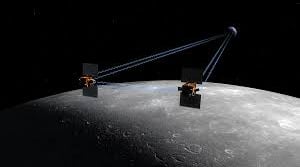
Aminated Graphene Supercapacitors
Latest News: 17th May 2025, UPSC Preparation
Researchers have developed a cost-effective material for supercapacitors that outperforms traditional lithium-ion batteries. This innovation promises faster charging times and greater energy storage capacity. The new technology addresses challenges in sustainable energy adoption globally.
What Are Supercapacitors?
Supercapacitors are energy storage devices that bridge the gap between conventional capacitors and batteries. They store energy electrostatically and offer rapid charge and discharge capabilities. Their unique properties make them suitable for applications requiring quick energy bursts.
Innovative Material Development
The research focuses on aminated graphene, derived from reduced graphene oxide. This material is produced using a streamlined, single-step process that converts ordinary graphite into high-performance aminated graphene. This method operates under standard temperature and pressure, making it more accessible and affordable than traditional fabrication techniques.
Performance Metrics
Laboratory tests reveal that supercapacitors using this new material achieve an electrochemical window of 2.2V. They maintain over 98% of their capacity after 10,000 charge-discharge cycles. The energy density surpasses 50 Wh/kg, making it five times more effective than non-aminated alternatives.
Applications and Implications
The implications of this breakthrough are vast. Potential applications include electric vehicles and grid-scale renewable energy storage. The technology supports rapid charging and long-term durability, essential for managing intermittent renewable energy sources like solar and wind.
Patent and Future Prospects
The research team has secured an Indian patent and is pursuing international patents. This innovation aligns with India’s ‘Make in India’ initiative, aiming to reduce dependence on imported battery technologies. Further testing is underway to scale the technology for commercial production.
Environmental Impact
This advancement could impact India’s renewable energy sector. As the country shifts towards sustainable power sources, efficient energy storage solutions will become crucial. The aminated graphene supercapacitor technology offers a domestically developed alternative to existing technologies.
Global Energy Transition
As the world faces climate change and rising energy demands, innovations like this supercapacitor technology provide hope for a cleaner energy future. Successful implementation could reshape how electrical energy is stored and utilised across various sectors.
(NNI / Latest news / Latest news india / India latest news/UPSC Preparation)


New Ribbon Worm Species
Latest News: 16th May 2025, UPSC Preparation
Scientists announced the discovery of a new species of ribbon worm named Pararosa vigarae off the coast of Galicia, Spain. This unique species, known as the “accordion worm,” can contract its body into ring-like folds, resembling an accordion. The identification of this worm was confirmed through a combination of morphological traits and molecular genetic analysis, marking advancement in the understanding of marine biodiversity.
Characteristics of Pararosa Vigarae
Pararosa vigarae belongs to the phylum Nemertea. This species exhibits a remarkable ability to compress its body to one-fifth of its normal length. The worm was found in the subtidal zone of the Ría de Arosa estuary at depths of approximately 30 metres. Its distinctive morphology includes annular constrictions that are visible even when the worm is fully extended, with the number of rings varying according to the worm’s size.
Advances in Taxonomy
Historically, ribbon worms have posed challenges for classification due to their lack of distinctive external features. Scientists have relied on internal anatomy, which can be complex and time-consuming. The introduction of molecular techniques, such as DNA sequencing, has revolutionised the identification process. The combination of morphological data with genetic analysis allows for more accurate and efficient species classification.
Importance of Marine Biodiversity
The discovery of Pararosa vigarae marks the critical need to understand marine biodiversity, especially amid ongoing environmental changes. Currently, around 1,350 ribbon worm species have been documented, but estimates suggest that many more remain undiscovered. The subtidal zones of Galicia are particularly under-researched, indicating a rich potential for new species and vital information about marine ecosystems.
Methodological Innovations in Marine Research
The identification of Pararosa vigarae exemplifies the successful integration of traditional fieldwork and modern scientific techniques. Researchers employed SCUBA diving for specimen collection and utilised high-resolution imaging alongside genetic analysis to confirm the species. This collaborative approach enhances scientific understanding and marks the importance of partnerships between marine scientists and local communities.
Implications for Conservation Efforts
Studying new species like Pararosa vigarae is vital for conservation efforts. The ongoing biodiversity crisis necessitates a focus on undiscovered species and their habitats. The findings from Galicia could provide crucial vital information about the resilience of marine ecosystems, particularly in the face of climate change and habitat degradation.
(NNI / Latest news / Latest news india / India latest news/UPSC Preparation)


Regulating Autonomous Weapons Systems
Latest News: 15th May 2025, UPSC Preparation
Countries are convening at the United Nations to discuss the regulation of autonomous weapons systems. These AI-driven technologies are increasingly used in modern warfare, raising ethical and legal concerns. The urgent need for international standards is telld by the rapid deployment of these systems in conflicts like those in Ukraine and Gaza. As nations ramp up defence spending, experts warn that the lack of regulation could lead to catastrophic consequences.
The Rise of Autonomous Weapons
Autonomous weapons systems can select and engage targets without human intervention. They use algorithms and sensor data to make life-and-death decisions. This technology has advanced rapidly, leading to concerns about accountability and ethical implications. Countries like Russia and Israel have already deployed these systems in active conflict zones.
International Efforts to Regulate
Since 2014, nations have been meeting under the Convention on Conventional Weapons (CCW) to discuss potential regulations. However, progress has been slow. UN Secretary-General Antonio Guterres has set a 2026 deadline for establishing clear rules. Many countries support a binding global framework while others prefer national guidelines.
Human Rights Concerns
The use of autonomous weapons poses serious risks to human rights. Key issues include the right to life, peaceful assembly, and human dignity. These systems lack the human judgment necessary to assess situations accurately. They may also perpetuate discrimination and violate privacy rights. The potential for mass surveillance during their development raises further ethical dilemmas.
Call for a New Treaty
Human Rights Watch and the International Human Rights Clinic advocate for a legally binding treaty. This treaty should prohibit the development and use of fully autonomous systems. It should also ensure that any remaining systems operate under meaningful human control. The proposed treaty aims to protect human rights and prevent the dehumanisation of warfare.
Global Consensus and Challenges
Achieving a global consensus on regulations is challenging. Nations like the United States, Russia, China, and India are hesitant to agree on binding rules. They argue that existing laws are sufficient. However, the rapid proliferation of autonomous weapons necessitates urgent action. Without regulation, the risk of an arms race and violations of human rights will escalate.
Future Implications
The future of warfare may be deeply altered by autonomous weapons systems. As technology evolves, so do the ethical and legal challenges associated with it. The international community must act swiftly to establish regulations that ensure accountability and protect fundamental human rights.
(NNI / Latest news / Latest news india / India latest news/UPSC Preparation)


Earth’s Magnetic Field and Its Changes
Latest News: 14th May 2025, UPSC Preparation
Recent studies have revealed vital information about Earth’s magnetic field. Scientists have converted magnetic signals into sound to highlight its fluctuations over the past 100,000 years. This innovative approach has led to the creation of soundtracks that capture historical geomagnetic events. One notable event is the Laschamps excursion, which occurred 41,000 years ago, when the magnetic field weakened . Scientists continue to explore the implications of these changes on Earth’s environment and life.
Earth’s Magnetic Field Overview
Earth’s magnetic field acts as a protective shield against cosmic radiation. It is generated in the liquid outer core, approximately 2,900 km below the surface. The movement of molten iron creates electric currents, which in turn generate magnetic fields. These fields extend from the magnetic north pole to the south pole, forming a protective bubble around the planet.
Geomagnetic Reversals and Excursions
Geomagnetic reversals occur when the magnetic poles switch places. In contrast, excursions are temporary shifts in the magnetic field’s strength. Reversals are labelled as such if they last more than 100,000 years. The Brunhes-Matuyama reversal, which happened 780,000 years ago, is the most known reversal. Current research is focused on understanding the causes and impacts of these events.
Recent Findings on Magnetic Field Changes
Over the last 200 years, Earth’s magnetic field strength has decreased by approximately 10%. If this trend continues, predictions suggest a potential drop to zero in 1,500 to 1,600 years. This raises concerns about possible future reversals or excursions. Historical data indicates that magnetic poles have reversed 183 times in the last 83 million years.
Impact of Geomagnetic Events
Studies suggest that geomagnetic events like the Laschamps excursion may have affected atmospheric conditions, such as ozone concentrations. However, conflicting evidence exists regarding their impact on life. Some studies indicate no substantial effects on species like Neanderthals due to atmospheric protection from cosmic rays.
Magnetic Pole Movement
The north magnetic pole has been drifting at an accelerating rate, moving towards Siberia. It has shifted over 1,100 km since its first recording in 1831. In contrast, the south magnetic pole has remained stable. This difference in behaviour reflects underlying processes in the outer core, but the exact causes are still not fully understood.
Research Techniques and Future Directions
Scientists utilise geomagnetic observatories, satellites, and geological samples to study the magnetic field. Historical ship logs and archaeological findings provide additional vital information about long-term changes. Recent studies have identified traces of past excursions in various regions, contributing to our understanding of magnetic behaviour over time.
Advancements in Magnetic Field Modelling
Future advancements in computational resources are expected to improve our understanding of magnetic field dynamics. Current models can forecast magnetic behaviour up to five years ahead. Enhanced models may allow for better predictions of geomagnetic events and their potential impacts.
(NNI / Latest news / Latest news india / India latest news/UPSC Preparation)


Shuangjiangkou Hydropower Project
Latest News: 13th May 2025, UPSC Preparation
The Shuangjiangkou Hydropower Project in Sichuan, China, is nearing completion. This dam, set to be the tallest in the world, stands at 315 metres. It has a storage capacity of 110 million cubic metres and aims to generate 2,000 megawatts of electricity annually. This power output is sufficient to supply over three million homes. Construction began nearly a decade ago, and the first phase of water storage was completed on May 1, 2025.
Project Details
The Shuangjiangkou dam is located in the Aba Tibetan and Qiang autonomous prefecture. It rises from the upper section of the Dadu River, flowing from the Tibetan Plateau towards the Sichuan Basin. The dam’s height surpasses that of the Jinping-I dam by 10 metres. The project cost approximately 36 billion Yuan (US$4.9 billion) and has been engineering undertaking.
Operational Timeline
PowerChina, the project developer, has indicated that the first unit of the dam is expected to begin electricity production by the end of 2025. Once operational, the dam will produce over 7 billion kWh of renewable energy each year. This energy output will contribute to China’s energy needs.
Environmental Impact
The Shuangjiangkou dam is designed to support China’s green energy goals. It will offset approximately 2.96 million tonnes of coal consumption annually. Additionally, it is projected to reduce carbon dioxide emissions by about 7.18 million tonnes. This aligns with China’s commitment to achieving carbon neutrality.
Engineering Challenges
Constructing the dam presented numerous challenges due to its high-altitude location and complex geological conditions. Engineers faced issues such as seismic resistance and controlling seepage. Advanced technologies, including robotics and 5G systems, have been employed to address these challenges. Robotic rollers collect real-time data, while drones monitor environmental risks.
China’s Global Position in Dam Construction
China is the global leader in dam construction, having built over 22,000 dams taller than 15 metres since the 1950s. This accounts for nearly half of the world’s total. Most of these structures are concentrated in the southwest region of the country.
International Relations and Concerns
China’s dam-building activities have raised concerns among neighbouring countries, particularly India and Bangladesh. The planned construction of the world’s largest dam on the Brahmaputra River has prompted discussions about potential impacts on water flow. However, Chinese officials assert that the project will not adversely affect downstream nations.
(NNI / Latest news / Latest news india / India latest news/UPSC Preparation)
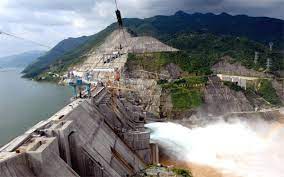

MADMAX Experiment
Latest News: 12th May 2025, UPSC Preparation
Recent developments in dark matter research highlight the ongoing efforts to detect elusive particles that may constitute this mysterious substance. The MAgnetized Disk and Mirror Axion eXperiment (MADMAX) has emerged as a promising initiative. It aims to identify dark matter candidates. Despite challenges in detection, the MADMAX experiment has shown potential through innovative methodologies.
About Dark Matter Candidates
Dark matter is believed to make up about 27% of the universe. Axions and dark photons are two leading candidates for its composition. Axions are hypothetical particles that could resolve several theoretical issues in particle physics. Dark photons are heavier counterparts to regular photons and may interact with normal matter under specific conditions.
The MADMAX Experiment
MADMAX employs a unique detection approach. It uses a sophisticated instrument consisting of a stack of sapphire disks and a reflective mirror. The primary goal is to detect dark photons, which can convert into ordinary photons. The experiment utilises a resonator to enhance this conversion process, enabling better detection capabilities.
Experimental Design and Methodology
The experimental setup includes a resonator designed to boost photon conversion. This resonator comprises parallel dielectric disks, allowing for larger resonators than previous designs. The MADMAX team employs a microwave receiver system to measure the output power from this setup. They specifically search for signals that indicate the presence of dark photons, looking for a distinct frequency amidst background noise.
Initial Findings and Future Prospects
The first search for dark photons using the MADMAX prototype did not yield detectable signals linked to these particles. However, it demonstrated the experiment’s potential. The sensitivity achieved was higher than in past experiments. Future upgrades are planned to enhance the detection capabilities further. This includes cooling the setup to reduce thermal noise and increasing the size of the resonator.
Future Directions of MADMAX
Upcoming iterations of the MADMAX experiment will operate in a strong magnetic field. This will enable simultaneous searches for both dark photons and axions. Researchers aim to refine their techniques, expanding the range of masses they can explore. These advancements could contribute to our understanding of dark matter.
(NNI / Latest news / Latest news india / India latest news/UPSC Preparation)


Lead Transmutation into Gold at CERN’s LHC
Latest News: 11th May 2025, UPSC Preparation
Recent advancements in nuclear physics have revealed remarkable vital information about the transmutation of lead into gold. This process, once a fantasy of medieval alchemists, has now been quantified by the ALICE collaboration at CERN’s Large Hadron Collider (LHC). Their findings highlight a new mechanism through which lead nuclei can transform into gold, reinforcing the significance of high-energy collisions in particle physics.
Historical Context of Alchemy
Alchemy was an ancient practice aimed at transforming base metals into precious ones. The quest for chrysopoeia, or the art of gold-making, symbolised the desire for wealth and immortality. Alchemists believed in the possibility of converting lead, a common metal, into gold, which was rare and valued.
Nuclear Physics and Transmutation
The 20th century marked the dawn of nuclear physics, revealing that heavy elements could change into others via radioactive decay or artificial means. Unlike chemical methods, nuclear reactions allow for the transformation of elements, leading to the production of gold under specific conditions. The ALICE collaboration has now demonstrated this phenomenon using high-energy collisions at the LHC.
Mechanism of Gold Production
The process begins with ultra-peripheral collisions between lead nuclei. These collisions occur without direct contact, allowing electromagnetic fields to interact. When lead nuclei travel at 99.999993% of the speed of light, their strong electromagnetic fields can induce interactions that lead to photon emissions. This triggers electromagnetic dissociation, where protons and neutrons are ejected from the lead nucleus.
Experimental Findings and Measurements
The ALICE team utilised zero degree calorimeters to measure photon-nucleus interactions. They observed emissions of neutrons and protons, which are crucial for the production of gold. Specifically, three protons must be removed from a lead nucleus to form a gold nucleus. The experiments conducted during Run 2 of the LHC produced approximately 86 billion gold nuclei, equating to a minuscule mass of 29 picograms.
Implications of the Research
While the production of gold from lead at the LHC is scientifically , the quantities generated are trivial compared to what would be needed for practical applications. The research not only validates theoretical models of electromagnetic dissociation but also aids in understanding beam losses in particle accelerators. This knowledge is vital for enhancing the performance of the LHC and future colliders.
Future Prospects
As the LHC continues to upgrade its luminosity, the rate of gold production is expected to increase. However, the amounts will still be far from economically viable. This ongoing research opens new avenues in nuclear physics and paves the way for further exploration of high-energy particle interactions.
(NNI / Latest news / Latest news india / India latest news/UPSC Preparation)


Kosmos 482 Spacecraft
Latest News: 10th May 2025, UPSC Preparation
The Kosmos 482 spacecraft, launched in 1972, is set to re-enter Earth’s atmosphere after over 50 years in orbit. Originally intended for a mission to Venus, it malfunctioned shortly after launch and remained in low Earth orbit. The spacecraft is expected to fall back to Earth around May 10, 2025. Experts have assessed the risks associated with its re-entry, noting that the likelihood of it causing harm is minimal.
Background
Kosmos 482 was part of the Soviet Union’s Venera Program, which aimed to explore Venus. The mission launched on March 31, 1972, shortly after Venera 8. While Venera 8 successfully landed on Venus, Kosmos 482 failed to escape Earth’s orbit due to a malfunction in its upper rocket stage. The lander module separated but remained trapped in orbit.
Physical Characteristics
The lander module of Kosmos 482 is a spherical object approximately one metre in diameter, weighing around 500 kilograms. It is constructed with durable materials designed to withstand the extreme conditions of Venus. Its robust heat shield raises the possibility of surviving re-entry into Earth’s atmosphere.
Re-entry Predictions
The re-entry of Kosmos 482 is uncontrolled, meaning its landing site is uncertain. The capsule’s trajectory could place it anywhere between 51.7° north and south latitude. This range covers much of the populated world, from London to southern South America. However, experts estimate the risk of impact is low.
Historical Context of Space Debris
Uncontrolled re-entries of space debris are not uncommon. Larger spacecraft re-enter the atmosphere weekly, while smaller objects do so daily. Most burn up before reaching the ground. Previous incidents include China’s Long March 5B booster and the Tiangong-1 space station, both of which re-entered safely over oceans.
Future of Spacecraft Design
Experts advocate for improved design in future spacecraft. They suggest that spacecraft should be engineered for controlled re-entries. This would enhance predictability of landing locations and reduce risks associated with space debris. Effective management of space debris is essential for protecting people and the environment.
Impact
While Kosmos 482’s re-entry poses some risks, the chances of harm are minimal. The spacecraft’s robust design and the vast ocean coverage on Earth contribute to a low probability of damage. The event serves as a reminder of the ongoing challenges in space exploration and the importance of responsible space management.
(NNI / Latest news / Latest news india / India latest news/UPSC Preparation)


Palaeofires
Latest News: 09th May 2025, UPSC Preparation
Recent discoveries have shed light on palaeofires, revealing their significance in Earth’s history. Scientists have traced evidence of these ancient wildfires back to the Permian Period, approximately 250 million years ago, within the Godavari Basin in India. This research offers crucial vital information about vegetation, climate evolution, and coal formation throughout geological history.
About Palaeofires
Palaeofires are ancient wildfire events preserved in geological records. They provide valuable information about past ecosystems and climatic conditions. These fires have left a lasting imprint on landscapes and vegetation patterns, influencing coal formation processes.
Research Techniques
A combination of advanced analytical techniques was employed in this study. Palynofacies analysis categorised organic particles in sedimentary rocks. Raman Spectroscopy, Rock-Eval Pyrolysis, and FTIR Spectroscopy further examined microscopic organic matter and fossil charcoal. These methods allowed researchers to differentiate between various types of charcoal and organic materials.
Types of Organic Particles
The analysis identified three main types of organic particles:
Translucent Organic Matter (TrOM): Includes pollen and plant debris.
Palaeofire Charcoal (PAL-CH): Direct evidence of vegetation burning.
Oxidised Charcoal (OX-CH): Likely reworked or transported post-burning.
This classification aids in understanding the history and impact of wildfires.
Key Findings
A discovery was the ability to distinguish between in situ (on-site) and ex situ (transported) charcoal. This resolves a long-standing debate in geology regarding the origins of charcoal found in coal-bearing formations. The study also revealed stratigraphic patterns showing that fire residues were well-preserved during regressive phases (sea-level drop) and more oxidised during transgressive phases (sea-level rise).
Impact of Atmospheric Conditions
High atmospheric oxygen levels during the Permian Period likely increased the frequency and scale of wildfires. This suggests that prehistoric Earth was more fire-prone than previously thought. The findings from the Raniganj Coalfield indicate a connection between palaeomires and seasonal drought-induced fires.
Implications for Modern Climate Studies
Understanding the role of palaeofires in carbon cycling is crucial for modern climate change mitigation strategies. Information gained from these ancient events can inform current approaches to carbon sequestration. This research enhances our understanding of past ecosystems and fire dynamics, providing essential tools for palaeoclimate reconstructions.
Future Research Directions
Further studies are needed to explore the relationship between palaeofires and climate change. Continued investigation into the geological records will enhance our understanding of how ancient wildfires shaped the Earth’s environments.
(NNI / Latest news / Latest news india / India latest news/UPSC Preparation)

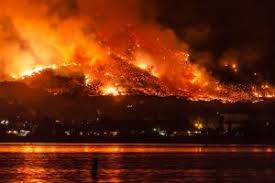
Yangtze Finless Porpoise
Latest News: 08th May 2025, UPSC Preparation
Recent studies have revealed vital information about the decline of the Yangtze finless porpoise. This species is the only known freshwater porpoise and is critically endangered. Researchers from China have employed classical Chinese poetry to trace the historical distribution of this porpoise over more than a millennium. Their findings highlight the impact of human activities on wildlife and showcase how historical art forms can provide valuable ecological data.
Historical Context
The Yangtze finless porpoise, scientifically known as Neophocaena asiaeorientalis asiaeorientalis, has been referenced in Chinese poetry for over 1,400 years. The research team identified 724 poems mentioning the porpoise, spanning from the Tang Dynasty (618-907 AD) to the Qing Dynasty (1636-1912 AD). The Qing Dynasty contained the highest number of references, indicating a once widespread presence of the species.
Methodology of the Study
The researchers meticulously filtered and collated poems that referenced the porpoise. They focused on specific location information within the poems, which provided vital information about the porpoise’s historical range. Half of the identified poems contained location data, allowing for the mapping of the porpoise’s distribution over time.
Findings on Range Contraction
The study revealed a staggering 65% contraction in the porpoise’s range from the Tang Dynasty to modern times. The number of occurrence grids decreased from 169 to 59, with the most loss occurring in tributaries and lakes. The range in these areas has diminished by 91%, while the main river’s range has reduced by 33%.
Impact of Human Activities
Human activities, particularly dam construction, have been identified as the primary cause of the porpoise’s decline. The construction of dams since the 1950s has obstructed migration routes between the Yangtze River and its tributaries. This has severely restricted the porpoise’s habitat and contributed to its dwindling population.
Importance of Historical Data
The researchers argue that historical art forms, such as poetry, can provide critical vital information about wildlife changes over time. This study illustrates how ancient texts can serve as valuable resources in biodiversity studies. They offer a unique perspective on species distribution, climate change, and biodiversity loss.
Conservation Implications
Understanding the historical distribution and population size of the Yangtze finless porpoise is crucial for effective conservation efforts. The study marks the need for comprehensive data to set realistic conservation goals. Historical references can complement modern survey data, providing a fuller picture of the species’ decline.
(NNI / Latest news / Latest news india / India latest news/UPSC Preparation)


Microgravity’s Impact on Human Thermoregulation
Latest News: 07th May 2025, UPSC Preparation
Recently, Voyager 1 reached a distance of 25 billion kilometres from Earth, marking it as the farthest human-made object in space. As humanity contemplates future manned missions to such distances, understanding human physiology in microgravity becomes crucial. Recent research from the Indian Institute of Space Science and Technology (IIST) marks challenges in thermoregulation, the body’s ability to maintain a stable internal temperature, in microgravity environments.
About Microgravity
Microgravity is a condition of apparent weightlessness experienced in space. It occurs when objects are in free-fall orbit around Earth. While gravity is still present, it is weaker, leading to unique physiological effects on the human body. This environment impacts bones, muscles, blood circulation, metabolism, and thermoregulation.
The Importance of Thermoregulation
Thermoregulation is vital for maintaining optimal body temperature. In space, the body’s response to temperature changes is altered due to microgravity. Factors such as age, fitness, and body composition affect how individuals regulate temperature. Understanding these variations is essential for astronaut health during long-duration missions.
The IIST Thermoregulation Model
Researchers at IIST developed a 3D computational model to simulate heat movement in the human body under microgravity. This model incorporates factors like sweating, shivering, clothing effects, and organ heat. Key findings include:
Hands and feet cool down in microgravity.
Core body areas, including the head and abdomen, become warmer.
During exercise, body temperature rises more rapidly in space.
Implications of the Findings
The model predicts that core body temperature can increase from 36.3°C to 37.8°C after 2.5 months in microgravity. With exercise, temperatures may approach 40°C, posing health risks. The researchers validated the model’s accuracy using data from the Mir Space Station and the International Space Station (ISS), confirming its predictive capabilities.
Applications Beyond Space Travel
The thermoregulation model has broader applications. It can enhance safety and comfort in various fields such as clothing design and architecture. For example, it helps clothiers design apparel that maintains optimal body temperature. In architecture, it aids in creating buildings that mitigate heat stress. In medicine, these models guide temperature management during surgeries, ensuring patient safety.
Universal Thermal Climate Index
The model also estimates the Universal Thermal Climate Index (UTCI), which indicates perceived temperature by considering wind, humidity, and sunlight. This index is valuable for understanding comfort levels in different environments, both in space and on Earth.
(NNI / Latest news / Latest news india / India latest news/UPSC Preparation)


Pahalgam terror attack: Swiss visa rejection led newly-wed Naval officer to a nightmare honeymoon in Pahalgam
Latest News: 30th April 2025, UPSC Preparation
The couple planned to honeymoon in Switzerland, but changed plans after visa denial, says family; “Pakistan should be taught a lesson... should be ruined,” says relative.
Jammu and Kashmir was not on the original list of honeymoon locations for Lieutenant Vinay Narwal and his wife Himanshi. The duo planned to go Switzerland, but when their visa was rejected, they ended up at Pahalgam instead. Six days after tying the knot, their idyllic holiday in ‘mini Switzerland’ ended in tragedy, when Vinay was killed by terrorists in Tuesday’s attack.
(NNI / Latest news / Latest news india / India latest news/UPSC Preparation)


Bad news for this Indian company employees, set to sack 600 people due to…, not Narayana Murthy’s Infosys, Ratan Tata’s TCS, Wipro, Google, name is…
Latest News: 30th April 2025, UPSC Preparation
ArcelorMittal S.A. is a known multinational company based in Luxembourg, Europe. Indian-origin Lakshmi Mittal and his family hold a 39.87 percent stake in the company and public shareholders hold a 56.20 percent stake.
Lakshmi Mittal News: Renowned steel company ArcelorMittal is likely to cut around 600 jobs in France as it faces a serious crisis in the European steel market. According to an AFP report, the layoffs will affect seven of the company’s sites in northern France, where around 7,100 people are employed. It is important to note that ArcelorMittal is the second-largest steel manufacturing company in the world.
The job cuts come as the European steel industry is also under pressure from the new 25 percent tariff imposed by the United States. Due to the ongoing crisis in the industry, ArcelorMittal is proceeding with the job reductions.
ArcelorMittal S.A. is a known multinational company based in Luxembourg, Europe. Indian-origin Lakshmi Mittal and his family hold a 39.87 percent stake in the company and public shareholders hold a 56.20 percent stake. Lakshmi Mittal is the Executive Chairman of the company. ArcelorMittal was formed in 2007 through the USD 33 billion acquisition of Arcelor by Mittal Steel Company.
1,25,416 Employees as of December 31, 2024
It is important to note that ArcelorMittal manufactures steel has its presence in 15 countries and customers in 129 nations. According to the company’s website, it had 1,25,416 employees as of December 31, 2024. The company’s revenue in 2024 was $62.44 billion, and its operating income was recorded at USD 3.310 billion.
(NNI / Latest news / Latest news india / India latest news/UPSC Preparation)


Lady Don’ Zikra Arrested in Seelampur Murder Case: Was It Revenge for a 2024 Dispute?
Latest News: 19th April 2025, UPSC Preparation
Delhi Police has arrested 25-year-old Zikra Khan, who refers to herself as "Lady Don," in connection with the fatal stabbing of a 17-year-old boy named Kunal in the Seelampur area. Authorities believe the attack was an act of revenge linked to a prior confrontation involving Kunal and one of the accused.
During questioning, Zikra allegedly admitted to her role in the murder. Police investigations suggest that the motive stems from an incident dating back to November 2024, when the primary suspect in Kunal’s killing was assaulted by another man. Kunal was reportedly present at the time of that altercation, which may have marked him for retaliation.
The killing triggered widespread unrest in the neighborhood, with Kunal’s family and local residents staging late-night protests. The demonstrations prompted the deployment of additional security forces and drew attention from top political leaders in the capital.
Delhi Chief Minister Rekha Gupta responded to the incident by assuring the victim’s family of swift justice. “I have spoken to the Police Commissioner. The authorities are actively investigating the case, and I am confident the culprits will be brought to justice,” she stated.
(NNI / Latest news / Latest news india / India latest news/UPSC Preparation)


What is MASLD?
Latest News: 28th December 2024, UPSC Preparation
Recent studies have revealed the reclassification of Non-Alcoholic Fatty Liver Disease (NAFLD) to Metabolic Dysfunction-Associated Steatotic Liver Disease (MASLD). This change aims to clarify the connection between fatty liver disease and metabolic disorders, such as obesity and diabetes.
Definition of MASLD
MASLD refers to liver fat accumulation linked primarily to metabolic dysfunction. This term replaces NAFLD, which focuses on the absence of alcohol use, often perpetuating stigma.
Risk Factors for MASLD
Belly fat increases the risk of developing MASLD, with a likelihood increase of 2-3 times. Approximately 25% of the global population is affected, with rates climbing to 50-70% in individuals with obesity or type 2 diabetes.
Diagnostic Advancements
Recent advancements in diagnostic tools have improved the identification of MASLD. Non-invasive methods such as FibroScan, MRI, and ultrasound accurately measure liver fat and stiffness. Blood tests, including ALT, AST, and GGT, assess liver health, while new markers like CK-18 fragments and the ELF score are being developed for enhanced diagnosis.
The shift to MASLD has implications for patient care, which promotes early diagnosis and tailored treatments, including weight loss and better management of blood sugar and cholesterol levels. These interventions can mitigate the risk of severe complications such as heart disease and liver cirrhosis.
Preventive Measures
Preventing MASLD involves dietary modifications. Avoiding fast food, processed foods, sugary items, and red or processed meats is crucial. A balanced diet rich in whole grains, fruits, vegetables, and lean proteins is recommended to lower the risk of developing MASLD.
(NNI / Latest news / Latest news india / India latest news/UPSC Preparation)


What is Archaea?
Latest News: 27th December 2024, UPSC Preparation
Recent studies have brought to light the resilience of archaea, ancient microorganisms that thrive in extreme environments. Researchers have focused on the toxin-antitoxin (TA) systems of these organisms, particularly in response to rising global temperatures and changing climates. How archaea survive harsh conditions could provide vital information about evolutionary strategies and environmental adaptations.
About Archaea
Archaea are one of the oldest life forms on Earth, which is distinct from bacteria and eukaryotes, with unique biochemical pathways. These microorganisms often inhabit extreme environments, such as hot springs and deep-sea vents, where conventional life forms cannot survive.
The Role of Toxin-Antitoxin Systems
TA systems are crucial for the survival of archaea under stress. They consist of two components – a toxin that inhibits cell functions and an antitoxin that neutralizes the toxin’s effects. This balance allows archaea to manage cellular stress effectively.
Focus on Sulfolobus acidocaldarius
The research centred on Sulfolobus acidocaldarius, a heat-loving archaeon found in volcanic areas. This organism can endure temperatures up to 90°C. The study revealed the specific TA system, VapBC4, which plays a vital role in its survival during heat stress.
When exposed to high temperatures, a protease activates the VapC4 toxin by degrading the VapB4 antitoxin. This process halts protein production, conserving energy and preventing damage. The archaeon enters a dormant state, known as “persister cells,” allowing it to survive until conditions improve.
Biofilm Formation
The research also uncovered that VapBC4 aids in biofilm formation. Biofilms are protective structures that enhance survival in extreme conditions. This ability demonstrates the adaptability of archaea and their strategies for enduring environmental stress.
The findings contribute to our understanding of microbial resilience and evolution. As climate change continues to affect ecosystems, insights from archaea may inform conservation efforts and biotechnological applications.
(NNI / Latest news / Latest news india / India latest news/UPSC Preparation)


‘Viksit Panchayat Karmayogi’ Initiative
Latest News: 26th December 2024, UPSC Preparation
The ‘Viksit Panchayat Karmayogi’ initiative was launched on Good Governance Day and commemorates the 100th birth anniversary of former Prime Minister Atal Bihari Vajpayee. The initiative aims to strengthen Panchayati Raj Institutions (PRIs) through enhanced governance tools and knowledge.
Objective of the Initiative
The initiative is part of the ‘Prashasan Gaon Ki Aur’ campaign, to empower elected representatives and officials in effective governance. The focus is on grassroots-level reforms to create lasting change.
Tools for Capacity Building
The program employs various technological tools, which include e-learning platforms, AI-powered chatbots, and mobile applications. These resources aim to bridge knowledge gaps and improve service delivery in rural governance.
The initiative commenced in states like Odisha, Assam, Gujarat, and Andhra Pradesh. It aligns with the government’s decentralization efforts. The aim is to promote citizen involvement in decision-making processes.
Additional Initiatives Launched
On the same day, Dr. Singh launched other governance initiatives. A new dashboard on the iGOT Karmayogi platform was introduced. This dashboard now features 1,600 e-learning courses to enhance capacity-building efforts.
CPGRAMS Report and Grievance Redressal
The CPGRAMS Annual Report 2024 was also revealed. This report assesses the Centralized Public Grievance Redress and Monitoring System (CPGRAMS) has resolved over 2.5 million grievances annually, ensuring transparency in public services.
Simplified Pension Application Process
A new digital pension application form was introduced. This form consolidates nine previous forms into one. It allows for real-time tracking and employs Aadhaar-based e-signatures for efficiency.
Dr. Singh brought into light the administration’s reforms since 2014. He noted key changes such as extended maternity benefits and new technologies for pension processing. The focus remains on empowering citizens in governance.
(NNI / Latest news / Latest news india / India latest news/UPSC Preparation)

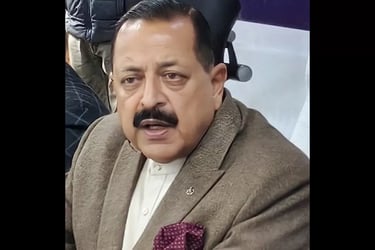
What is Glass Child Syndrome?
Latest News: 25th December 2024, UPSC Preparation
The term “glass child” refers to siblings of children with chronic illnesses or disabilities. These siblings often feel invisible, overshadowed by their sibling’s condition, which has gained attention, denoting the emotional struggles faced by these children.
Emotional Impact on Siblings
Siblings of chronically ill children may experience feelings of neglect. They often perceive that their needs are secondary to those of their ill sibling. Studies indicate that these emotions can lead to resentment and jealousy as they navigate their family dynamics.
Recognising Signs of Distress
It is crucial for parents to observe signs of emotional distress in their healthy children. Symptoms may include frustration, jealousy, or feelings of being overlooked. Parents should remain vigilant to ensure that these feelings are addressed promptly and compassionately.
Maintaining open lines of communication is vital. Parents should engage their healthy children in discussions about their sibling’s illness. This helps to validate their feelings and provides an opportunity for siblings to express their concerns and emotions.
Creating Quality Time
Setting aside dedicated time for the healthy sibling is essential. Parents can plan one-on-one activities to strengthen their bond. These moments can help the child feel valued and reduce feelings of resentment.
Encouraging Responsibility and About
Healthy siblings might adopt a sense of responsibility for their ill sibling. While this can encourage maturity, it is important to balance this with the child’s need for normalcy. Parents should encourage healthy siblings to enjoy their childhood while supporting their sibling.
The experience of being a glass child can shape a sibling’s character. They may develop empathy and compassion as they navigate their unique family situation. About these dynamics can help parents encourage a supportive environment for both children.
(NNI / Latest news / Latest news india / India latest news/UPSC Preparation)


eCourts Mission Mode Project
Latest News: 16th December 2024, UPSC Preparation
The eCourts Mission Mode Project aims to modernize the Indian Judiciary through improved Information and Communication Technology (ICT). The project is being implemented in phases, with ongoing collaboration between the Department of Justice and the eCommittee of the Supreme Court.
Phase I Overview
Phase I of the eCourts project commenced in 2011 and concluded in 2015. This phase focused on the basic computerization of the judiciary. Key activities included setting up computer hardware and ensuring internet connectivity. The e-Courts platform was launched during this phase. The total budget allocated was 935 crore rupees, of which 639 crore rupees were utilized.
Phase II Developments
Phase II spanned from 2015 to 2023 and aimed to enhance ICT in District and Subordinate Courts. This phase introduced several citizen-centric initiatives to improve access and efficiency. The budget for Phase II was 1,670 crore rupees, with nearly all funds, 1,668 crore rupees, being spent. By the end of this phase, digital infrastructure had been established in 18,735 courts across the country.
Phase III Initiatives
Phase III was approved in September 2023 and has larger budget of 7,210 crore rupees. This phase is designed to build on previous successes and introduce advanced initiatives. Key features include the establishment of Digital and Paperless Courts, digitisation of court records, and expanded video conferencing capabilities for courts, jails, and hospitals. Additionally, online courts will be extended to manage a wider array of cases, including traffic violations.
The ongoing implementation of the eCourts project is expected to revolutionise the judicial process in India. The integration of technology aims to streamline operations, enhance transparency, and improve access to justice for citizens. Each phase builds upon the last, ensuring a comprehensive approach to modernising the judiciary.
(NNI / Latest news / Latest news india / India latest news/UPSC Preparation)


What is ecDNA?
Latest News: 05th December 2024, UPSC Preparation
Extrachromosomal DNA (ecDNA) has gained attention in cancer research. Recent studies have found it in many types of tumours, showing its key role in cancer biology.
Discovery and Importance
ecDNA was discovered 50 years ago as a small genetic fragment in cancer cells. Initially, it was thought to appear in only 1.4% of tumours. Advanced research now indicates ecDNA is found in up to 90% of certain brain tumours. This marks its essential role in cancer progression.
Formation of ecDNA
In normal cells, DNA is organised within 23 pairs of chromosomes in the nucleus. Damage from smoking or environmental factors can cause DNA to break. This broken DNA may form a circular structure, leading to ecDNA. Unlike chromosomal DNA, ecDNA can move freely and cluster with other ecDNA.
The mobility of ecDNA enhances the expression of oncogenes. This contributes to faster tumour growth. It also aids in developing resistance to treatments like chemotherapy. A study found ecDNA in 17% of tumour samples from nearly 15,000 cancer patients.
Inheritance and Survival Advantage
ecDNA violates Mendel’s third law of inheritance. It is inherited in clusters during cell division. This gives cancer cells an advantage by preserving beneficial genetic combinations that promote growth.
Therapeutic Potential
Despite its risks, ecDNA presents a potential weakness in cancer cells. Its structure increases gene activity, stressing the cell’s DNA repair system. Blocking the CHK1 protein can selectively kill cancer cells with ecDNA. Boundless Bio is developing treatments targeting ecDNA-driven cancers like glioblastoma, ovarian, and lung cancers.
These findings may lead to new therapies targeting ecDNA. About its role could improve treatment outcomes for various cancers. Research continues to explore effective strategies against ecDNA-related challenges.
Important Facts for Exams:
ecDNA: Extrachromosomal DNA is a small, circular genetic fragment found in cancer cells. It enhances oncogene expression, contributing to tumour growth and resistance against chemotherapy treatments.
CHK1: CHK1 is a DNA repair protein that, when blocked, selectively kills cancer cells with ecDNA. This mechanism shows potential for developing targeted cancer therapies.
Boundless Bio: Boundless Bio is a biotechnology company focused on targeting ecDNA-driven cancers. Their research aims to develop novel treatments for glioblastoma, ovarian, and lung cancers.
Mendel’s third law: Mendel’s third law states that genes are inherited independently. However, ecDNA violates this law by clustering during cell division, giving cancer cells a survival advantage.
(NNI / Latest news / Latest news india / India latest news/UPSC Preparation)


What is Chronic Pulmonary Aspergillosis?
Latest News: 04th December 2024, UPSC Preparation
Chronic pulmonary aspergillosis (CPA) poses global health threat, claims approximately 340,000 lives annually. The disease is particularly lethal for individuals with pre-existing lung conditions. Research from AIIMS in Delhi reveals that about one in three patients with lung disease may succumb to CPA.
Causes of CPA
CPA arises from inhaling airborne spores of the Aspergillus mould, is generally harmless for healthy individuals. However, those with lung damage are at heightened risk, can lead to severe lung scarring over time.
Symptoms of CPA
Common symptoms include extreme fatigue, weight loss, breathlessness, and coughing up blood. These symptoms can severely impact the quality of life. Early recognition of these signs is vital for effective management.
The study indicates a grim prognosis for CPA patients. Approximately 32% of individuals with lung disease die within five years of diagnosis. Alarmingly, 15% of these patients pass away within the first year. Past tuberculosis (TB) patients show a slightly better five-year survival rate of 25%.
Misdiagnosis Issues
CPA is often misdiagnosed as tuberculosis, can lead to inappropriate treatments. Patients may not receive necessary antifungal medications, worsening their condition.
Timely intervention is crucial. Antifungal drugs or surgical options can improve patient outcomes. The study puts stress on the necessity of accurate diagnosis to initiate appropriate treatment.
At-Risk Populations
Individuals over 60 years old face increased risks. Those with interstitial lung disease, cancer, or smoking-related lung issues also have poorer outcomes. Awareness of these risk factors can aid in preventive measures.
Effective management of CPA hinges on early diagnosis and treatment. About the disease’s impact is essential for healthcare providers and patients alike.
Important Facts for Exams:
Aspergillus: Aspergillus is a genus of mould responsible for chronic pulmonary aspergillosis. It releases airborne spores that can cause severe lung infections, particularly in individuals with pre-existing lung conditions.
AIIMS: The All India Institute of Medical Sciences (AIIMS) in Delhi conducted research on chronic pulmonary aspergillosis. Their findings highlight the disease’s impact on patients with existing lung diseases.
Interstitial Lung Disease: Interstitial lung disease encompasses a group of disorders affecting lung tissue. It increases susceptibility to chronic pulmonary aspergillosis, leading to worse health outcomes and higher mortality rates.
The Lancet Infectious Diseases: The Lancet Infectious Diseases is a renowned medical journal. It published critical research on chronic pulmonary aspergillosis, contributing to the understanding of its mortality rates and treatment challenges.
(NNI / Latest news / Latest news india / India latest news/UPSC Preparation)


CINBAX-2024
Latest News: 03rd December 2024, UPSC Preparation
CINBAX is the first joint exercise between the Indian Army and the Cambodian Army, commenced on December 1, 2024, and will conclude on December 8, 2024. The exercise takes place at the Foreign Training Node in Pune. Each army has dispatched 20 personnel to participate. The focus is on planning joint Counter-Terrorism (CT) operations under United Nations guidelines.
Objectives of CINBAX
CINBAX aims to enhance cooperation between the Indian and Cambodian armies, which focuses on building trust and camaraderie. The exercise seeks to improve capabilities for UN peacekeeping missions. Participants will engage in discussions on various critical topics.
Key Topics Covered
The exercise includes planning for a joint task force. Discussions will cover intelligence, surveillance, and reconnaissance. Participants will explore strategies for various CT scenarios. Advanced tools for unconventional warfare will also be examined. Additional topics include cyber warfare, hybrid warfare, logistics, casualty management, and disaster relief operations.
Phases of the Exercise
CINBAX is structured into three phases. Phase I will orient participants to CT operations in UN peacekeeping. Phase II will consist of tabletop exercises for scenario planning. Phase III will conclude with final plans and lessons learned. Each phase is designed to enhance practical knowledge and teamwork.
Promotion of Indigenous Defence Equipment
The exercise will showcase Indian-made weapons and defence equipment, which promotes self-reliance in defence production. It marks India’s advancements in military technology. Participants will gain vital information about the capabilities of indigenous systems.
CINBAX aims to improve joint operational capabilities. It encourages collaboration during peacekeeping missions. The exercise is expected to strengthen military ties between India and Cambodia. Enhanced coordination will benefit both armies in future operations.
Important Facts for Exams:
CINBAX: CINBAX is the first joint military exercise between India and Cambodia. It focuses on Counter-Terrorism operations under UN guidelines. The exercise encourages cooperation and enhances operational capabilities.
Foreign Training Node: The Foreign Training Node in Pune is a critical site for international military exercises. It facilitates training and collaboration between armies. This node plays a vital role in peacekeeping missions.
Hybrid Warfare: Hybrid warfare combines conventional and unconventional tactics. It includes cyber attacks and irregular forces. About hybrid warfare is essential for modern military strategies and effective countermeasures.
Tabletop Exercises: Tabletop exercises simulate real-world scenarios for training purposes. They enhance strategic planning and decision-making skills. Participants engage in discussions to develop effective responses to various challenges.
(NNI / Latest news / Latest news india / India latest news/UPSC Preparation)


Network Readiness Index 2024
Latest News: 02nd December 2024, UPSC Preparation
India has achieved remarkable progress in the Network Readiness Index (NRI) 2024. The country has climbed 11 places to rank 49th, up from 60th in 2023, which evaluates 133 economies based on technology, people, governance, and impact.
Key Areas of Evaluation
The NRI assesses four main areas – Technology, People, Governance, and Impact, which utilize 54 different indicators to measure performance. This comprehensive evaluation provides vital information about each country’s digital readiness.
India’s Score Improvement
India’s score has risen from 49.93 in 2023 to 53.63 in 2024. This improvement reflects the country’s enhanced digital infrastructure and services.
Leading Indicators
India ranks 1st in “AI scientific publications,” “AI talent concentration,” and “ICT services exports.” It holds the 2nd position for “FTTH/Building Internet subscriptions,” “Mobile broadband internet traffic,” and “International Internet bandwidth.” Additionally, it ranks 3rd in “Domestic market scale” and 4th in “Annual investment in telecommunication services.”
Performance Among Lower-Middle-Income Countries
Among lower-middle-income countries, India ranks 2nd, following Vietnam. This positioning marks India’s important advancements in digital technology compared to its peers.
Digital Transformation Initiatives
India’s digital transformation has accelerated over the past decade. The Department of Telecommunications (DoT) has overseen substantial growth in telecommunication infrastructure. Tele density has risen from 75.2% to 84.69%. Wireless connections have reached 119 crore.
Impact of Digital India Initiative
The Digital India initiative has increased broadband access in rural areas. Internet subscribers have surged from 25.1 crore to 94.4 crore, with a notable rise in wireless internet usage.
Reforms in spectrum management, business regulations, and consumer protection have boosted the telecom sector. These changes have created a more conducive environment for growth and innovation.
Advancements in 5G Services
India launched 5G services in 2022, boosting its global mobile broadband speed ranking from 118th to 15th. This rapid improvement puts stress on India’s commitment to enhancing its telecommunications capabilities.
India is pursuing the Bharat 6G Vision, aiming to lead in future telecom technologies. Investments in emerging technologies and strong data capabilities will support this vision.
Important Facts for Exams:
NRI – The Network Readiness Index evaluates countries’ digital readiness. It assesses technology, people, governance, and impact using 54 indicators. India’s rank improved from 60th to 49th in 2024.
DoT – The Department of Telecommunications oversees India’s telecommunication infrastructure. It has facilitated important growth in tele density, rising from 75.2% to 84.69% over the last decade.
Bharat 6G Vision – This initiative aims to position India as a leader in future telecom technologies. It focuses on investments in emerging technologies and enhancing data capabilities for better connectivity.
(NNI / Latest news / Latest news india / India latest news/UPSC Preparation)


Exercise AgniWarrior 2024
Latest News: 01st December 2024, UPSC Preparation
The India-Singapore military exercise, AgniWarrior 2024, is set for November 28 to November 30. It will occur at the Devlali Field Firing Ranges in Maharashtra, which aims to enhance military cooperation between the two nations’ artillery units.
Objectives of AgniWarrior 2024
The primary goal is to strengthen military ties. Both countries will share best practices in artillery operations. Cultural exchanges will also take place. These activities aim to deepen relationships beyond military cooperation.
Recent Diplomatic Context
The exercise follows a visit by Singapore’s Defence Minister, Dr. Ng Eng Hen, to India in October. He met with India’s Defence Minister, Rajnath Singh. They agreed to enhance defense cooperation. The Joint Military Training Army agreement was extended for five years.
In 2025, India and Singapore will celebrate 60 years of diplomatic relations. Both nations discussed expanding collaboration in defence equipment development. They also aim to advance automation and artificial intelligence initiatives.
Strengthening Partnerships
India-Singapore relations were further solidified during Prime Minister Narendra Modi’s visit to Singapore in September 2024. The two countries upgraded their ties to a Comprehensive Strategic Partnership. This partnership is built on trust and mutual respect.
Areas of Cooperation
The partnership encompasses various sectors and defence cooperation is focus. Both nations also work together in trade, technology, and education. Extensive collaboration has been established over the years.
The AgniWarrior exercise is expected to pave the way for future collaborations. Enhanced military training will benefit both nations. Continued dialogue will strengthen their strategic partnership.
Important Facts for Exams:
AgniWarrior 2024: This military exercise is scheduled from November 28 to November 30. It aims to enhance cooperation between India and Singapore’s artillery units through shared practices.
Devlali Field Firing Ranges: Located in Maharashtra, these ranges are part of the School of Artillery. They serve as a key site for military exercises and training operations.
(NNI / Latest news / Latest news india / India latest news/UPSC Preparation)


India Among Top 10 Countries with AI Readiness
Latest News: 24th November 2024, UPSC Preparation
India is emerging as a leader in Artificial Intelligence (AI) readiness, highlighting its strong potential to enhance public services. The Boston Consulting Group’s report assesses AI readiness across 73 countries. India ranks second globally for AI specialists and third for research publications.
AI Ecosystem Overview
The report indicates that over 70% of countries struggle in areas like ecosystem participation and skills development. Despite these challenges, India has shown important progress in AI integration across various sectors.
AI impacts multiple sectors in India. Business services represent 16% of GDP and can enhance government operations. The retail sector, contributing 10% of GDP, can reduce waste and optimize supply chains. Public services, accounting for 6% of GDP, can improve service delivery and emergency responses.
Agriculture and Productivity
Agriculture, forestry, and fisheries, which contribute 17% of GDP, stand to gain from AI through precision farming and risk management. The construction sector, at 8% of GDP, can leverage AI for better infrastructure planning. Arts and personal services can also benefit from AI in managing public facilities.
Recommendations for Progress
To harness AI’s potential, the report suggests several measures. Strengthening infrastructure and enhancing AI research are crucial. Expanding workforce training, particularly in rural areas, is essential. Investments in research hubs and cloud capabilities are recommended.
Importance of Public-Private Partnerships
Public-private partnerships are vital for AI advancement. Collaborative efforts can drive innovation and resource sharing. Creating regulations is necessary to ensure ethical AI use and prevent biases.
Aparna Bharadwaj urges policymakers to prepare for an AI-driven future. Actions should focus on resilience, productivity, job creation, and global competitiveness. Embracing AI can modernise services and strengthen India’s position in the global market.
Important Facts for Exams:
BCG: Boston Consulting Group (BCG) is a global management consulting firm. It provides insights on business strategies. BCG’s reports influence policies and practices across various sectors worldwide.
Precision Farming: Precision farming uses technology for efficient crop management. It enhances productivity and reduces waste. This approach relies on data analysis and satellite imagery for informed decision-making.
Public-Private Partnerships: Public-private partnerships (PPPs) combine resources from government and private sectors. They drive innovation and improve service delivery. PPPs are crucial for developing infrastructure and enhancing public services.
(NNI / Latest news / Latest news india / India latest news/UPSC Preparation)


What is Mechanical Qubit?
Latest News: 18th November 2024, UPSC Preparation
Quantum computers can solve problems that classical computers cannot by using qubits, the basic units of quantum information, and new mechanical qubits have boosted their potential.
What are Mechanical Qubits?
Mechanical qubits are tiny systems, akin to drum skins, that can exist in multiple states simultaneously. They rely on vibrational states rather than electronic states. This characteristic allows for potentially longer coherence times.
Coherence time is the duration a qubit maintains its quantum state. Traditional electromagnetic qubits often have short coherence times, limiting their applications. Mechanical qubits may overcome this limitation by offering longer coherence times.
Research at ETH Zurich
Scientists at the Swiss Federal Institute of Technology (ETH) in Zurich developed the first operational mechanical qubit. Their findings were published in the journal Science on 15 November. The team, led by doctoral student Yu Yang, achieved an important milestone in quantum research.
Challenges in Qubit Development
Creating mechanical qubits posed challenges due to energy state behaviors. Electromagnetic qubits behave anharmonically, while mechanical systems behave harmonically. This difference complicates the formation of mechanical qubits.
Hybrid Qubit Systems
Researchers explored hybrid systems combining mechanical resonators and electromagnetic qubits. This approach aims to achieve the benefits of both types of qubits. A successful hybrid could have a longer coherence time than existing qubits.
New Fabrication Techniques
The ETH team employed advanced fabrication methods to enhance coherence times. They used a piezoelectric disk connected to a superconducting qubit. This configuration improved the mechanical qubit’s performance .
Coherence Time Achievements
The prototype mechanical qubit reached a coherence time of approximately 200 microseconds. While not as high as the best superconducting qubits, it demonstrates promising manipulation capabilities. Researchers believe this advancement could lead to more efficient quantum computing systems.
Important Facts for Exams:
Qubit: A qubit is the fundamental unit of quantum information. It can exist in multiple states simultaneously. Qubits enable quantum computers to solve complex problems efficiently.
Coherence Time: Coherence time measures how long a qubit maintains its quantum state. Longer coherence times enhance qubit performance. Mechanical qubits may offer important advantages over traditional electromagnetic qubits.
Piezoelectric Disk: A piezoelectric disk converts mechanical energy into electrical energy. It was used in the new mechanical qubit design. This component contributed to improved coherence times for the quantum system.
(NNI / Latest news / Latest news india / India latest news/UPSC Preparation)


Breakthrough in Quantum Magnetic Materials
Latest News: 17th November 2024, UPSC Preparation
Recent advancements in material science have revealed a novel method for creating quantum magnetic materials. Researchers have focused on a ruthenium-based framework. This marks an important stride towards realizing the elusive ‘Kitaev quantum spin liquid state’.
About Quantum Spin Liquids
Quantum spin liquids differ fundamentally from conventional magnets. Traditional magnets rely on ordered electron interactions. In contrast, quantum spin liquids exhibit disordered magnetic properties. They function through quantum entanglement rather than classical magnetic behavior. This unique characteristic allows for a more complex understanding of magnetic interactions.
The Role of Ruthenium-Based Frameworks
The research utilizes a ruthenium-based framework. This framework is crucial for achieving the desired magnetic properties. It allows for the engineering of materials that can explore quantum states of matter. The open structure of this framework enables scientists to manipulate interactions between ruthenium metal ions.
Challenges in Previous Research
Previous attempts to create quantum spin liquids faced important obstacles. Densely packed crystal structures led to direct interactions between ions. This resulted in a reversion to conventional magnetic ordering. The new approach overcomes these challenges by employing an open framework structure.
Experimental Techniques Used
The research team employed advanced instruments for their experiments. They used the UK’s ISIS Neutron and Muon Source and Diamond Light Source. These facilities provided the necessary tools to develop the ruthenium-based material. The techniques allowed for precise control over the magnetic interactions.
Significance of the Findings
The findings represent a critical step in material engineering. They bridge the gap between theoretical concepts and experimental practice. While the material has not achieved a perfect Kitaev state, it opens new avenues for exploration. This research could lead to the development of materials with novel magnetic properties.
The study opens up a large family of underexplored materials. Researchers are encouraged to investigate these new materials further. The potential applications in quantum technologies are vast. This work lays the groundwork for future studies in quantum magnetism.
Expert
Dr. Lucy Clark, the lead researcher, emphasises the importance of this work. She believes it is an important step towards understanding quantum materials. The research holds promise for engineering new magnetic properties. These advancements could have far-reaching implications in quantum applications.
Important Facts for Exams:
Kitaev Quantum Spin Liquid State: This state is an elusive phenomenon in quantum physics. It features disordered magnetic properties. It operates through quantum entanglement rather than classical magnetism.
Ruthenium-Based Framework: This framework is essential for creating quantum magnetic materials. It allows manipulation of ruthenium ion interactions. This capability is crucial for exploring quantum states of matter.
Quantum Spin Liquids: Quantum spin liquids differ from traditional magnets. They exhibit disordered magnetic properties. Their behaviour is governed by quantum entanglement rather than ordered electron interactions.
(NNI / Latest news / Latest news india / India latest news/UPSC Preparation)


Scientists Discover Lost Mayan City Using LiDAR
Latest News: 04th November 2024, UPSC Preparation
Scientists announced the discovery of a lost Mayan city in the Mexican jungle. This finding was made possible through the use of LiDAR technology. The dense vegetation that typically obscures archaeological sites was penetrated, revealing ancient structures below.
What is LiDAR?
LiDAR stands for Light Detection and Ranging. It is a remote sensing method. LiDAR uses light pulses to measure distances. Typically, a sensor is mounted on an aircraft. This technology can create detailed 3-D models of the Earth’s surface. The US Geological Survey states that LiDAR can achieve vertical accuracy of up to 10 cm.
Components of LiDAR
LiDAR systems consist of three main components: a laser, a scanner, and a GPS receiver. Each part plays a crucial role in capturing data from the environment.
How Does LiDAR Work?
The process begins with the laser. It emits rapid pulses of light towards the ground. These pulses travel down and hit various surfaces, such as trees, buildings, and the ground itself. When the light hits an object, it reflects to the sensor. The scanner collects this reflected light. The time it takes for the light to return is measured. This time measurement helps calculate the distance to the object. The GPS receiver adds location data to the measurements. It ensures that each point collected by the LiDAR system corresponds to a specific geographic location.
Applications of LiDAR
LiDAR has many uses. It is commonly employed in forestry to assess tree heights and density. It is also used in urban planning to map infrastructure. Archaeologists use LiDAR to discover and map ancient sites, like the recently found Mayan city. In addition, LiDAR aids in flood modeling and assessing changes in landscapes. Its high-resolution data helps in understanding environmental changes over time.
Advantages of LiDAR
LiDAR offers several advantages over traditional surveying methods. It can cover large areas quickly. It does not require physical access to the ground, making it ideal for dense forests or inaccessible regions. The accuracy of LiDAR data is also an important benefit. It provides detailed information about the terrain, which is invaluable for various scientific and engineering applications.
Limitations of LiDAR
Despite its advantages, LiDAR has limitations. It can be expensive to deploy. The technology requires skilled operators and sophisticated equipment. Additionally, LiDAR may struggle in certain weather conditions. Heavy rain or fog can obstruct the laser pulses, reducing data quality.
Future of LiDAR Technology
The future of LiDAR looks promising. Advances in technology are making it more accessible and cost-effective. Researchers are continually improving data processing methods. As LiDAR becomes more widespread, its applications will expand. It will likely play a vital role in environmental monitoring and archaeological discoveries. LiDAR is a powerful tool for mapping and analyzing the Earth’s surface. Its recent application in uncovering a lost Mayan city marks its potential in archaeology and beyond.
(NNI / Latest news / Latest news india / India latest news/UPSC Preparation)

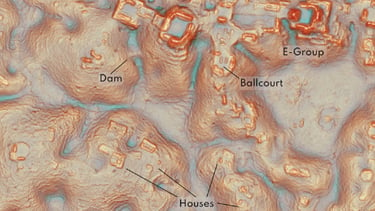
India Mobile Congress 2024
Latest News: 27th October 2024, UPSC Preparation
The India Mobile Congress 2024 (IMC 2024) brought into light Artificial Intelligence (AI) as a central theme. Hosted in New Delhi, the event featured over 900 technology use cases, with 750 focused on AI. Prime Minister Narendra Modi inaugurated the forum, engaging with startups and showcasing India’s technological advancements.
AI Use Cases
The focus was on practical applications of AI. Key areas include:
Conservation: AI solutions aimed at preserving resources.
Convenience: Enhancing user experience in daily tasks.
Efficiency: Streamlining operations across sectors.
Safety: Implementing AI to improve security measures.
Automation: Reducing human involvement in hazardous tasks.
Healthcare: Addressing doctor shortages in remote regions.
Notable Innovations
Several companies presented groundbreaking AI technologies:
Bharti Airtel: Launched India’s first AI-powered spam detection tool, offering real-time alerts to combat spam calls and messages.
Ericsson: Introduced Rocky, a 5G-powered robotic dog to assist in emergencies.
Nokia: Showcased technologies in 5G, 6G, and AI aimed at sustainability.
Reliance Jio: Offered a preview of PhoneCall AI, designed to transcribe and summarise phone calls.
Vodafone Idea: Demonstrated real-time diagnostic report transmission, enabling remote video consultations for doctors.
Startups and Innovations
Startups presented various AI-driven solutions:
Humanoid Co-workers: AI-powered bots addressing mental health issues.
De-addiction Programs: AI solutions to support recovery.
Human Resources: AI tools for hiring, payroll automation, and employee performance tracking.
Education Sector Participation
The education sector played an important role at IMC 2024. Institutions like IITs showcased innovations and engaged with industry leaders. Ramakrishna P, CEO of IMC, noted the importance of mentorship opportunities for students.
Research and Development
Institutions demonstrated advanced research:
BharatGen: Highlighted advancements in telecom and technology.
C3iHub (IIT Kanpur): Focused on cybersecurity for critical infrastructure.
Indian Council of Agriculture Research (ICAR): Presented AI solutions for smart agriculture, including automated fish-feeding systems.
Mahindra University: Showcased AI tools for shrimp farming.
IMC 2024 attracted over 400 exhibitors and 900 startups from 120 countries. It has established itself as Asia’s largest digital technology forum, encouraging innovation across the technology and telecom sectors.
(NNI / Latest news / Latest news india / India latest news/UPSC Preparation)


New Orchid Species Discovered in Assam – Current Updates (October, 2024)
Latest News: 24th October 2024, UPSC Preparation
A new orchid species, Crepidium assamicum, has been discovered in Assam’s Dibru-Saikhowa National Park. This finding enriches the biodiversity of orchids globally. The discovery was made by Khyanjeet Gogoi and Dr. Jintu Sharma, who have dedicated over a decade to researching orchids in the region. Their work culminated in the species being recognised in the botanical journal, Fedes Reporter.
Discovery Background
The journey began in 2008-2009. Gogoi and Sharma conducted extensive field studies in Assam. Their efforts focused on identifying new species within the orchid family. After years of research, they successfully documented Crepidium assamicum, showcasing its unique traits.
Unique Characteristics
Crepidium assamicum exhibits distinctive features. It has a larger flower cover compared to other orchids in its genus. The blooming period occurs from July to August, setting it apart from many other species. Unlike most orchids that thrive in dense forests, this species prefers open grasslands. Additionally, it has a minimal fragrance.
Geographical Significance
This orchid is found specifically in open grassland near the riverbank of Dibru-Saikhowa in Dibrugarh district, Assam. The population is substantial, with estimates of 500-600 individuals. Its confined habitat marks the importance of protecting this unique environment.
Biodiversity in Assam
Assam is already home to a rich variety of orchids, with 414 species recorded between Assam and Arunachal Pradesh. The discovery of Crepidium assamicum adds to this impressive tally. This biodiversity is crucial for both ecological balance and conservation efforts.
Conservation Status
The new species has been provisionally assessed as Threatened according to the IUCN Red List Categories and Criteria (2024). This status underscores the need for ongoing conservation initiatives in the region to protect not just this species, but the broader ecosystem.
Contributions to Conservation
Khyanjeet Gogoi has made contributions to orchid conservation. He established an orchid park at his residence, which attracts visitors globally. His dedication to preserving orchid species has earned him the Paribha Mitra award from the Assam Government.
Public Interest and Awareness
The discovery of Crepidium assamicum has sparked excitement among conservationists and the public. It raises awareness about the importance of biodiversity. The find offers hope for future conservation efforts in Assam and the Northeast region of India.
The discovery of this orchid species is not just an academic achievement. It marks the rich biodiversity of Assam and the need for its protection. The ongoing research and conservation efforts will play a crucial role in preserving this unique habitat for future generations.
(NNI / Latest news / Latest news india / India latest news/UPSC Preparation)


Diamond Dust Proposed as Geoengineering Solution for Global Warming
Latest News: 23rd October 2024, UPSC Preparation
A new study published in Geophysical Research Letters suggests that diamond dust could be an effective SRM material. The study compared seven compounds and found diamonds to be the most efficient for reflecting solar radiation. Researchers propose spraying five million tonnes of diamond dust annually into the upper atmosphere to achieve a temperature reduction of 1.6 degrees Celsius.
About Geoengineering
Geoengineering involves large-scale interventions to alter the Earth’s climate system. It aims to counteract global warming’s effects. Two main strategies exist: Solar Radiation Management (SRM) and Carbon Dioxide Removal (CDR). SRM focuses on reflecting solar radiation away from Earth, while CDR seeks to remove carbon dioxide from the atmosphere.
Solar Radiation Management Explained
SRM is a key area of interest. It involves deploying materials in the atmosphere or space to reflect sunlight. This can potentially reduce global temperatures. The concept draws inspiration from volcanic eruptions. When volcanoes erupt, they release sulphur dioxide, which forms particles that reflect sunlight. The 1991 Mount Pinatubo eruption is an example, as it temporarily lowered global temperatures by 0.5 degrees Celsius.
Other SRM Materials
Previous studies have considered various materials for SRM, including sulphur, calcium, and sodium chloride. Each has its advantages and drawbacks. Diamonds, however, have emerged as a promising option due to their unique properties.
Carbon Dioxide Removal Technologies
CDR technologies focus on removing carbon dioxide from the atmosphere. Carbon Capture and Sequestration (CCS) is one such method. It captures CO2 emissions from industrial sources and stores them underground. Carbon Capture and Utilisation (CCU) uses captured CO2 for industrial processes. Direct Air Capture (DAC) extracts CO2 directly from the air. While these methods can help reduce atmospheric CO2, they face challenges and scalability issues.
Concerns with Carbon Capture Technologies
CCS technologies are not without flaws. Studies indicate that relying heavily on CCS to meet climate goals may be impractical and costly. The estimated cost of achieving climate targets primarily through CCS could exceed US$30 trillion compared to a focus on renewable energy. Additionally, finding safe storage sites for captured CO2 is becoming increasingly difficult.
The Future of Geoengineering
Despite the challenges, geoengineering remains a crucial area of research. With the visible impacts of climate change, solutions like SRM and CDR are gaining attention. There are no scenarios for meeting climate targets that do not involve some form of these technologies. Continued exploration and careful consideration of the implications are essential for any future implementation.
(NNI / Latest news / Latest news india / India latest news/UPSC Preparation)


Exercise Swavlamban Shakti
Latest News: 20th October 2024, UPSC Preparation


The Indian Army’s Sudarshan Chakra Corps is conducting a major exercise called “Exercise SWAVLAMBAN SHAKTI” at the Babina Field Firing Ranges near Jhansi. This exercise, which runs until October 22, aims to improve the Army’s combat abilities by using new and advanced technologies.
What is the Objective of the Exercise?
The main goal of this exercise is to incorporate New Technology Equipment (NTEs) into the Army’s attack strategies. By doing this, the Army is preparing itself for future warfare scenarios, ensuring it has modern tools and techniques for effective military operations.
Who is Participating?
Around 1,800 soldiers are taking part in the exercise, supported by 210 armoured vehicles (such as tanks), 50 special-purpose vehicles, and aircraft. This large number of participants and equipment shows how important these modern technologies are for preparing the Army.
What technologies are being Showcased?
Over 50 different NTEs, developed by more than 40 industry partners, including Defence Research and Development Organisation (DRDO) labs and new defence startups, are being showcased. Some of the key technologies being tested include:
Swarm Drones: Groups of drones working together for various tasks.
Kamikaze Drones: Drones designed to crash into targets.
Handheld Drone Jammers: Devices to stop drones from functioning.
Robotic Mules: Robots used to carry supplies.
Guided Precision Aerial Delivery Systems (GPADS): Systems that help deliver supplies with great accuracy.
Directed Energy Weapons: Weapons that use energy, like lasers, instead of traditional bullets or bombs.
Focus on Local Development
The exercise also highlights the importance of developing indigenous (locally-made) defence technologies, especially drones and anti-drone systems. It gives a platform to young entrepreneurs and small- and medium-sized enterprises (MSMEs) to showcase and test their innovations, encouraging the growth of India’s own defence manufacturing.
The successful testing and integration of these advanced technologies in the exercise will help the Army identify which tools and systems to develop further or buy for future use. This also strengthens the connection between the Indian Army and the defence industry, ensuring that the Army is ready for modern warfare challenges.
About the Sudarshan Chakra Corps
The Sudarshan Chakra Corps is a part of the Indian Army and is named after Lord Vishnu’s powerful weapon, the Sudarshan Chakra. It was formed in 1996 and is based in Western India. The Corps focuses on fast, offensive operations and is known for its innovative mechanized infantry units, which include tanks and artillery. It played an important role during the Kargil War and frequently worked with other military branches in joint exercises. The Corps specializes in counter-insurgency and mountain warfare, which helps strengthen India’s defence capabilities against various threats.
(NNI / Latest news / Latest news india / India latest news/UPSC Preparation)
Asia-Pacific Ministerial Conference on Disaster Risk Reduction (APMCDRR) 2024
Latest News: 18th October 2024, UPSC Preparation


A high-level Indian delegation, led by Shri Nityanand Rai, the Union Minister of State for Home Affairs, attended the Asia-Pacific Ministerial Conference on Disaster Risk Reduction (APMCDRR) 2024 in Manila, Philippines. The conference was officially opened by President Bongbong Marcos and focused on the theme, “Surge to 2030: Enhancing ambition in Asia Pacific to accelerate disaster risk reduction.”
Key Agenda of the Conference
The conference gathered policymakers from countries in the Asia-Pacific region to discuss ways to reduce disaster risks, especially as climate change leads to more frequent and severe natural disasters.
India’s Commitment to Disaster Risk Reduction
During the conference, Shri Nityanand Rai spoke about the growing number of disasters that cause loss of life and economic damage. He emphasized India’s strong commitment to taking inclusive and proactive steps to reduce these risks. He also mentioned Prime Minister Modi’s 10-point agenda for Disaster Risk Reduction (DRR), which outlines India’s approach to tackling these challenges.
Focus Areas in Disaster Risk Reduction
The Minister highlighted several important areas for disaster risk reduction:
Early Warning Systems (EWS): India aims to implement advanced technologies to provide early warnings of disasters. This includes systems like the Common Alerting Protocol (CAP) and Cell Broadcast Systems to alert people quickly.
Disaster Resilient Infrastructure: India is focusing on creating infrastructure that can withstand disasters, promoting sustainable development that prepares communities for potential risks.
Financial Provisions: The country is setting up specific financial systems to effectively manage resources for disaster risk reduction efforts.
Technological Advancements in Early Warning Systems
India has made significant progress with initiatives like the Indian Tsunami Early Warning Centre (ITEWC). This center provides tsunami warnings to 25 countries, helping them prepare for potential tsunamis and ensuring that people are informed quickly.
Coalition for Disaster Resilient Infrastructure
India initiated the Coalition for Disaster Resilient Infrastructure (CDRI), which now includes 47 member countries. This coalition provides technical assistance and helps countries build capacity for investments that can withstand disasters.
Financial Investments in Disaster Risk Reduction
India is investing heavily in disaster risk reduction. The 15th Finance Commission has allocated USD 30 billion for the National Disaster Risk Management Fund (NDRMF) and the State Disaster Risk Management Fund (SDRMF) for the financial years 2021-22 to 2025-26. This funding is aimed at strengthening the country’s ability to respond to and recover from disasters.
The APMCDRR 2024 conference was a crucial platform for discussing and planning strategies to reduce disaster risks in the Asia-Pacific region, with India showing strong leadership and commitment to enhancing disaster preparedness and resilience.
(NNI / Latest news / Latest news india / India latest news/UPSC Preparation)
19th International Conference of Drug Regulatory Authorities (ICDRA)
Latest News: 16th October 2024, UPSC Preparation


For the first time, India is hosting the 19th International Conference of Drug Regulatory Authorities (ICDRA) from 14th to 18th October 2024. This important event brings together health officials and regulatory bodies from over 194 WHO member countries. The conference shows India’s growing role in global healthcare, especially due to its leadership during the COVID-19 pandemic.
India’s Leadership During COVID-19
During the pandemic, India took strong steps to increase healthcare services and vaccine production. The country successfully vaccinated over a billion people and earned the nickname “Pharmacy of the World” for its large production of vaccines and medicines. India followed the principle of “Vasudhaiva Kutumbakam”, which means “the world is one family”, and sent essential medical supplies to more than 150 countries during the pandemic.
Why is ICDRA Important?
The ICDRA provides a space for experts to share knowledge and form partnerships on making sure medicines and medical products are safe, effective, and of good quality. This conference highlights India’s dedication to improving global healthcare standards.
India’s Progress with CDSCO
India’s Central Drugs Standard Control Organization (CDSCO) has developed strong systems for approving drugs and medical devices. They have also digitized more than 95% of their processes, making it easier to track approvals and ensure transparency. The focus is on making sure people have access to affordable, high-quality medicines. India has set up many testing labs across the country to check the quality of these medicines.
Global Cooperation for Better Drug Regulation
Dr. Tedros Adhanom Ghebreyesus, the Director-General of WHO, stressed the need for global cooperation in drug regulation, especially in fighting antimicrobial resistance and integrating Artificial Intelligence (AI) into healthcare. Strong regulatory systems are needed to make sure everyone has access to universal health coverage.
Key Topics Discussed at ICDRA
The conference will focus on several important topics:
Smart Regulation: How countries can work together on regulatory standards.
Medical Devices: New trends and safety rules for medical devices and In Vitro Diagnostics (IVDs).
Pharmaceutical Quality: Ensuring strict standards for the quality of medicines.
Artificial Intelligence in Healthcare: The role of AI in improving healthcare systems.
Regulatory Preparedness: Learning from the COVID-19 pandemic to prepare for future health emergencies.
The 19th ICDRA aims to make global regulatory systems stronger through collective dialogue and cooperation. As India showcases its leadership and innovations, the conference will focus on addressing current and future global health challenges.
(NNI / Latest news / Latest news india / India latest news/UPSC Preparation)
S Paramesh, New Chief of Indian Coast Guard
Latest News: 15th October 2024, UPSC Preparation


The Indian Coast Guard has appointed S Paramesh as its new Director General after the unfortunate passing of Rakesh Pal. This appointment is important as the organization aims to maintain strong leadership in maritime security.
Background of S Paramesh
Experience: S Paramesh has over 30 years of experience in the Indian Coast Guard.
Versatility: His career includes a wide range of both maritime (related to the sea) and terrestrial (related to land) operations, showcasing his adaptability and dedication to service.
Career Achievements
Commanding Vessels: He has commanded important vessels, such as:
The Advanced Offshore Patrol Vessel Samar.
The Offshore Patrol Vessel Vishwast.
Leadership Roles: Paramesh has held several key positions, including:
Deputy Director General for Operations and Coastal Security.
Coast Guard Commander for the Eastern Seaboard.
Awards: His leadership skills have earned him prestigious awards, including:
The President’s Tatrakshak Medal.
The Tatrakshak Medal.
Educational Qualifications
National Defence College: He is an alumnus of this prestigious institution in New Delhi.
Defence Services Staff College: He also attended this college in Wellington, which highlights his strong strategic education and readiness for leadership roles.
Significance of the Appointment
Operational Effectiveness: Paramesh’s leadership is expected to improve the operational effectiveness of the Indian Coast Guard.
Maritime Security: His appointment comes at a crucial time, ensuring the safety and security of the nation’s maritime interests following Rakesh Pal’s impactful tenure.
About the Indian Coast Guard
The Indian Coast Guard was formed in 1978 and works under the Ministry of Defence. Its main jobs are to keep our seas safe, control pollution, and conduct search and rescue missions. The Coast Guard has five areas: Northwest, Western, Eastern, Southwest, and Andaman & Nicobar, and it has more than 150 ships and 62 aircraft. They celebrate Coast Guard Day on February 1 each year. The Coast Guard also works with other countries to improve coastal security and has been important in helping during emergencies.
(NNI / Latest news / Latest news india / India latest news/UPSC Preparation)
New X-Band Radar Approved for Wayanad Flood Monitoring
Latest News: 14th October 2024, UPSC Preparation


In July 2024, devastating floods and landslides hit Wayanad district in Kerala, killing more than 200 people. To prevent future disasters, the Union Ministry of Earth Sciences approved the installation of an X-band radar in the region. This radar will help improve weather tracking and provide early warnings for landslides.
What is Radar and How Does It Work?
Radar, which stands for “radio detection and ranging,” works by sending out radio waves to detect objects and measure how far away they are. A radar system has two main parts: a transmitter that sends signals and a receiver that picks up the signals when they bounce back from an object. By analyzing these returned signals, the radar can figure out important details like the object’s distance and speed.
What is Doppler Radar?
Doppler radar is a type of weather radar that uses the Doppler effect. The Doppler effect happens when sound or light waves change frequency based on whether something is moving toward or away from you. In weather radar, this helps track how fast clouds are moving, which way they’re going, and how heavy the rainfall is by measuring how the signals change when they bounce off moving rain or storm clouds.
What is X-Band Radar?
X-band radar uses radio waves in the 8-12 GHz range of the electromagnetic spectrum. These shorter waves create clearer, high-resolution images but don’t travel as far because the signal weakens more quickly. In Wayanad, the X-band radar will focus on monitoring soil movement to predict landslides and provide fast, accurate environmental data.
India’s Radar Network
India has been using meteorological radars since the 1950s. The first X-band radar was installed in 1970. Now, India has both X-band and S-band radars (which have longer ranges). Under a program called “Mission Mausam,” India plans to install 60 new weather radars by 2026 to improve weather forecasting across the country.
What is the NISAR Project?
NISAR is a joint satellite project between NASA and India’s space agency, ISRO. It will use a special type of radar called synthetic aperture radar to create detailed maps of Earth’s surface. This radar will use both L-band and S-band frequencies to track changes in the land, like deforestation and soil movement. NISAR is expected to launch in 2025.
(NNI / Latest news / Latest news india / India latest news/UPSC Preparation)
WETEX 2024
Latest News: 04th October 2024, UPSC Preparation


The 26th Water, Energy, Technology, and Environment Exhibition (WETEX) 2024 began at the Dubai World Trade Centre. This major event brings together companies and experts from around the world to showcase new developments in renewable energy, water treatment, and environmental technologies. India has a strong presence this year, with 29 well-known companies participating. The event, was organized by the Dubai Electricity and Water Authority (DEWA).
Importance of Indian Participation
Sunjay Sudhir, the Indian Ambassador to the UAE, highlighted the importance of India being part of WETEX 2024. The Indian companies are presenting technologies and projects focused on promoting a green economy. These projects aim to help achieve the Sustainable Development Goals (SDGs), which focus on areas like clean energy, water conservation, and environmental protection.
UAE-India Economic Relationship
India’s participation in WETEX also reflects the growing economic relationship between India and the UAE. After the Comprehensive Economic Partnership Agreement (CEPA) came into effect in May 2022, trade between the two countries reached $84.5 billion from April 2022 to March 2023. Experts predict that this figure could rise to $100 billion by 2027, showing the strength of the partnership.
Investment Landscape
The UAE is an important investor in India, ranking seventh among foreign investors. In 2023, the UAE invested $18 billion in various sectors in India. This shows how the economic ties between the two countries are becoming even stronger.
Global Importance of WETEX
WETEX 2024 is a globally significant event, with 16 international pavilions from 14 countries. The exhibition focuses on promoting sustainable technologies related to water, energy, and the environment. It serves as a platform where countries and companies can collaborate on solving environmental challenges.
About WETEX 2024
WETEX 2024 is organized by DEWA and brings together more than 1,500 exhibitors from around 50 countries. The exhibition showcases innovations in renewable energy and smart technologies that can improve resource management. It will also feature conferences where experts discuss pressing environmental issues. The event is expected to draw over 20,000 visitors and is key to the UAE’s strategy for promoting sustainability and conserving water.
(NNI / Latest news / Latest news india / India latest news/UPSC Preparation)
Ayush Medical Value Travel Summit 2024
Latest News: 03rd October 2024, UPSC Preparation


Vaidya Shri Devendra Triguna, who has received prestigious honors like the Padma Shri and Padma Bhushan, has played a key role in spreading the practice of Ayurveda around the world. As the President of the All India Ayurvedic Congress, he has helped Ayurveda reach over 80 countries.
Contributions to Ayurveda
Vaidya Triguna has been involved in creating several important institutions that have helped improve Ayurveda education, research, and practice in India and beyond. These include:
Central Council of Indian Medicine (CCIM)
All India Institute of Ayurveda
Rashtriya Ayurveda Vidyapeeth
These institutions help train future Ayurvedic doctors, support research, and promote traditional Indian medicine globally.
International Impact
Because of his efforts, Ayurveda has become recognized in many countries outside India. Vaidya Triguna’s leadership has made him a key figure in promoting Ayurveda on the international stage, especially within the Ayush sector, which includes Ayurveda, Yoga, Unani, Siddha, and Homeopathy.
Ayush Medical Value Travel Summit 2024
In 2024, the Ayush Medical Value Travel Summit will take place with the aim of making India the top destination for holistic healthcare. The theme for the summit is ‘Global Synergy in Ayush: Transforming Health and Wellness through Medical Value Travel,’ which focuses on combining traditional Indian medicine with modern healthcare to improve global wellness.
The summit is being organized by the Ministry of Ayush along with the Ministry of Tourism and several states like Maharashtra, Goa, Gujarat, Madhya Pradesh, and Rajasthan.
Objective of the Summit
The main goal of this event is to promote India as a leading destination for medical tourism by showcasing the benefits of Ayurveda, Yoga, Unani, Siddha, and Homeopathy. The idea is to attract international patients who are looking for holistic treatments that focus on overall health and wellness.
(NNI / Latest news / Latest news india / India latest news/UPSC Preparation)
Typhoon Yagi
Latest News: 18th September 2024, UPSC Preparation
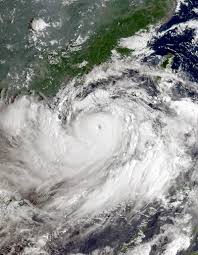

In early September 2024, Typhoon Yagi became the strongest storm of the year in Asia, hitting several countries like Myanmar, Vietnam, Laos, and Thailand. It caused devastating winds and heavy rainfall, leading to flooding and landslides. These natural disasters forced hundreds of thousands of people to leave their homes and resulted in the deaths of more than 400 people.
Impact on Affected Countries
Vietnam: Vietnam was the worst affected. The typhoon caused 292 deaths and destroyed a lot of property, especially in Quang Ninh province and Hai Phong City. The damage is estimated at 40 lakh crore, which will hurt the country’s economy significantly.
Myanmar: In Myanmar, 113 people died, and more than 320,000 people had to move to temporary shelters. Due to the severe situation, the country’s ruling government has asked for international help, which is rare given its usual stance.
Laos & Thailand: Both Laos and Thailand also suffered from the storm. Thailand experienced its worst flooding in 80 years, causing 10 deaths and disrupting transportation.
Even though Typhoon Yagi has weakened into a tropical depression, it is still causing heavy rain. There is a continuing risk of more flooding and landslides, especially as water levels in the Mekong River are rising due to the additional rainfall.
International Response and Humanitarian Aid
In response to the disaster, India has launched a relief effort called Operation Sadbhav. India has pledged $1 million in aid and is sending essential supplies like food, clothing, and medicines. UNICEF has also warned about the serious impact on children, many of whom have lost their homes and can no longer attend school.
This region has a history of facing severe storms and floods. For example, in 2008, Cyclone Nargis devastated Myanmar, and there were more disasters in 2011 and 2015. Governments have been criticized in the past for not being prepared enough, showing the need for better disaster management.
(NNI / Latest news / Latest news india / India latest news/UPSC Preparation)
Kalvari Submarine Escape Training Facility – VINETRA
Latest News: 17th September 2024, UPSC Preparation


The Kalvari Submarine Escape Training Facility, called Vinetra, was officially opened on 13 September 2024 by Vice Admiral Rajesh Pendharkar at INS Satavahana in Visakhapatnam. This facility is an important step toward improving the Indian Navy’s preparedness and ability to handle submarine emergencies.
Purpose and Importance
Vinetra is designed to help train the crew of Kalvari-class submarines on how to escape during emergencies. This is very important for the safety of the sailors working underwater. The creation of this facility is part of India’s Aatmanirbhar Bharat programme, which focuses on building more defence technology within the country, reducing the need to depend on other nations. L&T Defence built the facility and includes:
A five-meter-high escape tower where submarine crews can practice escaping.
A diving basin right next to the tower, providing a place for realistic underwater escape training.
These features help both new and experienced submariners practice and improve their escape skills.
Training Objectives
The main goal of Vinetra is to make sure submariners are well-prepared for emergencies. By practicing escape procedures, they gain more confidence and are better equipped to handle underwater situations that may arise, ensuring the safety of everyone on board.
The opening of this facility not only improves the individual skills of submarine crews but also strengthens the overall operational readiness and safety of the Indian Navy. This development is a big step forward in boosting India’s naval capabilities.
About INS Satavahana
INS Satavahana was the first ship of its class, commissioned in 1988. It played a key role in the Indian Navy as a surveillance vessel, which means it was used to keep an eye on activity in the ocean. The ship had advanced radar and communication systems to help monitor maritime (sea) activities. INS Satavahana participated in many naval exercises, which are practice missions to improve teamwork and coordination between different ships and parts of the Navy. These exercises helped make sure the Navy could work well together during real missions.
The ship was named after the Satavahana dynasty, an ancient Indian kingdom known for its contributions to trade and culture. This name reflects the connection between India’s rich history and its modern naval force.
(NNI / Latest news / Latest news india / India latest news/UPSC Preparation)
Ozone Pollution Hurts Tropical Forest Growth, Study Finds
Latest News: 15th September 2024, UPSC Preparation


A recent study published in Nature Geoscience has revealed that ozone pollution is harming the growth of tropical forests, causing them to lose nearly 300 million tonnes of carbon every year. This is a big concern because tropical forests play a key role in fighting climate change by absorbing carbon dioxide from the air. The study highlights the urgent need to tackle air pollution to protect these important ecosystems.
Tropical Forests and Climate Change
Tropical forests are essential in the fight against climate change because they act like a giant sponge, absorbing carbon dioxide (a major greenhouse gas) from the atmosphere. When tropical forests are healthy, they help reduce the amount of carbon in the air, which is good for the planet. But when their growth is affected, it reduces their ability to absorb carbon, making it harder to fight climate change.
Impact of Ground-Level Ozone
Ground-level ozone is a harmful pollutant created when gases from human activities like driving cars and running factories mix with sunlight. Unlike the ozone layer in the sky that protects us from the sun’s harmful rays, ground-level ozone is bad for plants and people. In this case, it prevents plants, including tropical trees, from absorbing carbon dioxide properly. According to the study, this pollution has reduced the yearly growth of tropical forests by 5.1%.
Research Findings
Scientists looked at different types of tropical trees to see how sensitive they were to ozone pollution. They used a computer model to predict how plants would respond to rising ozone levels. The study found that ozone pollution is getting worse due to urbanisation, industrialisation, and the use of fossil fuels (like coal, oil, and gas). This increase in ozone levels is bad news for tropical forests.
Worsening Conditions
If ozone pollution continues to rise, the damage to tropical forests will get worse. This is especially concerning for areas where people are working to restore forests to help fight climate change. High ozone levels in these areas could make it harder for these restoration efforts to succeed.
The study calls for stronger measures to reduce ground-level ozone. Improving air quality will not only help tropical forests grow better but also increase the amount of carbon these forests can absorb. This, in turn, will help in the global effort to combat climate change.
What is Ozone Pollution?
Ozone pollution mainly comes from vehicle emissions and industrial activities. It forms close to the ground, where it can harm both plants and people. Unlike the ozone layer high up in the atmosphere, which protects us from the sun, ground-level ozone can cause breathing problems, especially in vulnerable people like children and the elderly. Ozone levels are highest in summer when there is more sunlight to trigger its formation. Cities tend to have higher ozone levels than rural areas. Ozone pollution also affects crop yields, reducing food production. Efforts like the Clean Air Act in the U.S. aim to control ozone levels, and there are ongoing global efforts to reduce its harmful effects.
(NNI / Latest news / Latest news india / India latest news/UPSC Preparation)
Saturn’s Rings to Disappear Temporarily in March 2025
Latest News: 13th September 2024, UPSC Preparation


In March 2025, Saturn’s rings will seem to “disappear” when viewed from Earth. This is an optical illusion caused by the way Saturn tilts and moves around the Sun. The planet’s tilt and orbit make its rings visible at different angles over time, and for a brief period, only the thin edge of the rings will be visible, making them look like they have vanished.
The Optical Illusion Explained
Saturn is tilted at about 26.73 degrees and takes nearly 30 Earth years to orbit the Sun. Every 13 to 15 years, Saturn reaches a point in its orbit where the rings are aligned so that we see only their edge from Earth. Since the rings are so thin, they reflect very little light at this angle, making them look invisible, like viewing a thin edge of paper from far away.
This ring “disappearance” last happened in 2009 and will keep occurring in the future because of Saturn’s ongoing orbit. It’s a normal part of how we see the planet from Earth.
While this optical illusion is temporary, Saturn is slowly losing its rings for real. NASA has discovered that Saturn’s gravity and magnetic field are pulling the ring material down onto the planet, a process known as “ring rain.” The planet loses enough material to fill an Olympic-sized swimming pool every 30 minutes.
When will Saturn lose its rings completely?
Scientists estimate that Saturn could completely lose its rings in about 300 million years, although it could happen sooner based on ongoing research.
Saturn’s rings are made of billions of tiny ice and rock particles. Some are as small as dust, while others are as big as mountains. It is believed that these rings formed about 100 million years ago when two icy moons collided.
Facts About Rings of Saturn
Saturn’s rings are mostly made of ice particles, with some rock and dust mixed in.
The rings are very wide, stretching up to 175,000 miles, but they are less than 1 mile thick.
They are divided into different sections, labeled A, B, C, and others, with each section having different amounts of material.
Some of Saturn’s moons, like Pan and Daphnis, create gaps in the rings and help shape them by their gravity.
The rings are relatively young, likely formed in the last 100 million years.
Over time, the rings may disappear due to the effects of solar radiation.
(NNI / Latest news / Latest news india / India latest news/UPSC Preparation)
New Wetland Virus
Latest News: 12th September 2024, UPSC Preparation


Scientists have discovered a new virus in China called the Wetland Virus, which is carried by ticks. They are concerned about its potential effects on human health because it can lead to serious neurological (brain-related) complications.
Discovery and Initial Case
The first case of the Wetland Virus was found in June 2019 when a 61-year-old man became very ill after being bitten by ticks in a northern Chinese wetland park. He had severe symptoms like fever, headaches, and vomiting. This case led scientists to investigate the virus further.
The Wetland Virus is classified as Orthonairovirus, a type of virus that is often spread through tick bites. This scientific classification helps researchers understand which group of viruses it belongs to and how it may behave.
Symptoms and Effects
At least 17 people in China who were bitten by ticks have shown symptoms of the Wetland Virus. These symptoms include Fever, Dizziness, Headache, Tiredness (malaise), Joint pain (arthritis), Back pain, Nausea.
Studies show that the virus can damage brain tissue and cause problems with blood clotting, making it a serious health concern. The virus has also been found in animals such as sheep, horses, pigs, and rodents. This suggests that the virus can spread among different species, raising concerns about its potential for broader transmission in wildlife.
Patient Recovery
Even though the virus can be severe, all patients who were infected have recovered. Most people were able to leave the hospital within 4 to 15 days after receiving treatment. This gives hope that the virus can be managed, but more research is needed.
The discovery of the Wetland Virus highlights the importance of paying attention to tick-borne diseases. As scientists continue to study its origins and effects, they are calling for increased awareness about how these viruses can affect both human health and animal populations.
(NNI / Latest news / Latest news india / India latest news/UPSC Preparation)
Chandrayaan-3 Detects Historic 250 Seismic Signatures on Moon
Latest News: 11th September 2024, UPSC Preparation


India’s Chandrayaan-3 mission has achieved a significant milestone by becoming the first lunar mission to detect over 250 seismic signals from the Moon’s south pole since the Apollo missions. This discovery marks a major advancement in lunar exploration and seismic monitoring techniques.
Significance of Seismic Signals
The Chandrayaan-3 mission identified 250 seismic signals, with 50 of these signals being unique and potentially indicating moonquakes, which are similar to earthquakes on Earth but occur on the Moon. This is the first time that seismic data has been successfully collected from the Moon’s south pole, providing valuable insights into the Moon’s seismic activity.
Instrumentation and Data Collection
The Instrument for Lunar Seismic Activity (ILSA), which was part of the Vikram Lander, operated from August 24 to September 4, 2023. It recorded these seismic events from coordinates 69.37° S and 32.32° E. ILSA is notable for being the first instrument based on MEMS (Micro-Electro-Mechanical Systems) technology designed to measure seismic activity on the Moon, using advanced silicon micromachining techniques.
Nature of Detected Signals
Out of the 250 signals detected, around 200 were related to the activities of the mission itself. These included movements of the Pragyan rover and operations of scientific instruments like the ChaSTE thermal probe and the Alpha Particle X-ray Spectrometer (APXS). The remaining 50 signals were classified as “uncorrelated,” meaning they might be related to genuine moonquakes rather than mission-related activities.
Scientific Implications and Future Investigation
The findings from Chandrayaan-3 were published in ICARUS, a leading scientific journal. The study highlights a notable discovery: the longest continuous seismic signal recorded lasted 14 minutes. This opens up opportunities for further research to determine the origin of these uncorrelated signals. LEOS Director Sriram emphasized the importance of further exploration to fully understand these mysterious seismic events.
About Chandrayaan-3
Chandrayaan-3, launched by India on July 14, 2023, is the country’s third lunar mission, designed specifically to achieve a soft landing on the Moon’s surface. It consists of a lander named Vikram and a rover named Pragyan. Unlike its predecessor, Chandrayaan-2, it does not include an orbiter. The primary goal of Chandrayaan-3 is to demonstrate the ability to safely land and move on the Moon’s surface. It successfully landed on August 23, 2023, and is exploring the Moon’s south pole, a region considered crucial for future exploration.
(NNI / Latest news / Latest news india / India latest news/UPSC Preparation)
Study Reveals Potential Collision Risk for Asteroid Apophis
Latest News: 10th September 2024, UPSC Preparation


A new study has raised concerns regarding the near-Earth asteroid 99942 Apophis, previously considered unlikely to collide with our planet. Canadian astronomer Paul Wiegert’s findings introduce a new variable that could potentially alter its trajectory.
Introduction to 99942 Apophis
99942 Apophis is a large asteroid that travels close to Earth. It is about 1,210 feet (370 meters) in diameter and was discovered in 2004. Because of its size and path near Earth, scientists called it “God of Chaos.” On April 13, 2029, Apophis will pass by Earth at a distance of around 31,000 kilometers, which is quite close for an asteroid.
When Apophis was first discovered, scientists were worried it might hit Earth. Early calculations suggested a small chance, about 2.7%, that it could collide with our planet. However, more detailed observations later showed that the risk of a collision was very low, so scientists were not as concerned anymore.
New Research Findings
A recent study by Canadian astronomer Paul Wiegert suggests a new concern. He found that even though Apophis is on a safe path for now, a collision with a small object in space could change its direction. If Apophis were to collide with an object as small as 0.6 meters (2 feet) wide, it could affect its path slightly. A bigger collision with an object about 3.4 meters (11 feet) wide could potentially make Apophis hit Earth.
Probability of Impact
Even though this new possibility exists, the chances of Apophis being hit by another object and then hitting Earth are extremely low. The likelihood of such an event is about 1 in 100 million (10^-8). The chances of Apophis colliding with Earth remain less than 1 in 2 billion.
Wiegert pointed out another issue: Apophis has not been closely observed since May 2021 because it is positioned in a way that makes it difficult to see from Earth using telescopes. Scientists won’t get a clear view of it again until 2027.
While the risk of Apophis hitting Earth remains very small, scientists still need to monitor it closely. Continued research and observation will help ensure that if any new risks arise, we will be better prepared to handle them.
About 99942 Apophis
Apophis is an asteroid that orbits the Sun once every 324 days. It belongs to a group of asteroids called Apollo-type asteroids, which have orbits that can bring them close to Earth. Some researchers also believe that Apophis may have a smaller companion asteroid orbiting it, making it a “binary” asteroid. Its name, Apophis, comes from the Egyptian god of chaos, reflecting the initial concerns it caused when first discovered.
(NNI / Latest news / Latest news india / India latest news/UPSC Preparation)
Why Planes Avoid the Tibetan Plateau?
Latest News: 09th September 2024, UPSC Preparation


The Tibetan Plateau, often called the “Forbidden Plateau,” is a massive region with unique challenges that make it very difficult for airplanes to fly over. Its high altitude, dangerous weather, lack of emergency landing areas, and limited air traffic control all contribute to why airlines avoid this area.
High Altitude
The Tibetan Plateau has some of the highest peaks in the world, with many areas more than 16,000 feet above sea level. At such high altitudes, the air is much thinner, which makes it hard for airplane engines to produce the power needed to stay in the air. Flying over the plateau is like trying to run a marathon at high altitude—it’s exhausting for the plane, and it struggles to stay aloft.
Turbulence
The weather over the Tibetan Plateau is unpredictable and often violent, with strong winds creating severe turbulence. This makes it difficult for pilots to keep the plane stable. Combined with the thin air, these turbulent conditions increase the risks for planes trying to fly over the region.
Lack of Emergency Landing Sites
One of the biggest safety concerns is that there are very few places to make an emergency landing on the Tibetan Plateau. The landscape is rugged, with mountains and steep terrain, and there aren’t many airports or flat areas where a plane could safely land if something went wrong. This lack of emergency options makes it too risky for airlines to send flights over the area.
Air Traffic Control Limitations
The Tibetan Plateau is remote, and because of its harsh environment, there isn’t much air traffic control infrastructure. This makes it harder for pilots to communicate and navigate through the region. Without the support of strong air traffic control, flying over the plateau becomes even more hazardous.
Although the Tibetan Plateau is a fascinating and beautiful part of the world, its difficult geography and extreme weather conditions make it largely inaccessible for airplanes. This region, known for its rich wildlife and cultural history, remains a place of mystery and adventure but is avoided by most airlines due to the serious risks involved in flying over it.
Facts About the Tibetan Plateau
The Tibetan Plateau is known as the “Roof of the World” because it is the highest and largest plateau on Earth.
Its average height is more than 4,500 meters (about 14,800 feet) above sea level.
The plateau spans parts of Tibet, Nepal, India, and China, covering around 2.5 million square kilometers.
It affects weather patterns in Asia by acting as a barrier to monsoon winds.
The plateau is home to unique animals, like the Tibetan antelope.
It holds a large amount of the world’s freshwater, stored in glaciers and frozen ground.
(NNI / Latest news / Latest news india / India latest news/UPSC Preparation)
Saturn’s Rings to Disappear Temporarily in March 2025
Latest News: 08th September 2024, UPSC Preparation


In March 2025, Saturn’s rings will seem to “disappear” when viewed from Earth. This is an optical illusion caused by the way Saturn tilts and moves around the Sun. The planet’s tilt and orbit make its rings visible at different angles over time, and for a brief period, only the thin edge of the rings will be visible, making them look like they have vanished.
The Optical Illusion Explained
Saturn is tilted at about 26.73 degrees and takes nearly 30 Earth years to orbit the Sun. Every 13 to 15 years, Saturn reaches a point in its orbit where the rings are aligned so that we see only their edge from Earth. Since the rings are so thin, they reflect very little light at this angle, making them look invisible, like viewing a thin edge of paper from far away.
This ring “disappearance” last happened in 2009 and will keep occurring in the future because of Saturn’s ongoing orbit. It’s a normal part of how we see the planet from Earth.
While this optical illusion is temporary, Saturn is slowly losing its rings for real. NASA has discovered that Saturn’s gravity and magnetic field are pulling the ring material down onto the planet, a process known as “ring rain.” The planet loses enough material to fill an Olympic-sized swimming pool every 30 minutes.
When will Saturn lose its rings completely?
Scientists estimate that Saturn could completely lose its rings in about 300 million years, although it could happen sooner based on ongoing research.
Saturn’s rings are made of billions of tiny ice and rock particles. Some are as small as dust, while others are as big as mountains. It is believed that these rings formed about 100 million years ago when two icy moons collided.
Facts About Rings of Saturn
Saturn’s rings are mostly made of ice particles, with some rock and dust mixed in.
The rings are very wide, stretching up to 175,000 miles, but they are less than 1 mile thick.
They are divided into different sections, labeled A, B, C, and others, with each section having different amounts of material.
Some of Saturn’s moons, like Pan and Daphnis, create gaps in the rings and help shape them by their gravity.
The rings are relatively young, likely formed in the last 100 million years.
Over time, the rings may disappear due to the effects of solar radiation.
(NNI / Latest news / Latest news india / India latest news/UPSC Preparation)
World’s First Nuclear Clock
Latest News: 07th September 2024, UPSC Preparation


Scientists at JILA, a research institute that’s part of the University of Colorado Boulder and the National Institute of Standards and Technology (NIST), are close to finishing the development of the world’s first nuclear clock. They have figured out all the necessary parts to build this clock, marking an important step forward in timekeeping technology.
What is an Atomic Clock?
An atomic clock is a type of clock that measures time using the natural vibrations of atoms. These vibrations are incredibly regular, making atomic clocks highly accurate. Atomic clocks are essential for things like keeping international time zones in sync, helping GPS systems work, and making sure global financial transactions happen at the right time.
How does a Nuclear Clock Differ?
While atomic clocks rely on the electromagnetic forces in atoms, nuclear clocks measure time by looking at the energy changes inside the nucleus (the center) of an atom. This difference means that nuclear clocks could be even more accurate than atomic clocks because the energy levels in a nucleus are more stable and less affected by outside forces.
Advancements in Precision
Researchers at JILA have made huge improvements in how accurately they can measure time. Their work is a million times more precise than previous efforts. This allows them to detect very tiny changes in the energy of an atom’s nucleus, which is key to making nuclear clocks work properly.
Current Status of the Nuclear Clock
Although the nuclear clock hasn’t been fully built yet, all the necessary parts have been successfully tested in the lab. The scientists are now working on making the measurements even more precise and ensuring that the clock will be as accurate as possible when it’s finally put together.
Once completed, the nuclear clock could make timekeeping technologies simpler. Unlike current atomic clocks, it might not require expensive and complex setups, like ultrahigh vacuum systems or laser cooling. This could make nuclear clocks more practical, accessible, and efficient.
(NNI / Latest news / Latest news india / India latest news/UPSC Preparation)
Researchers Reveal Graviton-Induced Uncertainty Relation in Gravity
Latest News: 06th September 2024, UPSC Preparation


Researchers have made an important discovery in trying to combine two areas of physics—classical gravity and quantum mechanics. They found a new type of uncertainty relation, which comes from the noise made by gravitons. Gravitons are hypothetical particles that scientists believe may carry the force of gravity. Studying these particles could help us understand quantum gravity, which has been a difficult problem in physics for a long time.
Difference Between Classical and Quantum Physics
Classical physics explains how large objects like planets, cars, or people behave using well-known rules, such as Newton’s laws.
Quantum physics, on the other hand, deals with the strange behaviors of tiny particles, like atoms and electrons, which follow different rules.
The challenge for scientists is to create a theory that works for both big objects (classical physics) and tiny particles (quantum physics), especially in extreme places like black holes or around neutron stars.
What is Quantum Gravity (QG)?
Quantum gravity is a field of study where scientists try to understand how gravity works at the level of tiny particles. Normally, gravity is thought of as a force that affects large objects, but quantum gravity focuses on how it behaves when both gravity and quantum mechanics are important.
For example, around black holes, gravity is so strong and things happen on such small scales that we need a theory combining both classical and quantum ideas.
What is Gravitational Noise?
Researchers have found that when gravitational fields are studied using quantum mechanics, they create tiny fluctuations, or “noise.” These fluctuations can be detected by sensitive tools like LIGO, which looks for tiny changes in distances caused by gravitational waves. This noise behaves in a way that suggests gravity might have a quantum nature, and could even be evidence of gravitons.
Research Contributions
Two researchers, Prof. Sunandan Gangopadhyay and Mr. Soham Sen from the S.N. Bose National Centre for Astrophysics, have been studying how quantum gravity affects objects that are falling freely. They discovered a new type of uncertainty relation caused by the noise from gravitons. This is an important clue that shows gravity may indeed work at a quantum level.
Generalized Uncertainty Principle
The uncertainty relation they found connects the position and momentum of particles to the noise created by gravitons. This means that gravity doesn’t just affect objects in the usual way but could also have quantum effects. The research team says this discovery shows that gravity might have a quantum nature, making their work very important in the study of quantum gravity.
Publications
Soham Sen & Sunandan Gangopadhyay, “Uncertainty principle from the noise of gravitons”, Eur. Phys. J. C 84 (2024) 116.
Chawla & M. Parikh, “Quantum gravity corrections to the fall of an apple”, Phys. Rev. D 107 (2023) 066024.
This discovery is a key step forward in understanding how gravity and quantum mechanics might be connected, which could change how we understand the universe.
(NNI / Latest news / Latest news india / India latest news/UPSC Preparation)
What is Vishanu Yuddh Abhyas?
Latest News: 04th September 2024, UPSC Preparation


India recently conducted its first comprehensive national mock drill called “Vishanu Yuddh Abhyas” from August 27 to 31, 2024, to address the growing threat of zoonotic diseases. Zoonotic diseases are illnesses that can be passed from animals to humans. This exercise was initiated under the National One Health Mission (NOHM) and aimed to evaluate how prepared the country is to handle such outbreaks.
Objective of the Exercise
The main goal of this exercise was to test how well India could respond to a simulated outbreak of a zoonotic disease. The drill focused on ensuring that there was a coordinated effort across different sectors, including human health, animal husbandry, and wildlife management. This approach is important because zoonotic diseases can spread through multiple channels, so a unified response is necessary to control them effectively.
Who Participated in the Drill?
The drill involved various organizations and departments working together, including:
National Centre for Disease Control (NCDC)
Indian Council of Medical Research (ICMR)
Directorate General of Health Services (DGHS)
Department of Animal Husbandry and Dairying (DAHD)
Ministry of Environment, Forest, and Climate Change (MoEF&CC)
Indian Council of Agricultural Research (ICAR)
State and District Health and Veterinary Services
These organizations played different roles, from identifying the disease to implementing control measures.
Key Components of the Drill
The exercise had two main parts:
Investigation and Identification: Teams worked to identify the mock virus that was causing the outbreak.
Control Measures: After identifying the virus, the next step was to take action to prevent it from spreading among both human and animal populations.
How was the Drill Evaluated?
Independent observers were present to monitor how well the teams performed. Overall, the response from the National Joint Outbreak Response Team (NJORT) and other involved groups was timely and appropriate. However, the exercise also revealed some areas where improvements are needed.
The Vishanu Yuddh Abhyas was considered a successful exercise, providing valuable lessons that will help improve India’s preparedness for future zoonotic disease outbreaks. The National One Health Mission aims to ensure that different sectors work together effectively to protect public health and the environment, making India better equipped to handle such crises.
(NNI / Latest news / Latest news india / India latest news/UPSC Preparation)
Ancient Ice Core Reveals Genomes of 1,700 Viruses
Latest News: 04th September 2024, UPSC Preparation


Scientists from the United States have made a remarkable discovery of over 1,700 ancient viruses in ice core samples taken from the Guliya Glacier on the Tibetan Plateau. Some of these viruses are over 40,000 years old. The study, led by Zhi-Ping Zhong of Ohio State University, offers valuable insights into how viruses have evolved and survived in response to changing climates.
Ice Core Sampling
Ice cores are cylindrical samples drilled from glaciers, which allow scientists to study layers of ice that have built up over thousands of years. Each layer holds important environmental information, including preserved microorganisms like viruses. The ice core from the Guliya Glacier is 310 meters long and provides samples from different climatic periods, making it a valuable resource for studying ancient climates and viral history.
Genomic Analysis
The research team used advanced techniques to extract DNA and sequence the genomes of the viruses found in the ice. They identified 1,705 different species of viruses, each showing significant genetic differences based on the climate conditions when they were active.
Viral Communities and Adaptation
The study revealed that some viral communities were unique to the region and were particularly active around 11,000 years ago during periods of climate change. These viruses showed remarkable adaptations, such as acquiring genetic material from the bacteria they infected (like Flavobacterium) to improve their own survival and metabolic functions.
Evolutionary Insights
The analysis showed a strong connection between viral activity and climate change. This suggests that as the climate shifted, new viruses emerged, putting pressure on existing strains to evolve. This kind of evolutionary interaction may have played a key role in shaping viral populations over time.
As global warming causes glaciers and permafrost to melt, there is a growing concern that ancient viruses, long trapped in ice, could be released into modern environments. This poses potential health risks, as these ancient viruses might interact with current ecosystems in unpredictable ways. Further research is needed to understand how these viruses behave and adapt.
Importance of the Research
This study highlights the importance of collecting and analyzing ice core samples from around the world, especially as glaciers continue to melt. These ice cores contain critical information about past viral and climate interactions, which could be lost forever if not studied soon. Understanding these ancient viruses is essential for predicting how they might respond to current and future climate changes in the Anthropocene era—the current period in which human activity is the dominant influence on climate and the environment.
(NNI / Latest news / Latest news india / India latest news/UPSC Preparation)
FAA Grounds SpaceX’s Falcon 9 After Landing Failure
Latest News: 03rd September 2024, UPSC Preparation


The Federal Aviation Administration (FAA) ordered SpaceX to temporarily stop using its Falcon 9 rocket, on August 28, 2024. This decision came after the rocket failed to land properly after completing a mission to launch Starlink satellites. This was the second time in recent months that technical problems led the FAA to step in; a similar incident happened in July 2023.
What is the Falcon 9 Rocket?
The Falcon 9 is a rocket developed by SpaceX, a company owned by Elon Musk. It’s called “Falcon 9” because it has nine engines in its first stage. The rocket is special because it can be reused. It has two main parts:
First Stage: This part has nine engines and is designed to come back to Earth and land so it can be used again.
Second Stage: This part has one engine and is responsible for placing the payload (like satellites or astronauts) into the correct orbit.
Falcon 9 is mainly used to send things like satellites into space or to transport astronauts to the International Space Station (ISS).
What Went Wrong?
On August 28, 2024, Falcon 9 successfully launched Starlink satellites into space. However, when the first stage of the rocket tried to land back on Earth, it tipped over and fell into the ocean instead of landing properly. Just a month earlier, in July, another Falcon 9 mission had problems when one of its engines failed, leaving satellites in a bad orbit where they couldn’t survive.
The FAA is now looking into why the Falcon 9 failed to land correctly. Even though they are investigating, the FAA might still allow SpaceX to continue launching rockets while they figure out what went wrong. This is important because SpaceX has many planned launches, including one in September 2023 that will carry NASA astronauts.
How Successful is Falcon 9?
In 2023, Falcon 9 has been very busy. It completed 96 launches, which is more than any other country’s rockets. For comparison, China completed 67 rocket launches in 2023. The Falcon 9 is crucial because it’s also scheduled to take NASA astronauts to space in September and return them in February 2024.
If the FAA doesn’t allow SpaceX to quickly resume using Falcon 9, it could delay upcoming missions. This includes the important NASA astronaut launch in September 2023 and their return in February 2024.
About Falcon 9
Falcon 9 was first launched in June 2010. It has since completed over 180 missions. The rocket’s name comes from the “Millennium Falcon” in Star Wars and the nine engines in its first stage. One of its unique features is that the first stage can land back on Earth, allowing SpaceX to reuse it for future missions. Falcon 9 is also known for being the first commercial rocket to reach orbit and successfully carry astronauts into space.
(NNI / Latest news / Latest news india / India latest news/UPSC Preparation)
Astronomers Discover Brightest Quasar Ever: J0529-4351
Latest News: 02nd September 2024, UPSC Preparation


Astronomers have found an extraordinary quasar named J0529-4351, which is the brightest object ever observed in the universe. Detected with the Very Large Telescope (VLT) by the European Southern Observatory, this quasar has amazed scientists because of its incredible brightness and fast expansion.
What is a Quasar?
Quasars are incredibly bright centers of distant galaxies. They are powered by supermassive black holes at their cores. As gas and dust from the surrounding area fall into these black holes, they produce huge amounts of light and other forms of radiation, making quasars shine extremely brightly.
The Discovery of J0529-4351
J0529-4351 is notable for being exceptionally bright and expanding very quickly. It absorbs mass at a rate of one solar mass (the mass of our Sun) per day and shines more than 500 trillion times brighter than the Sun.
According to astronomer Christian Wolf, J0529-4351 is in an extreme environment with high-speed clouds, intense heat, and enormous cosmic lightning storms. This makes it one of the most extreme places known in the universe.
Historical Significance
The light from J0529-4351 has been traveling through space for over 12 billion years. This means it offers a rare glimpse into the early days of the universe. Its accretion disk, the glowing ring of material around the quasar, is the largest known, stretching across seven light-years.
Although J0529-4351 was visible as early as 1980, its true nature was confirmed only recently using a 2.3-meter telescope in Australia. The VLT’s advanced technology ultimately verified it as the brightest quasar known.
Astronomers’ Awe
Christopher Onken from the Australian National University (ANU) was surprised that J0529-4351 went unnoticed for so long. Despite astronomers having cataloged about a million less bright quasars, the discovery of J0529-4351 shows that there are still astonishing celestial objects to be found in the universe
(NNI / Latest news / Latest news india / India latest news/UPSC Preparation)
What is Whitetopping Technology?
Latest News: 29th August 2024, UPSC Preparation


The Ministry of Road Transport and Highways (MoRTH) in India is proposing a new policy to repair and upgrade old national highways using a method called Whitetopping Technology. MoRTH is asking for feedback on this idea from stakeholders by September 7. This policy is needed because many parts of India’s national highways, which cover about 1.46 lakh km, are aging and require improvement.
Definition of Whitetopping Technology
Whitetopping is a process where a layer of Portland Cement Concrete (PCC) is placed on top of existing bituminous (asphalt) roads. This technique is especially useful for roads that have ongoing problems due to poor drainage. Whitetopping has already been used successfully in various government projects, such as the Pradhan Mantri Gram Sadak Yojana (PMGSY), and cities like Bengaluru.
Benefits of Whitetopping
Whitetopping offers several advantages compared to traditional asphalt overlays:
Longer Lifespan: It can extend the life of a road by 20-25 years.
Less Maintenance: Roads require fewer repairs and less frequent lane closures.
Cost-Effective: Although the initial cost is higher, the long-term savings from reduced maintenance make it a smart investment.
Environmental Benefits: The lighter color of concrete reflects more light, helping to cool urban areas and reduce the heat island effect.
Better Performance: Whitetopping is more resistant to common road issues like deformation, rutting, and cracking, especially in hot climates.
Improved Fuel Efficiency: Vehicles use less fuel when driving on concrete roads compared to asphalt roads.
MoRTH is actively seeking input from various stakeholders to fine-tune the proposed policy and ensure it is implemented effectively. Gathering feedback is important to address any practical challenges and make this innovative approach to highway maintenance successful.
(NNI / Latest news / Latest news india / India latest news/UPSC Preparation)
What is Solar Paraboloid Technology?
Latest News: 28th August 2024, UPSC Preparation


As the world moves towards using more renewable energy, solar paraboloid technology is becoming more popular because it could make solar power more efficient. This technology might play a big role in reducing carbon emissions and helping countries meet their net-zero goals.
Solar Paraboloid Technology
Solar paraboloids use a Parabolic Trough Collector (PTC) system. This system has long, curved mirrors that focus sunlight onto a tube. The energy collected heats a fluid inside the tube, which can then be used to generate electricity or provide heat for industries. Unlike traditional solar panels, solar paraboloids can work at much higher temperatures, up to 300°C, making them more efficient by reducing heat loss.
Economic Impact and Market Potential
Although solar paraboloids can produce more electricity from the same amount of sunlight compared to regular methods, they are expensive to set up and require complicated infrastructure. However, with better efficiency, they could help lower electricity costs, making solar energy more competitive with fossil fuels. Investment in research, development, and government support is crucial to overcome the challenges.
Industry Response and Future Prospects
The industry has shown cautious interest in solar paraboloid technology, with successful projects like the Godavari solar project and the Dadri ISCC plant. However, high costs and technical challenges remain obstacles. Despite this, the future looks promising. As the demand for renewable energy increases, solar paraboloids could play a vital role in meeting global renewable energy targets, possibly becoming cost-competitive by 2050.
Could this be a Game Changer in Renewable Energy?
Solar paraboloid technology is still in its early stages but has the potential to revolutionize renewable energy. With continued research, innovation, and supportive policies, it could become a major player in the energy market, offering an effective solution to meet the world’s growing energy needs and significantly contributing to sustainable energy goals.
(NNI / Latest news / Latest news india / India latest news/UPSC Preparation)
India Celebrates First National Space Day on August 23
Latest News: 25th August 2024, UPSC Preparation


India celebrated its very first National Space Day on August 23, 2024. The theme for the day was “Touching lives while touching the Moon: India’s space saga,” highlighting how the country’s space missions impact everyday life while also reaching extraordinary heights, like the Moon. This date is special because it marks the anniversary of the Chandrayaan-3 mission, which successfully landed on the Moon in 2023. This achievement made India the fourth country in the world to land on the Moon and the first to land at the Moon’s South Pole.
The Importance of Chandrayaan-3
The Chandrayaan-3 mission is a major milestone in India’s space journey. It showed how much progress India has made in space technology and how determined the country is to explore space. By successfully landing on the Moon, India strengthened its reputation in the global space community, proving that it is a significant player in space exploration.
Celebrations Across India
Across the country, many institutions celebrated National Space Day with events open to the public. These events showcased the achievements of the Indian Space Research Organisation (ISRO) and other contributors to India’s space efforts. People learned about the hard work and success of Indian scientists and engineers who made these space missions possible.
Reactions from Government and Leaders
Indian leaders, including Prime Minister Narendra Modi, were excited about the day and the achievements in space exploration. They shared their thoughts on social media, praising the accomplishments of Indian scientists and highlighting the government’s dedication to pushing the space sector even further. They emphasized that India is committed to continuing its progress in space.
Looking to the Future
As India looks ahead, there’s a lot of excitement about upcoming space missions, especially Gaganyaan, which is India’s plan to send humans into space in 2024. The government has a clear vision for the future, aiming to keep India at the forefront of space exploration. National Space Day is a time to remember India’s incredible achievements in space. It honors the scientists who have made these accomplishments possible and also serves as a reminder of the exciting future that lies ahead for India’s space program.
(NNI / Latest news / Latest news india / India latest news/UPSC Preparation)
India Tags Horseshoe Crabs for Conservation Efforts
Latest News: 22nd August 2024, UPSC Preparation


The Zoological Survey of India (ZSI) and the Odisha Forest Department have started a project to tag horseshoe
crabs along the Odisha coast. This is the first time India has taken such an initiative to help protect these crabs, whose numbers are worryingly decreasing.
Why Horseshoe Crabs Are Important
Horseshoe crabs are some of the oldest creatures on Earth and are very important for medicine. Their blood is used to test the safety of medical products, making them essential for our health.
Types of Horseshoe Crabs in India
India has two species of horseshoe crabs: Tachypleus gigas, found on the Odisha coast, and Carcinoscorpius rotundicauda, found in the Sundarbans mangroves of West Bengal. Both species are protected under India’s Wildlife Protection Act of 1972.
Threats to Horseshoe Crabs
Horseshoe crabs face many threats, especially from harmful fishing practices and illegal smuggling, which have caused their numbers to decline. It’s important to have strong management strategies to protect them.
The Tagging Program
The tagging program involves attaching small tags to horseshoe crabs to learn more about their populations and where they live. So far, 70 crabs have been tagged, and the plan is to tag hundreds more over the next three years.
Working Together to Protect Horseshoe Crabs
Fakir Mohan University of Balasore and other experts are helping with this conservation project. They are looking for ways to reduce harmful fishing practices, like using destructive nets, that threaten horseshoe crabs. In the long term, wildlife experts are pushing for the development of a Species Recovery Plan. This plan would help ensure the survival and protection of horseshoe crabs in India.
Interesting Facts About Horseshoe Crabs
Horseshoe crabs are more related to spiders than to crabs.
They have blue blood because it contains a special substance called hemocyanin that helps carry oxygen.
Horseshoe crabs have been around for over 450 million years and have survived five mass extinctions.
They don’t have jaws; they use special appendages to chew their food.
Their eyes can see ultraviolet light.
They can regenerate lost limbs.
Horseshoe crab blood is very important for testing medical equipment for bacteria, so they are crucial for modern medicine.
uniform civil code / what is uniform civil code / uniform civil code meaning / uniform civil code article / uniform civil code in india / uniform civil code in hindi / uniform civil code upsc / uniform civil code kya hai / ucc uniform civil code / what is uniform civil code in india / uniform civil code Uttarakhand / uniform civil code essay / uttarakhand uniform civil code / uniform civil code means / uniform civil code kerala / kerala uniform civil code / uniform civil code in which state of india / uniform civil code pdf / uniform civil code in Uttarakhand / uniform civil code india
Super Blue Moon
Latest News: 21st August 2024
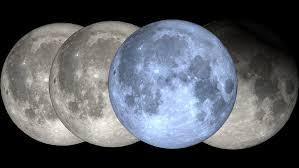

The rare supermoon blue moon, also known as the ‘Sturgeon Moon’ appeared on August 19, 2024. A super moon happens when the full moon is at the closest point to Earth in its orbit. Because the moon is closer, it looks about 14% bigger and 30% brighter than it does when it’s farther away. A full moon occurs when the moon is positioned directly opposite the sun, making the whole side we see fully lit up. The full moon will rise around sunset and set around sunrise, and it will look “full” not just on the main night but also on the nights right before and after.
What is a Blue Moon?
A blue moon is a term used when there are two full moons in a single month, which happens every 2-3 years. Another definition also refers to the third full moon in a season with four full moons. The blue moon on August 19 was the first of four supermoons in 2024. The others will appear on September 18, October 17, and November 15.
Will the Moon Look Blue?
Even though it’s called a blue moon, the moon won’t look blue. The only time the moon might appear bluish is if there are certain atmospheric conditions, like smoke or dust. Normally, the moon will look more yellow or orange when it’s close to the horizon because of the way light scatters in the atmosphere.
How Often Do Super Blue Moons Happen?
Super blue moons are quite rare, occurring roughly every 10 to 20 years. While about 25% of all full moons are super moons, only about 3% are blue moons. This makes the Super Blue Moon a special event.
Why Might the Moon Look Bigger or Smaller?
While a super moon is technically bigger and brighter, not everyone may notice the difference. How large the moon appears can depend on where you are, how clear the sky is, and something called the “moon illusion,” where the moon looks larger when it’s near the horizon compared to when it’s higher in the sky
(NNI / Latest news / Latest news india / India latest news/UPSC Preparation)
What is Krishi-DSS Digital Geospatial Platform?
Latest News: 20th August 2024, UPSC Preparation
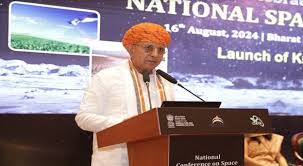

The Indian government introduced the Krishi-Decision Support System (Krishi-DSS), a digital platform designed to manage agricultural data across the country, on August 16 2024. This tool provides a wide range of information, including satellite images, weather data, and soil health details, all accessible from anywhere at any time.
Platform Overview
Krishi-DSS was created through a collaboration between the Ministry of Agriculture and the Department of Space. It collects detailed data about farming, from large-scale agricultural areas down to specific soil characteristics, helping farmers and policymakers make better decisions.
Key Features
Drought Monitoring: The platform tracks drought conditions by providing updates on soil moisture, water levels, and crop health, allowing the government to respond quickly.
Crop Weather Watch: This feature continuously monitors how weather affects crops, including harvest progress and instances of crop residue burning.
Field-Parcel Segmentation: By identifying specific field units, the system helps understand the unique needs of each area, enabling more targeted farming interventions.
Soil Information System: Krishi-DSS gathers detailed soil data, such as soil type, pH levels, and overall health, which is essential for determining the best crops for specific lands.
Applications and Benefits
The data provided by Krishi-DSS supports informed decision-making for both farmers and the government. It helps develop solutions tailored to farmers’ needs, including:
Personalized Advisories: Customized advice based on specific agricultural conditions.
Disaster Alerts: Early warnings for threats like pest outbreaks and extreme weather.
Krishi-DSS is a major step forward in using technology to innovate agriculture in India. By integrating extensive data, it aims to boost productivity, support research, and enhance the overall resilience of the agricultural sector.
About the Ministry of Agriculture
The Ministry of Agriculture manages food production, land management, and agricultural policies. Established in many countries, it often works with rural development programs. The first agricultural ministry was created in France in 1826. In the U.S., the Department of Agriculture was founded in 1862, launching important programs like the Cooperative Extension Service. The ministry is also involved in research, promoting sustainable practices, and addressing food security. It plays a role in international agreements on agricultural trade and climate impacts, shaping global food systems.
New Orchid Species Discovered in Sikkim
Latest News: 19th August 2024


A newly discovered orchid species, Gastrodia indica, was found in Fambonglho Wildlife Sanctuary in Sikkim, India, by botanist Madhusudan Khanal. This orchid is notable because it does not open its flowers, a rare trait among
orchids, making it the first known cleistogamous orchid in India.
Discovery Details
Gastrodia indica was found at an altitude of 1,950 to 2,100 meters. This discovery increases the number of Gastrodia species in India to ten. Khanal also prepared herbarium specimens to preserve samples of this new find.
Cleistogamy Explained
Cleistogamous
plants, like Gastrodia indica, produce flowers that stay closed. This is different from chasmogamous flowers, which open up for pollination. Staying closed helps Gastrodia indica to self-pollinate, which is useful in its specific environment.
Ecological Relations
Gastrodia indica is a holomycotrophic plant, meaning it depends entirely on fungi for its nutrients because it lacks chlorophyll. It grows in moist, decaying leaf litter and is found near tree species like Magnolia doltsopa and Acer campbelli. There are fewer than 100 Gastrodia indica plants observed. Its small population and specialized habitat make it vulnerable to threats. Any disturbance in its environment could risk its survival.
Significance of Fambonglho Wildlife Sanctuary
Fambonglho Wildlife Sanctuary is important for protecting a wide range of wildlife and plants, including rare species. It provides a safe haven for endangered animals and is a key habitat for orchids and other sensitive plants. The sanctuary also offers beautiful views of the Khangchendzonga mountain range.
About Orchids
Orchids are one of the largest plant families, with over 25,000 species. They grow on every continent except Antarctica. Some orchids have evolved to mimic female insects to attract male pollinators. Vanilla, the only edible orchid, comes from the Vanilla planifolia genus. Orchids can live for many years, and their seeds are very small, often needing specific fungi to grow. Some orchids, like the Ghost Orchid, lack chlorophyll and depend entirely on their host for nutrients.
About Fambonglho Wildlife Sanctuary
Located in Sikkim, India, Fambonglho Wildlife Sanctuary covers 51.76 square kilometers. Established in 2001, it is home to diverse plant and animal species, including endangered ones like the Red Panda and Himalayan Black Bear. The sanctuary is part of the Khangchendzonga biosphere reserve, with rich biodiversity that includes over 118 bird species and many orchids. It also plays a crucial role in supporting the local water supply and features a range of ecosystems due to its elevation, which ranges from 1,800 to 3,000 meters.
(NNI / Latest news / Latest news india / India latest news/UPSC Preparation)
ISRO Launched SSLV-D3-EOS-08
Latest News: 18th August 2024, UPSC Preparation


The Indian Space Research Organisation (ISRO) launched the SSLV-D3-EOS-08 mission. This mission launched a small satellite designed to observe Earth. It follows the success of the earlier SSLV-D2-EOS-07 mission, which was launched in February 2023.
Development Milestones
The SSLV-D3-EOS-08 is the third flight in ISRO’s Small Satellite Launch Vehicle (SSLV) series. This mission completes the development phase of this new rocket. Earlier in 2024, ISRO successfully launched two other missions: PSLV-C58/XpoSat in January and GSLV-F14/INSAT-3DS in February.
Launch Details
Originally set for August 15, the launch has been rescheduled to August 16 at 9:19 am IST. The launch occurred at the Satish Dhawan Space Centre. The SSLV rocket is about 34 meters tall and can carry payloads weighing up to 500 kg into Low Earth Orbit (LEO).
Mission Objectives
The goals of the SSLV-D3-EOS-08 mission include:
Building and launching a microsatellite.
Developing instruments that will work with this microsatellite.
Using new technology for future satellites.
Satellite Specifications
The Earth Observation Satellite involved in this mission:
Weighs about 175.5 kg.
Uses 420 watts of power.
Is built on the Microsat/IMS-1 bus.
Has a mission life of one year and will be launched using the SSLV-D3 rocket.
Payload Details
The satellite has three main instruments:
Electro-Optical Infrared Payload (EOIR): Takes pictures using infrared light to help with surveillance, disaster monitoring, and environmental studies.
Global Navigation Satellite System-Reflectometry Payload (GNSS-R): Uses GPS signals to analyze ocean winds, and soil moisture, and detect floods.
SiC UV Dosimeter: Measures ultraviolet light for the Gaganyaan Mission and acts as a sensor for gamma radiation.
Commercial Implications
The successful launch of SSLV-D3-EOS-08 is expected to boost the capabilities of NewSpace India Ltd, ISRO’s commercial arm. This will likely open up more opportunities in the satellite launch market.
About Small Satellite Launch Vehicle (SSLV)
The Small Satellite Launch Vehicle (SSLV) is an Indian rocket designed for quickly launching small satellites. It can carry about 500 kg of payload to sun-synchronous orbits and can be assembled in just 72 hours. SSLV had its first flight in August 2022 and is used for commercial satellite launches. It is based on the successful Polar Satellite Launch Vehicle (PSLV) and offers flexibility for multiple missions, enhancing India’s launch capabilities.
(NNI / Latest news / Latest news india / India latest news/UPSC Preparation)
#IndianArmy
#TerroristEncounter
#CounterTerrorism
#IndianSecurityForces
#LashkarETaiba
#TerrorismInIndia
#OperationIndia
#AntiTerrorOperation
#IndianArmedForces
#KashmirEncounter
What is Human Parvovirus B19?
Latest News: 17th August 2024, UPSC Preparation


The US Centers for Disease Control and Prevention (CDC) issued a warning on August 13, about an increase in cases of parvovirus B19, also known as “fifth disease.” This is a highly contagious infection that is currently affecting many young children in the United States. There has also been a spike in cases across 14 European countries earlier in 2024.
What is Parvovirus B19?
Parvovirus B19 is a virus that spreads through the air via tiny droplets when an infected person coughs or sneezes. It is a seasonal virus, meaning it tends to appear more during certain times of the year. People who have the virus might not show any symptoms, but they can still spread it to others. The CDC has noticed an unusual rise in the number of infections, even though this virus is not usually monitored closely.
What are the Symptoms?
When someone gets infected with parvovirus B19, they might first feel like they have the flu, with symptoms such as muscle aches, fever, headache, and feeling very tired. After a few days, more noticeable symptoms can appear, like:
A red rash on the face that looks like the person’s cheeks have been slapped.
Joint pain and swelling.
A rash on other parts of the body.
How is it Treated?
There is no specific medicine to cure parvovirus B19. Treatment focuses on making the person feel better by relieving symptoms like fever and pain. Most people recover without any serious problems. However, those with weakened immune systems or certain blood disorders might face more severe issues, such as anemia (a condition where the body doesn’t have enough healthy red blood cells).
Who is Most at Risk?
Pregnant women are particularly vulnerable to parvovirus B19. If they become infected, there is a small risk (5-10%) of complications, including miscarriage. The virus can be passed from the mother to the fetus.
How Contagious is It?
People are most contagious in the early stages of the infection, even before the rash appears. Once the rash shows up, the risk of spreading the virus decreases. Since there is no vaccine to prevent parvovirus B19, the CDC recommends basic hygiene practices like regular hand washing, wearing masks, and taking general precautions to avoid getting infected.
More About Parvovirus B19
Parvovirus B19 was first discovered in 1975. It primarily infects humans and is known for causing fifth disease, especially in children. The virus attacks certain cells in the bone marrow, which can lead to anemia in people with certain health conditions. It is mainly spread through respiratory droplets, but it can also be transmitted through blood. Although many people do not show symptoms, the virus can cause serious complications, especially during pregnancy.
What is the Fifth Disease?
The fifth disease is most common in children and is known for the distinctive red rash on the cheeks. The name “fifth disease” comes from its place on a historical list of common childhood rashes. While the disease is usually mild and goes away on its own in one to three weeks, it can cause anemia in people with certain blood disorders. Severe cases are rare, but when they occur, they require careful medical attention.
(NNI / Latest news / Latest news india / India latest news/UPSC Preparation)
World’s Oldest Calendar Discovered
Latest News: 16th August 2024, UPSC Preparation

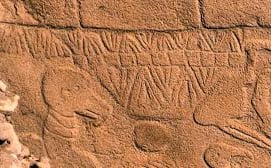
Archaeologists at Göbekli Tepe in southern Turkey have discovered what is thought to be the Earth’s oldest known Sun-and-Moon
calendar, carved into a large stone pillar. This discovery, reported in a study on July 24, offers new insights into the development of early timekeeping methods.
Key Discovery
The pillar, estimated to be nearly 13,000 years old, is adorned with 365 V-shaped symbols, each likely representing a single day. This design reflects an advanced understanding of both solar and lunar cycles. The calendar includes 12 lunar months plus an additional 11 days, indicating that ancient societies had a sophisticated grasp of time.
Historical Implications
In addition to the calendar, the pillar features carvings of a bird-like figure, which may symbolize the summer solstice constellation. These carvings are believed to date back to around 10,850 B.C., a period marked by a major comet strike that possibly impacted the climate and culture of the region. This comet event is thought to have triggered an ice age, leading to changes in societal structures and potentially fostering new religious and agricultural practices.
Impact on Human Development
Martin Sweatman, one of the study’s authors, suggests that the comet strike and its environmental effects might have spurred the development of early writing systems. The findings at Göbekli Tepe not only demonstrate early human observations of celestial events but also enhance our understanding of prehistoric societies. This discovery sheds light on early astronomical practices and cultural dynamics in Turkey, revealing the complex knowledge systems of ancient peoples and paving the way for future advancements in human knowledge.
Facts About Göbekli Tepe
Göbekli Tepe, in Turkey, is the oldest known temple complex, built around 9600 BCE.
It has huge stone pillars set up in circles, which were likely used for ceremonies.
Göbekli Tepe was built over 6,000 years before Stonehenge.
It was likely constructed by people who didn’t farm, which is surprising because it was thought that farming came before building complex structures.
What exactly Göbekli Tepe was used for is still debated, with ideas like ancestor worship being possible reasons.
The site has detailed carvings of animals, showing early forms of symbolic thinking.
Excavations started in the 1990s, revealing the importance of the site.
(NNI / Latest news / Latest news india / India latest news/UPSC Preparation)
What is Dynamic Reference Rate?
Latest News: 15th August 2024, UPSC Preparation


India and Russia are working on introducing a “dynamic reference rate” for their currencies, the Indian Rupee (INR) and the Russian Rouble (RUB), to make financial transactions between the two countries easier and to reduce the impact of U.S. sanctions on Russia. Despite these efforts, India’s Reserve Bank Governor, Shaktikanta Das, has clarified that there are no plans to completely stop using the U.S. dollar, which remains the dominant currency in global trade.
Current Financial Transaction Challenges
Currently, converting Indian Rupees to Russian Roubles is a complicated process. It usually involves first converting INR to U.S. dollars (USD) and then from USD to RUB. This process is made even more complex by U.S. sanctions, which limit Russian banks’ access to international financial systems, particularly for large transactions. Additionally, because India imports more from Russia than it exports, Russian banks end up holding large amounts of Indian Rupees, which complicates financial dealings further.
Proposed Solutions
To simplify this, India and Russia are considering setting up a direct exchange rate between the INR and RUB. This rate would be adjusted according to the market by both the Reserve Bank of India and the Bank of Russia. This plan is similar to a system India has with the UAE, where local currency settlements are used for transactions. Additionally, there is potential for Russia to invest its funds in Indian financial markets, which could strengthen economic ties between the two countries.
Continuation of US Sanctions
However, U.S. sanctions continue to restrict Russian banks’ access to global financial services, forcing them to rely on smaller banks for some transactions. This situation highlights the need for better systems for INR-RUB exchanges and investments, especially for large trade deals.
India’s Strategic Moves toward De-Dollarisation
Efforts to reduce dependence on the U.S. dollar were also discussed by Indian Prime Minister Narendra Modi and Russian President Vladimir Putin in July 2023. These discussions were part of a broader initiative within BRICS (Brazil, Russia, India, China, and South Africa) to lessen reliance on the dollar in international trade. India has also started a digital platform with ASEAN countries to conduct cross-border trade without using the dollar. Currently, about 60% of trade with Russia is done in local currencies.
The BRICS Initiative
BRICS countries are exploring the possibility of creating a new reserve currency backed by their collective currencies, although this has not yet been implemented. Projects like the BRICS Bridge are looking into using blockchain technology to enhance financial integration among member countries, especially through central bank digital currencies.
About Dynamic Reference Rate
The “Dynamic Reference Rate” (DRR) that India and Russia are considering would adjust according to real-time market conditions. It would serve as a benchmark for various financial products, such as loans and derivatives. Unlike fixed rates, the DRR is designed to increase transparency and reflect the rates set by central banks, which can help stabilize markets during volatile times. The use of DRR is growing, especially in emerging markets, as digital finance continues to advance.
news live / news24 live / news aaj tak / news18 live / news live hindi / news today / news 24 / news aaj ka / news aaj ki / news abp live / news aaj tak live today 2024 live / news asianet live / news abp / news arjun / ai news today / news Pakistan / news live / ai news 24 / news book / news channel / dd news / news eighteen live / news english live india / news elvish Yadav / news English / news election / news eighteen / news english live / bd news 24 / dd news live / news debate in hindi latest / news dijiye / news db live / news drishti ias / news dikhaiye / news bharat / news live / news channel live hindi / news channel live hindi all / news channel live / news nation / news live
#breakingnews #sneakernews #freefirenews #fortnitenews #footballnews #cryptonewsdaily #artnewss #artsnewss #aeronewsx #goodnewsxhm #runews24 #wasinews24 #xebernews24 #cryptonews24 #foxnews5 #wkrgnews5 #actionnews5 #wlwtnews5 #ktlanews5 #cearánews7 #eyewitnessnews7 #abcnews7 #bvbnews7 #commentwithnews7tamil
#baynews9
JUICE Mission Sets to Break Records with Lunar-Earth Flyby
Latest News: 13th August 2024


The European Space Agency (ESA) is about to perform a very important and new kind of move in its JUICE mission. This move called a Lunar-Earth gravity assist, will use both the Moon and Earth to help change the spacecraft’s speed and direction. It’s the first time a spacecraft will use two different celestial bodies in this way. This maneuver is crucial and will greatly affect how the rest of the mission goes.
What is the JUICE Mission?
JUICE, which stands for JUpiter ICy moons Explorer, is a spacecraft created to study the moons of Jupiter, especially Europa, Ganymede, and Callisto, to see if they could support life.
Execution of the Flyby
Here’s how it will work:
Moon Encounter: On August 19, 2023, at 21:16 UTC, JUICE will fly close to the Moon, which will slow it down a bit.
Earth Approach: About 25 hours later, JUICE will come near Earth, where Earth’s gravity will slow it down even more.
Challenges of the Maneuver
The maneuver needs to be done with very careful timing and exact positioning. Even a small mistake could put the whole mission at risk. It’s like trying to drive through a narrow hallway at a high speed, as described by Spacecraft Operations Manager Ignacio Tanco. The main goal of the mission is to find out if any of Jupiter’s icy moons could support life. Dr. Olivier Witasse emphasized that this is the most important question the mission is trying to answer.
Benefits of the Flyby
The fuel saved during the Lunar-Earth gravity assist (LEGA) is very important for JUICE’s future tasks. It will allow the spacecraft to fly close to Ganymede, one of Jupiter’s moons, at about 200 kilometers (120 miles) above its surface to take detailed pictures and measurements. This flyby will also give the team a chance to test the spacecraft’s tools in space, making sure they work well before JUICE begins its detailed studies of Ganymede and other moons.
Facts about JUICE mission
The JUICE mission, led by the European Space Agency (ESA), aims to explore Jupiter’s moons, especially Europa, Ganymede, and Callisto.
The mission was launched in April 2023 and will take eight years to reach Jupiter.
The spacecraft has ten scientific instruments to study the icy surfaces and possible underground oceans of the moons.
Its findings could help us understand if life could exist beyond Earth.
JUICE will also study Jupiter’s magnetic field and atmosphere, providing important data for planetary science.
(NNI / Latest news / Latest news india / India latest news)
(UPSC current affairs / UPSC / UPSC Preparation / UPSC Preparation Books / UPSC Preparation Strategy )
What is Waqf Act?
Latest News: 7th August 2024, UPSC Preparation


There are ongoing discussions about a possible government bill to change the Waqf Act of 1995. This bill aims to improve accountability and transparency in Waqf boards and promote the inclusion of women in their administration.
Understanding Waqf Boards
Waqf Boards in India, created under the Waqf Act of 1995, manage Waqf properties. These properties support religious, social, and educational institutions. There are 30 Waqf Boards across India, overseeing properties worth crores of rupees and generating about Rs 200 crore in annual revenue.
What is Waqf?
A Waqf is a charitable donation in Islamic law, usually involving property given for religious or charitable purposes. The administration of Waqf properties is usually handled by a mutawalli, who can be an individual or a management committee.
Government’s Position
Government officials, like former Minority Affairs Minister Mukhtar Abbas Naqvi, argue for reforms to make Waqf management more accountable and inclusive, removing political barriers. However, many Muslim organizations, including the All India Muslim Personal Law Board (AIMPLB), strongly oppose the proposed changes. They believe these changes would reduce Waqf boards’ autonomy and legal status.
Political Dynamics Surrounding Waqf Boards
Waqf Boards are very influential within the Muslim community. Various political parties, especially those supporting secularism, oppose reforms that they see as infringing on the rights of Muslims, similar to past issues like the Triple Talaq Bill.
Historical Timeline of Waqf Legislations
Here’s a brief history of Waqf legislation in India:
1913: Initial acts related to Waqf properties were introduced.
1923: The UP Muslim Waqf Act was enacted during British rule.
1936: The State of UP enacted its own Waqf Act.
1942: The UP Sunni Central Waqf Board was established.
1960: A comprehensive UP Muslim Waqf Act replaced earlier laws.
1995: The Central Waqf Act was introduced for uniform administration, with further amendments in 2013.
The government’s efforts to reform Waqf boards are complex and have drawn both support and significant opposition, centered around issues of accountability, representation, and religious sensitivities within the Muslim community.
(NNI / Latest news / Latest news india / India latest news)
(UPSC current affairs / UPSC / UPSC Preparation / UPSC Preparation Books / UPSC Preparation Strategy )
What is B-Ready Index?
Latest News: 6th August 2024, UPSC Preparation


India is preparing for the World Bank’s new Business-Ready (B-Ready) index, which will evaluate the global business environment and investment climate. This new index replaces the Doing Business index and focuses on key factors that affect how businesses operate.
Transition from Doing Business Index
The B-Ready index aims to give a more complete picture than the Doing Business index. It will compare countries based on ten important topics that cover the entire life cycle of businesses. The B-Ready report will focus on crucial areas such as:
Business entry: How easy it is to start a business
Labour: Employment regulations and workforce conditions
Financial services: Access to banking and financial products
International trade: How efficiently goods are imported and exported
Taxation: Tax policies and their impact on businesses
These topics will provide insights into the rules and conditions that businesses operate under.
International Trade Assessment
One of the key areas is international trade, which looks at how efficiently goods are imported and exported. This includes customs procedures and the role of digital trade, which makes it easier to access global markets. Digital trade helps increase transactions across borders, making international markets more accessible. Simplifying processes and lowering compliance costs are essential for maximizing the benefits of international trade, according to officials.
Target for E-commerce Exports
India aims to reach $200-300 billion in e-commerce exports by 2030. Currently, e-commerce exports make up only a small part (0.9-1.1%) of the country’s total merchandise exports, so there is a need to become more efficient and increase capacity.
About B-Ready index
The B-Ready index also evaluates how prepared businesses are for economic shocks and crises. Created by the Global Business Network, it looks at resilience and adaptability, considering factors like supply chain stability, workforce flexibility, and technology use. Countries with higher B-Ready scores often recover faster from crises. The index encourages proactive risk management strategies and has been useful during the COVID-19 pandemic in helping businesses identify weaknesses. Small and medium-sized enterprises (SMEs) often score lower due to limited resources. The index highlights the importance of sustainable practices for long-term resilience.
(NNI / Latest news / Latest news india / India latest news)
(UPSC current affairs / UPSC / UPSC Preparation / UPSC Preparation Books / UPSC Preparation Strategy )
Saturn Ejects Comet A117uUD into Interstellar Space
Latest News: 5th August 2024, UPSC Preparation


In 2024, scientists made a significant discovery when they announced that comet A117uUD had been ejected from our solar system after a close encounter with Saturn.
Discovery of Comet A117uUD
The comet, A117uUD, was discovered by the Asteroid Terrestrial-impact Last Alert System (ATLAS) on June 14, 2024. Researchers studied its path around the Sun using 142 tracking observations.
Impact of Saturn’s Gravity
In 2022, A117uUD had a close encounter with Saturn. The planet’s strong gravity changed the comet’s path, sending it into a very elongated orbit and eventually ejecting it from the solar system at a speed of about 10,800 km/h. This event is only the second time scientists have documented a comet being thrown out of the solar system by a planet’s gravity. The first time was with Comet C/1980 E1 (Bowell) and Jupiter in 1980.
Insights from the Ejection
Studying A117uUD’s path provides valuable insights into how gravity affects objects in space. This event suggests that comet ejections might happen more often than previously thought, challenging the idea that they are rare. As A117uUD travels into interstellar space, it joins a growing list of objects from outside our solar system, helping scientists learn more about space mechanics and the chances of future encounters with similar objects.
Role of ATLAS
The ATLAS system played a crucial role in discovering and monitoring A117uUD, highlighting its importance in expanding our knowledge of the solar system and unusual celestial events. Scientists will continue to observe A117uUD to uncover more mysteries about our solar system and prepare for possible future encounters with interstellar objects.
Saturn Facts:
Size and Rings: Saturn is the second-largest planet in our solar system, famous for its spectacular rings made of ice and rock.
Moons: It has 83 confirmed moons, with Titan being larger than the planet Mercury.
Winds: Saturn’s winds can reach speeds of 1,100 miles per hour.
Composition: It is a gas giant primarily made of hydrogen and helium.
Density: Despite its size, Saturn is so light that it could float in water.
Color: The planet’s yellowish color comes from ammonia crystals in its atmosphere.
(NNI / Latest news / Latest news india / India latest news)
(UPSC current affairs / UPSC / UPSC Preparation / UPSC Preparation Books / UPSC Preparation Strategy )
What is CAR-T cell therapy? – Current Updates (August, 2024)
Latest News: 4th August 2024, UPSC Preparation


CAR-T cell therapy is a groundbreaking type of immunotherapy that uses the patient’s immune system to fight certain blood cancers. It is particularly promising for treating leukemia and lymphoma.
Understanding the Immune System
The immune system is the body’s defense against diseases, composed of various types of cells:
White Blood Cells (WBCs): Made in the bone marrow, they fight infections.
Neutrophils: Attack harmful invaders.
Lymphocytes: These include B-cells (which make antibodies) and T-cells (which kill infected cells).
Monocytes: Turn into macrophages to eat up invaders.
Eosinophils: Fight parasites and reduce inflammation.
Basophils: Involved in inflammatory responses.
Immune Response Mechanisms
The immune system has two main strategies:
Innate Immunity: Provides quick, general defense using barriers and certain cells.
Adaptive Immunity: Uses lymphocytes for a targeted response, creating memory cells for future protection.
T-Cells and CAR-T Therapy
T-cells are important in CAR-T cell therapy because they can remember and attack specific harmful invaders. In this therapy, scientists change the T-cells using genetic engineering. They add special receptors called chimeric antigen receptors (CARs) to the T-cells. These CARs help the T-cells recognize and stick to cancer cells. This allows the T-cells to find and destroy the cancer cells more effectively.
The CAR-T Cell Therapy Procedure
T-cells are vital in this therapy because they can remember and attack specific pathogens. Here’s how the therapy works:
Apheresis: Collecting T-cells from the patient’s blood.
Genetic Modification: Altering T-cells in the lab to add CARs (Chimeric Antigen Receptors) that recognize and bind to cancer cells.
Expansion: Growing a large number of modified T-cells.
Reinfusion: Putting the modified T-cells back into the patient’s bloodstream
Benefits of CAR-T Cell Therapy
Targeted Precision: Directly attacks cancer cells, sparing healthy tissues and reducing side effects.
Personalized Treatment: Customized to the patient’s specific type of cancer.
Long-Lasting Effects: Provides a prolonged immune response against cancer.
Reduced Healthcare Costs: Fewer hospital stays and less need for ongoing treatment.
Advances in Research: Constant improvements lead to new treatment options and better patient outcomes.
Affordability: Innovations like NexCAR19 make the therapy more accessible.
(NNI / Latest news / Latest news india / India latest news)
(UPSC current affairs / UPSC / UPSC Preparation / UPSC Preparation Books / UPSC Preparation Strategy )
Tree Cover Increase Threatens Grassland Bird Populations
Latest News: 2nd August 2024, UPSC Preparation


Increasing tree cover is usually seen as good for protecting nature and fighting climate change. But new research shows that trees spreading into places that have always been open, like savannahs and grasslands, can harm native animals, especially birds that live in grasslands. A major study in Global Change Biology found that grassland bird numbers in the African savannah have dropped by more than 20%.
Understanding Open Ecosystems
Grasslands and savannahs are very important for biodiversity. They make up almost 40% of the Earth’s land and support many different species, from large plant-eaters to unique birds. However, these ecosystems face threats from being turned into farmland, being built on, and being overgrazed. Another threat is woody encroachment.
Woody Encroachment Defined
Woody encroachment happens when open areas, like grasslands and savannahs, start to have more trees and shrubs. This change makes the ecosystem more uniform, with fewer different types of plants and animals. As a result, the overall biodiversity decreases.
Factors Driving Woody Encroachment
Several things cause woody encroachment:
Disruption of Disturbance Regimes: Natural and human activities, like stopping fires and changing grazing habits, allow trees to grow more.
Climate Change: Higher CO2 levels help trees grow more than grasses, which leads to fewer grasslands.
Consequences for Biodiversity
The change from open areas to ones with more trees has big effects on biodiversity:
Declining Bird Populations: Bird species that live in grasslands are decreasing because trees are taking over their habitats.
Altered Ecosystem Dynamics: Changes in the soil and higher risk of predation threaten animals like grassland rodents.
Invasive Species and Plantation Effects
Invasive tree species make woody encroachment worse. For example, in India, species like Prosopis juliflora have turned grasslands into dense woodlands, harming the habitat even more. To fight the negative effects of woody encroachment, more research is needed to understand its impact and to monitor open ecosystems over time. It’s also important to stop misclassifying these habitats as “wastelands” to protect them effectively.
(NNI / Latest news / Latest news india / India latest news)
(UPSC current affairs / UPSC / UPSC Preparation / UPSC Preparation Books / UPSC Preparation Strategy )
What Is Money Dysmorphia?
Latest News: 31st July 2024, UPSC Preparation


Generation Z, born between 1997 and 2012, has unparalleled access to financial information and career opportunities compared to previous generations. Despite this advantage, many of them feel anxious about their financial futures.
Understanding Money Dysmorphia
Almost 50% of Gen Z faces a condition referred to as “money dysmorphia,” which is characterized by an unrealistic perception of their financial situation. This anxiety leads to constant worry and increased vigilance about their finances, even when there are no real financial problems.
Psychological Impact on Gen Z
Financial therapist Amanda Clayman believes that this phenomenon is linked to the intense mental pressure that Gen Z experiences, especially during critical life transitions such as getting married, buying a home, and changing careers.
Financial Dependence on Parents
A significant 50% of Gen Z relies on parental support to navigate these financial milestones, highlighting a shift in the approach to traditional economic progress compared to previous generations.
Challenges Faced by Gen Z
Previous generations made similar life choices under different circumstances, with less influence from social media pressures and more financial knowledge. This historical context suggests that older generations may have developed healthier attitudes toward money management.
(NNI / Latest news / Latest news india / India latest news)
(UPSC current affairs / UPSC / UPSC Preparation / UPSC Preparation Books / UPSC Preparation Strategy )
What is the Oropouche Virus?
Latest News: 28th July 2024, UPSC Preparation
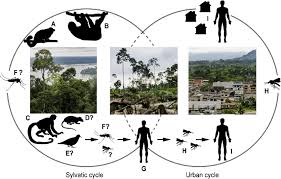

The Oropouche virus, which is mostly spread by midges and mosquitoes, has killed its first people in Brazil. The health ministry of Brazil stated that two women younger than 30 years old died in Bahia. People are now more aware of the virus, which has signs similar to dengue fever. The Oropouche virus was first found in Trinidad and Tobago in 1955. Midges and maybe mosquitoes are the ones that spread it. At this point, we know that the virus does not directly spread from person to person. It is being looked into, though, whether it could be passed from pregnant women to their future children.
Geographic Spread
Most of the cases of the Oropouche virus have been found in South America, Central America, and the Caribbean. Over 7,236 cases have been reported in Brazil as of 2024, adding to the over 7,700 cases found in Brazil, Bolivia, Peru, Cuba, and Colombia as a whole.
Symptoms & Prevention
The Oropouche virus causes fever, muscle pain, and headaches, which are all symptoms of the dengue virus. In severe cases, consequences like meningitis can be so bad that they can kill the person. At this time, there are no special medicines or vaccines that can protect against the virus. Taking preventative steps focuses on staying away from bug bites. Some suggestions are to wear protective clothes, use insect repellent, and use fine-mesh mosquito nets instead of regular nets because midges can get through them.
Need for Research and Preparedness
Researchers say that more work needs to be done to fully understand how the virus affects people and make quick diagnosis tests. To lower the risk of outbreaks, better communication and planning are needed at all levels of health authority. This is similar to what expert Concetta Castilletti said about what we learned from the COVID-19 pandemic.
About Oropouche virus
Discovery and Transmission: The Oropouche virus, discovered in 1955 in Trinidad, is an arbovirus primarily transmitted by mosquitoes, particularly Culex species. It can also be spread through contact with infected bodily fluids.
Endemic Regions and Symptoms: Endemic in tropical regions of South America, the Oropouche virus is linked to Oropouche Fever, which causes symptoms similar to dengue.
Animal Hosts and Treatment: The virus has been isolated from monkeys and sloths. Named after a local Native American term, no specific antiviral treatments exist for the Oropouche virus, but vaccination efforts are ongoing.
(NNI / Latest news / Latest news india / India latest news)
(UPSC current affairs / UPSC / UPSC Preparation / UPSC Preparation Books / UPSC Preparation Strategy )
Exercise KHAAN QUEST 2024
Latest News: 27th July 2024, UPSC Preparation


The Indian Army has sent a group to Ulaanbaatar, Mongolia, to take part in the multinational military drill KHAAN QUEST 2024, which will run from July 27th to August 9th, 2024. The main goal of this practice is to improve the world’s ability to keep the peace.
Historical Background
The first KHAAN QUEST took place in 2003 as a partnership between the US and Mongolia. Since then, it has grown into a major Multinational Peacekeeping Exercise. The 21st version will be held in 2024. In July 2023, the last drill took place. The U.S. Indo-Pacific Command is one of the sponsors of the drill, which is being held by the Mongolian Armed Forces. This shows that it involves forces from many countries.
Indian Army Contingent Composition
The Indian contingent comprises 40 personnel, including:
Troops from a Battalion of the Madras Regiment
Additional personnel from various Arms and Services
One Woman Officer and two Women Soldiers, promoting gender inclusivity
Main Objectives of Participation
The Indian Army aims to:
Prepare for peacekeeping missions in multinational settings
Enhance interoperability and military readiness in peace support operations
Emphasise a high level of physical fitness, joint planning, and tactical drills
Tactical Drills and Operations
Participants will engage in a variety of exercises, including:
Establishing Static and Mobile Check Points
Conducting Cordon and Search Operations
Performing Patrolling and Evacuation of Civilians from Hostile Areas
Executing Counter Improvised Explosive Device drills
Practising Combat First Aid and Casualty Evacuation
Benefits of Participation
Engagement in KHAAN QUEST provides the Indian Army with several advantages:
Enhanced peacekeeping skills for UN missions
Valuable international exposure collaborating with diverse military forces
Improved tactical proficiency through rigorous training exercises
In addition to KHAAN QUEST, India and Mongolia conduct a bilateral military exercise named “Nomadic Elephant,” with the most recent edition held in July 2024 in Meghalaya.
(NNI / Latest news / Latest news india / India latest news)
(UPSC current affairs / UPSC / UPSC Preparation / UPSC Preparation Books / UPSC Preparation Strategy )
World Leaders Summit 2024
Latest News: 26th July 2024, UPSC Preparation


The World Leaders Summit 2024 is a pivotal event bringing together influential figures at the historic House of Lords in the UK Parliament. This summit represents a significant opportunity for global dialogue and collaboration in addressing urgent international issues such as climate change, economic disparity, and technological advancements.
Importance of the 2024 Summit at the House of Lords
The House of Lords, a symbol of stability and leadership on a worldwide scale, is an apt venue for the summit. The world’s top officials may work together in this setting, which is crucial for solving complex problems. The varied backgrounds of the leaders in attendance boost creative problem-solving and increase the likelihood of genuine, cross-border relationships.
Key Topics Discussed at the Summit
The summit focused on critical global issues:
Economic Growth: Discussions centered on promoting sustainable, inclusive economic development.
Sustainable Development: Emphasised the need for actionable plans to balance economic growth and environmental preservation.
Artificial Intelligence (AI): Explored harnessing AI’s potential while addressing its risks.
Healthcare Access: Addressed the equitable distribution of resources post-pandemic.
Technology’s Role: Examined digital transformation’s impact on governance and public engagement.
Notable Attendees and Their Contributions
The summit attracted diverse leaders, including:
Dr Vivek Lall: Discussed technology’s role in policy shaping and responsible innovation in AI.
Osama Ben Saleh Bukhari: Emphasised sustainable development and corporate social responsibility.
Baroness Sandy Verma: Reinforced the UK’s commitment to global diplomacy.
Vikash Sorout: Organised the event, highlighting collaboration amongst leaders.
Each attendee brought unique insights, enriching the dialogue that could lead to actionable change.
Future Plans for the World Leaders Summit
Upcoming summits promise continued evolution with a focus on:
Collaboration: Strengthened alliances to address urgent global issues.
Diverse Participation: Inclusion of various sectors, like young leaders and activists, to bring fresh perspectives.
Regional Forums: Discussions leading up to major events to localize dialogue and enrich broader conversations
With ongoing support from VS International Limited, the summits aim to cultivate critical discussions that drive global change.
(NNI / Latest news / Latest news india / India latest news)
(UPSC current affairs / UPSC / UPSC Preparation / UPSC Preparation Books / UPSC Preparation Strategy )
At what age do Olympic athletes peak? Science has an answer
Latest News: 25th July 2024


Researchers analysed career performance data from every track and field athlete who competed in individual events at the Olympics since 1996.
In Short
Their findings reveal the average age of Olympic track and field athletes
The study also found that the median peak age for these athletes
They hope their findings can benefit both athletes and fans
As Olympians from across the world gather in Paris for ultimate sporting event, a new study by University of Waterloo researchers has shed light on the optimal age for peak performance among Olympic track and field athletes.
The research, published in the Royal Statistical Society's Significance Journal, offers valuable insights into the complex interplay of age, training, and performance in elite athletics.
(NNI / Latest news / Latest news india / India latest news)
ESA Prepares RAMSES Mission to Study Asteroid Apophis
Latest News: 24th July 2024, UPSC Preparation


The Shoemaker-Levy 9 comet broke up and hit Jupiter in 1994, which sparked a lot of interest in protecting planets. People talked about how to stop similar events from happening on Earth after this one. Planetary defense systems are getting a lot of attention around the world because asteroids could hit Earth. Space Safety is an ESA program that works to lower these risks through its future flights.
Introduction of Ramses
ESA has started getting ready for Ramses, the Rapid Apophis Mission for Space Safety. The goal of Ramses is to study asteroid 99942 Apophis when it comes close to Earth in 2029. Apophis, which is about 375 meters across, will pass within 32,000 km of Earth on April 13, 2029, and billions of people will be able to see it. This event is very rare; it only happens about once every 5,000 to 10,000 years. It won’t be a crash threat for at least 100 years.
Scientific Goals of the Ramses Mission
During its flyby, the Ramses spaceship will see how Earth’s gravity affects Apophis. This includes looking at how the asteroid’s shape, rotation, and surface features change over time. This will help us learn more about these qualities, which will be important for future defense plans. NASA’s OSIRIS-REx spacecraft will also go after Apophis, which will help experts figure out what changes happened after the flyby. This two-pronged method lets us fully compare the asteroid’s state before and after. Ramses is a good example of how to quickly send out reconnaissance missions to keep an eye on possibly dangerous asteroids. Accurate data will help with tactics for deflecting asteroids and avoiding impacts.
About ESA
Foundation and Member States: The European Space Agency (ESA) was founded in 1975 and currently comprises 22 member states. It is a major intergovernmental organization dedicated to the exploration of space, coordinating and promoting European space activities and research.
Mission Scope and Collaborations: ESA operates a variety of missions, including Earth observation, planetary science, and human spaceflight. Notably, its Earth Observation program includes the Copernicus initiative, which provides vital data for environmental monitoring and climate change. ESA also collaborates with NASA on significant missions such as the Mars Sample Return mission, showcasing its role in international space exploration efforts.
(NNI / Latest news / Latest news india / India latest news)
(UPSC current affairs / UPSC / UPSC Preparation / UPSC Preparation Books / UPSC Preparation Strategy )
New Plant Species Discovered in Arunachal Pradesh Sanctuary
Latest News: 22nd July 2024, UPSC Preparation
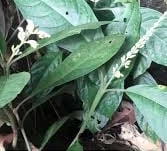

Researchers from the Botanical Survey of India (BSI) have identified a new plant species, Phlogacanthus sudhansusekharii, in the Itanagar Wildlife Sanctuary, Arunachal Pradesh. This find brings attention to the area’s wide range of plants and animals.
Species Overview
The newly discovered species belongs to the family Acanthaceae and the genus Phlogacanthus, which includes 13 known species primarily found in northeastern and eastern Himalayan states. Named in recognition of Dr Sudhansu Sekhar Dash, a BSI scientist, the species acknowledges his significant contributions to plant and ecological research in the Indian Himalayan region.
Research Findings
The research paper detailing this discovery was authored by Samrat Goswami and Rohan Maity and published in the Indian Journal of Forestry. The new species is closely related to Phlogacanthus guttatus, differing in distinct morphological features.
Significance of Discovery
Chief Minister Pema Khandu was happy about the discovery and stressed how important it is to protect Arunachal Pradesh’s natural wealth for future generations. This discovery not only shows off the biodiversity of the area, but also brings more attention to attempts to protect it.
About Phlogacanthus sudhansusekharii
The Phlogacanthus sudhansusekharii plant species is only found in India, in the Northeast area. It was found in 2015 and is in the family Acanthaceae. This plant has bright purple flowers and unique leaves. It was named after Sudhansu Sekhar Das. It usually grows in damp, shady woods and is an important part of the ecosystems in those places. Loss of habitat makes conservation activities very important. Its health benefits haven’t been fully studied yet, which shows that it might have important uses in traditional medicine.and unsustainable exploitation of forest resources has led to significant forest degradation.
Since the start of the 20th century, the world has lost about 10 million square kilometers of forests.
The UN declared 2021-2030 as the Decade of Ecosystem Restoration, aiming to restore 350 million hectares of degraded land, generating $9 trillion in ecosystem services and sequestering 13-26 gigatons of greenhouse gases.
Tree Planting: Benefits and Initiatives
Tree planting is a popular and effective method to support biodiversity and address climate crises through carbon sequestration.
Governmental and non-governmental organizations, including individuals, support mass tree-planting drives.
India celebrates the Van Mahotsava (‘festival of trees’) annually in the first week of July since 1950, launched by Agriculture Minister K.M. Munshi.
Issues with Tree Planting Drives:
Recent tree planting drives, despite their popularity, face criticism for limited community participation, lack of post-planting care, and promotion of monocultures.
Monocultures are less effective for carbon sequestration and biodiversity development.
Inappropriate tree planting in grasslands and animal habitats can destroy ecosystems, increase wildfire intensity, and exacerbate global warming.
India’s Challenges and Policy Recommendations:
India has committed to restoring 26 million hectares of degraded forests by 2030.
Challenges include 10 million hectares of forests under encroachment, the dependence of 27.5 crore people on forests, and the loss of 5.7 million hectares of forest land for non-forestry purposes.
Effective strategies should include adequate financing, active community participation, technical considerations, and public awareness campaigns to create resilient and diverse forests.
(NNI / Latest news / Latest news india / India latest news)
(UPSC current affairs / UPSC / UPSC Preparation / UPSC Preparation Books / UPSC Preparation Strategy )
The issue with tree planting schemes
Latest News: 20th July 2024, UPSC Preparation / UPSC strategy


Tree planting schemes, though popular for biodiversity and climate crisis solutions, face criticism for inadequate community involvement and poor post-planting care. Effective restoration requires comprehensive strategies, including community participation, technical considerations, and sufficient funding to achieve resilient, diverse forests.
Introduction: Forest Degradation and Restoration Efforts
Uncontrolled and unsustainable exploitation of forest resources has led to significant forest degradation.
Since the start of the 20th century, the world has lost about 10 million square kilometers of forests.
The UN declared 2021-2030 as the Decade of Ecosystem Restoration, aiming to restore 350 million hectares of degraded land, generating $9 trillion in ecosystem services and sequestering 13-26 gigatons of greenhouse gases.
Tree Planting: Benefits and Initiatives
Tree planting is a popular and effective method to support biodiversity and address climate crises through carbon sequestration.
Governmental and non-governmental organizations, including individuals, support mass tree-planting drives.
India celebrates the Van Mahotsava (‘festival of trees’) annually in the first week of July since 1950, launched by Agriculture Minister K.M. Munshi.
Issues with Tree Planting Drives:
Recent tree planting drives, despite their popularity, face criticism for limited community participation, lack of post-planting care, and promotion of monocultures.
Monocultures are less effective for carbon sequestration and biodiversity development.
Inappropriate tree planting in grasslands and animal habitats can destroy ecosystems, increase wildfire intensity, and exacerbate global warming.
India’s Challenges and Policy Recommendations:
India has committed to restoring 26 million hectares of degraded forests by 2030.
Challenges include 10 million hectares of forests under encroachment, the dependence of 27.5 crore people on forests, and the loss of 5.7 million hectares of forest land for non-forestry purposes.
Effective strategies should include adequate financing, active community participation, technical considerations, and public awareness campaigns to create resilient and diverse forests.
(NNI / Latest news / Latest news india / India latest news)
(UPSC current affairs / UPSC / UPSC Preparation / UPSC Preparation Books / UPSC Preparation Strategy )
Cave on the Moon: New Discovery for Space Exploration
Latest News: 20th July 2024, UPSC Preparation

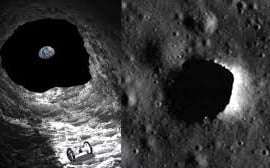
Scientists have recently proven a cave on the Moon near the Sea of Tranquility, not far from where the famous landing in 1969 took place. The cave is an important find in lunar exploration because it could be used as a home for astronauts.
Study Findings
The study named “Radar evidence of an accessible cave conduit on the Moon below the Mare Tranquillitatis pit” was published in Nature Astronomy and gives more information about the find. Researchers looked at pictures taken by NASA’s Lunar Reconnaissance Orbiter in 2010 and found a pit that they think is an entrance to the cave. The pit was made when a lava tube collapsed. That tube is a tunnel that was made when molten lava flowed under a solid surface. The width of the cave is about 45 meters, and its length can reach 80 meters.
Lunar Pits and Caves
Unlike lunar craters, which were made when asteroids hit the moon, lunar pits are big depressions with steep walls that were usually made by volcanoes more than a billion years ago. Over 200 of these pits have been found so far, and 16 of them have been proven to be caused by lava tubes that have fallen. People have thought about these buildings for more than 50 years, but it’s only now that an accessible door has been proven.
Advantages of Human Shelter
Due to its lack of oxygen, the moon’s surface is hostile and very hot. At the height of the moon day, temperatures can reach 127 degrees Celsius. At night, they drop to about -173 degrees Celsius. The temperature in the cave that was found stays stable at about 17 degrees Celsius, which is much better for human life. The cave might also protect against solar radiation and micrometeorites, which makes it a great choice for a future moon base or emergency shelter.
Challenges and Future Research
Even though moon caves are safe, they are hard to get to and keep stable. Things like possible avalanches or cave-ins need to be thought through carefully. Researchers say that more research is needed to fully understand how these caves are built. This could be done with ground-penetrating radar, robots, or special cameras. For these caves to be good places to live for a long time, they would also need systems to keep an eye on seismic activity and safety zones to keep passengers safe from any geological dangers. In the end, finding the lunar cave opens up exciting possibilities for living on the moon in the future, but a lot of study and technological progress are needed to fully realize these possibilities.
(NNI / Latest news / Latest news india / India latest news)
(UPSC current affairs / UPSC / UPSC Preparation / UPSC Preparation Books / UPSC Preparation Strategy )
Why is Jupiter’s Great Red Spot Shrinking?
Latest News: 20th July 2024, UPSC Preparation


The biggest storm in our solar system, the Great Red Spot (GRS) on Jupiter, is getting smaller right now. Some scientists think that this change might be linked to fewer small storms that normally help keep the GRS running. The GRS is a huge high-pressure storm in Jupiter’s southern hemisphere that was first seen in the middle 1600s. In the late 1800s, systematic studies began to show how it was changing all the time, which led to new ideas about its structure and dynamics.
Structure and Dynamics of the GRS
The GRS covers about 16,000 km and has winds that are faster than 321 km/h. It goes down almost 250 km through Jupiter’s atmosphere, through layers of clouds that are full of ammonia. Scientists have been trying to figure out why there has been a noticeable shrinkage over the last 100 years.
Research and Hypothesis
Caleb Keaveney, a graduate student at Yale, suggested that the GRS might be being affected by the decrease in smaller storms. His group used the Explicit Planetary Isentropic-Coordinate (EPIC) model to simulate how the GRS and different smaller storms would interact with each other. They then compared the results of these simulations to those that did not include these smaller storms. The studies showed that smaller storms are very important for keeping the GRS going and making it bigger. These smaller systems seem to keep the storm’s size the same, but if they’re not there, the storm may get smaller over 2.6 Earth years.
Comparison with Earth’s Weather Systems
Similar long-lasting high-pressure systems can be found on Earth. They are called “heat domes,” and they often change the way violent weather happens. The study suggests that interactions with weather events in the area help both Earth’s heat domes and Jupiter’s GRS last longer. The GRS’s size has changed, and its color has also changed, mostly from reddish-orange to pinkish-orange. This shows that sun radiation has caused complex chemical reactions. These color changes are caused by changes in chemicals in the storm.
About Great Red Spot
Massive, Long-Lasting Storm: The Great Red Spot on Jupiter is a colossal storm, twice the size of Earth, that has persisted for over 350 years. This high-pressure system produces counterclockwise winds reaching speeds of up to 432 km/h (268 mph).
Reddish Hue and Chemical Reactions: The unique red color of the storm is probably caused by complicated chemical processes in Jupiter’s atmosphere involving ammonia and other compounds. It is these responses that give the Great Red Spot its unique color, which is being studied right now.
Observation and Changes: Since the late 19th century, the Great Red Spot has been shrinking, but the reasons for this are still unclear. The Voyager 1 and 2 spacecraft gave the first close-up images in 1979, giving detailed insights into its unique dynamics and structure.
(NNI / Latest news / Latest news india / India latest news)
(UPSC current affairs / UPSC / UPSC Preparation / UPSC Preparation Books / UPSC Preparation Strategy )
Gaia spacecraft, mapping a billion stars in space, hit by micrometeoroid
Latest News: 19th July 2024


Despite being located 1.5 million kilometers from Earth at the second Sun-Earth Lagrange point (L2), Gaia has demonstrated remarkable resilience in the face of space hazards.
(NNI / Latest news / Latest news india / India latest news)
(UPSC current affairs / UPSC / UPSC Preparation / UPSC Preparation Books / UPSC Preparation Strategy )
Choosing the right track to cut post-harvest losses
Latest News: 18th July 2024, UPSC Preparation


Syllabus: GS-3, Agriculture
Mains: Solutions for post-harvest losses in India
Context: India, a major global agricultural producer, ranks eighth in agricultural exports, primarily due to inefficiencies in its supply chain. Significant post-harvest losses, amounting to ₹1,52,790 crore annually, hinder India’s agricultural potential. Addressing these losses is crucial to meet the growing food demand and enhance the agricultural sector’s efficiency and profitability.
Current Scenario of Post-Harvest Losses:
Magnitude: Post-harvest losses in India are substantial, especially in perishable commodities like eggs, fish, meat (22%), fruits (19%), and vegetables (18%).
Supply Chain Issues: Inefficiencies in storage, transportation, and marketing contribute to these losses, exacerbating the challenges faced by small and marginal farmers (86% of farmers).
Role of Indian Railways:
Freight Transport: Railways play a crucial role in transporting agricultural produce, but currently, only a small percentage of perishable goods are transported by rail.
Initiatives:
Truck-on-Train: Carries loaded trucks on railway wagons.
Parcel Special Trains: Introduced during the COVID-19 pandemic for perishables and seeds.
Kisan Rail: Connects production surplus regions with consumption regions, reducing post-harvest losses and increasing farmer profits.
Issues
Supply Chain Inefficiencies: Inadequate transportation and storage infrastructure lead to significant post-harvest losses.
Market Connectivity: Small and marginal farmers struggle with market access, affecting their ability to scale production and reduce losses.
Food Price Volatility: Supply constraints, particularly for perishable produce, contribute to price volatility.
Significance
Economic Impact: Reducing post-harvest losses can significantly enhance farmer incomes and India’s agricultural export potential.
Food Security: Addressing these losses is crucial for meeting the growing food and nutrition demand of India’s population.
Environmental Benefits: Efficient rail transportation generates up to 80% less carbon dioxide compared to road transport, contributing to environmental sustainability.
Solutions
Enhance Rail Infrastructure:
Specialised Wagons: Invest in temperature-controlled wagons for perishables.
Rail-Side Facilities: Establish facilities for safe cargo handling to minimize spoilage and contamination.
Streamline Operations:
Loading and Unloading: Improve processes to minimize transit times.
Recruitment and Training: Address staffing shortages through focused initiatives.
Public-Private Partnerships: Encourage private sector participation to enhance operational efficiency and strengthen rail infrastructure.
Awareness and Accessibility: Increase farmer awareness and access to railway schemes like Kisan Rail.
Systems-Based Approach: Integrate multiple modes of transport and geographies to optimize the supply chain.
Nut Graf: Reducing post-harvest losses through improved rail transportation and infrastructure is essential for enhancing India’s agricultural productivity and export potential. Prioritizing the Railways, supported by public-private partnerships and streamlined operations, can significantly mitigate losses, support farmer incomes, and contribute to environmental sustainability. Addressing these issues holistically will ensure a robust and efficient agricultural supply chain, benefiting both the domestic and global markets.
(NNI / Latest news / Latest news india / India latest news)
(UPSC current affairs / UPSC / UPSC Preparation / UPSC Preparation Books / UPSC Preparation Strategy )
What is the Yuan Challenge?
Latest News: 17th July 2024, UPSC Preparation


India has been trying to become less dependent on the US dollar and lower its oil import costs by trading more with Russia in recent years. Trade between the two countries is supposed to reach $100 billion by 2030. However, after the war in Ukraine in 2022, the relationship changed, with India buying a lot more oil from Russia. Russia is benefiting from India’s trade imbalance because it saves money by buying cheaper oil from Russia but not exporting enough to balance the trade, which is currently at a deficit of $57 billion out of $66 billion in FY24.
The Challenge of Unbalanced Trade
Due to India’s huge trade gap with Russia, Russian oil exporters want to be paid in Chinese yuan instead of US dollars or Indian rupees. With more equal trade between China and Russia, where the yuan is widely used, this change has happened. Chinese currency (yuan) has become more common in the Russian market, which makes it harder for the rupee to become used around the world.
Efforts to Internationalize the Rupee
India’s plan to make the rupee more widely used around the world has been slowed down by its trade partners’ reluctance and the rupee’s limited use in offshore foreign exchange markets. The Reserve Bank of India intended to increase the role of the rupee by introducing a plan in July 2022 that let rupees be used as payment in foreign trade. However, the rupee’s instability and limited use in trade deals, compared to the strong US dollar and the rising yuan, continue to be problems.
Export Challenges to Russia
India’s exports to Russia are affected by worries about possible Western penalties among private banks, which are necessary for international trade financing. Concerned about how working with Russia might affect their operations in the West, most private banks are cautious when doing business with Russia. Swapping rupees for rubles is a complicated issue that makes using local currencies for trade payments even more difficult.
Future Trade Prospects and Strategic Plans
Overcoming the trade deficit and promoting economic unity is something that India and Russia are working on in many areas. Focusing on lowering trade barriers, talking about a possible trade deal with the Eurasian Economic Union (EEU), and improving cooperation in important areas like chemicals, metals, and transportation planning. This is meant to make trade between the two countries easier and more widespread, possibly getting around current problems and helping both countries’ economies grow.
About India-Russia trade dynamics
Trade Growth and Diversification: India and Russia’s trade hit $11.5 billion in FY22, even though there were changes in world politics. The trade partnership used to be mostly about defense, but now it includes areas like pharmaceuticals, energy, and IT.
Energy and Defense Cooperation: Russia is very important to India’s energy security because it sends a lot of oil and military equipment to the country. India bought a lot more from Russia in 2022, especially oil at lower prices after the war in Ukraine.
Future Goals and Financial Strategies: India sends goods to Russia like tools, medicines, and tea. The two countries want to trade $30 billion worth of goods by 2025. They are also thinking about accepting payments in their currencies because of the effects of Western sanctions on Russia.
(UPSC current affairs / UPSC / UPSC Preparation / UPSC Preparation Books / UPSC Preparation Strategy )
What is an Extreme Solar Particle Event?
Latest News: 16th July 2024


Recent studies have shown that “extreme solar particle events,” which are very rare but can have big effects on Earth, could be dangerous. Protons are thrown out into space by the sun in these events, which happen about once every thousand years. The most recent one was recorded in 993 AD. When they reach Earth, they pose a major threat.
Understanding Extreme Solar Particle Events
When the sun sends many protons into space, this is called an extreme solar particle event or a solar storm. These solar events are stronger and could damage Earth more than regular solar flares.
Impact on the Ozone Layer
One of the biggest risks is the damage that solar particle events could do to Earth’s ozone layer. This layer works as a shield to protect you by blocking and absorbing most of the sun’s harmful ultraviolet radiation. More UV light would hit the Earth’s surface if the ozone layer got damaged.
Potential Human Health Risks
Getting more UV rays can be very bad for your health. Due to a hole in the ozone layer, experts Alan Cooper and Pavle Arsenovic say that higher UV levels make skin cancer and other DNA damage more likely. Depending on how bad the solar event was and the state of Earth’s magnetic field, these conditions may last for a long time, which could make the effects worse.
Long-Term Effects and Global Impact
The research shows that if a very strong solar particle event happens when Earth’s magnetic field is weak, the effects could be very bad and last a long time. UV exposure could increase by up to 25%, and DNA damage caused by the sun could increase by 50%. These effects could last for up to six years.
Who conducted the study on the impact of these events?
Alan Cooper from Charles Sturt University and Pavle Arsenovic from the University of Natural Resources and Life Science (BOKU) did the new study. By studying these solar events and their effects, scientists keep stressing how important it is to keep an eye on solar activity to effectively protect the world from possible dangers.
(UPSC current affairs / UPSC / UPSC Preparation / UPSC Preparation Books / UPSC Preparation Strategy )
The PDS impact on household expenditure
Latest news 14th July 2024
UPSC preparation


The Public Distribution System (PDS) plays a vital role in enhancing food security and improving household expenditure patterns in India. By providing subsidised food grains, PDS not only alleviates immediate food insecurity but also enables households to diversify their diet and improve their overall nutritional intake. The imputation of free item values in the HCES 2022-23 highlights the significant impact of in-kind social transfers on the consumption patterns of poorer households.
The Public Distribution System (PDS) is a crucial social security initiative in India aimed at ensuring food security by providing subsidised food grains to eligible households. This program is especially vital under the National Food Security Act (NFSA), 2013, which covers up to 75% of the rural population and 50% of the urban population.
Overview of PDS
Objective: To ensure food security by distributing subsidised food grains.
Coverage: NFSA covers a significant portion of the rural and urban population, providing them access to essential food items at reduced prices.
Impact on Household Expenditure: By reducing the cost of staple food grains, PDS enables households to allocate more resources to other essential and nutrient-rich food items such as vegetables, milk, pulses, eggs, fish, and meat.
Findings from the Household Consumption Expenditure Survey (HCES): 2022-23
Survey Data: The HCES 2022-23 collected information on both food and non-food items received by households free of cost through various social welfare programs.
Imputation of Values: For the first time, the NSSO has imputed values for selected free items, allowing the calculation of two key metrics: Monthly Per Capita Consumption Expenditure (MPCE) and MPCE with imputation.
Issues
Inclusion and Exclusion Errors: There are concerns about inclusion errors (ineligible households consuming from PDS) and exclusion errors (eligible households not consuming from PDS).
Coverage Estimates: Survey estimates of program coverage are often lower than administrative data, complicating the analysis of PDS impact.
Significance
Enhanced Nutritional Intake: By freeing up household resources, PDS allows for a more diversified and nutritious diet, particularly for poorer households.
Poverty Alleviation: The imputed value of free food items significantly enhances the consumption value of households, indicating an uplift in their standard of living.
Solutions
Improving Survey Accuracy: Ensuring more accurate and comprehensive data collection to better understand PDS impact and address inclusion/exclusion errors.
Policy Adjustments: Regularly updating policies to reflect ground realities and enhance the efficiency of PDS distribution.
Enhanced Communication: Providing clear guidance to households regarding their entitlements and the process for accessing PDS benefits.
(NNI / Latest news / Latest news india / India latest news)
(UPSC current affairs / UPSC / UPSC Preparation / UPSC Preparation Books / UPSC Preparation Strategy )
Zika virus: the need to improve surveillance and vector control
Recent Cases and Responses:
At least 15 cases of Zika, including eight pregnant women, were detected in Pune, Maharashtra.
Karnataka reports the death of a 74-year-old Zika patient, attributed to other factors.
Both states have intensified surveillance and public awareness campaigns.
The Union Health Ministry advises states to screen pregnant women and enhance vector-control measures.
Transmission and Symptoms:
Zika virus is transmitted primarily through Aedes mosquitoes but can also spread through sexual contact, blood transfusions, and from mother to fetus.
Symptoms, if they appear, include rash, fever, conjunctivitis, muscle and joint pain, and headache, typically mild and lasting 2-7 days.
Diagnosis and Challenges:
Diagnosis relies on laboratory tests, yet India lacks an approved diagnostic test, causing delays.
The Indian Council of Medical Research (ICMR) urges increased testing, including for dengue and chikungunya-like symptoms.
Risks and Prevention:
Zika can cause severe birth defects, such as microcephaly, and is linked to neurological disorders like Guillain-Barré syndrome.
No vaccine is currently available, though research and development efforts are ongoing in India.
